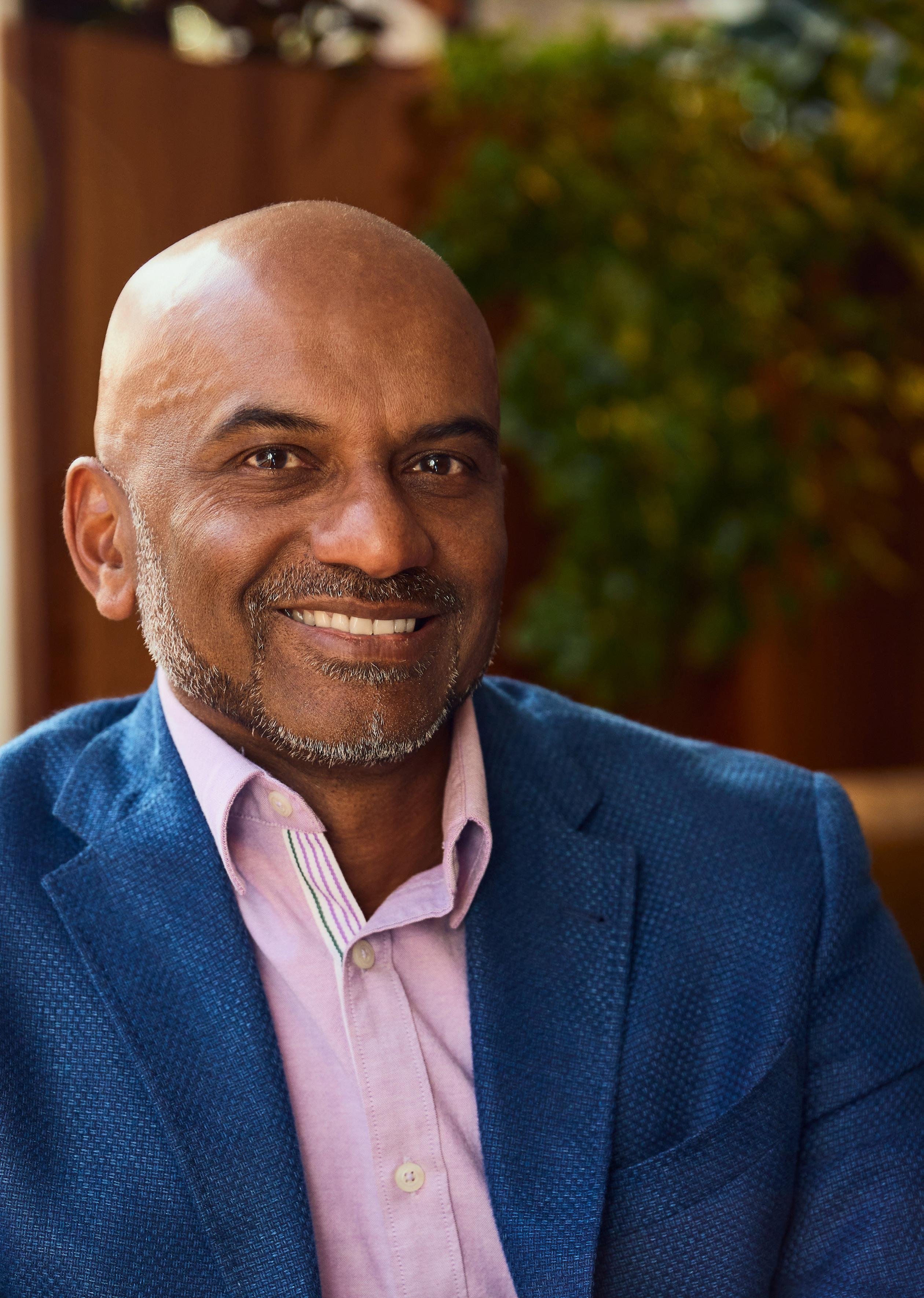




Vinod Kumar on Leading with Curiosity, Clarity, and Courage at Canva

Shaping Procurement’s
Louis Chandor on Curating Europe’s Leading Procurement Agenda at ProcureCon EU

Driving Excellence Behind the Scenes
Louise Erasmus on Strategic Procurement at Rohloff Group
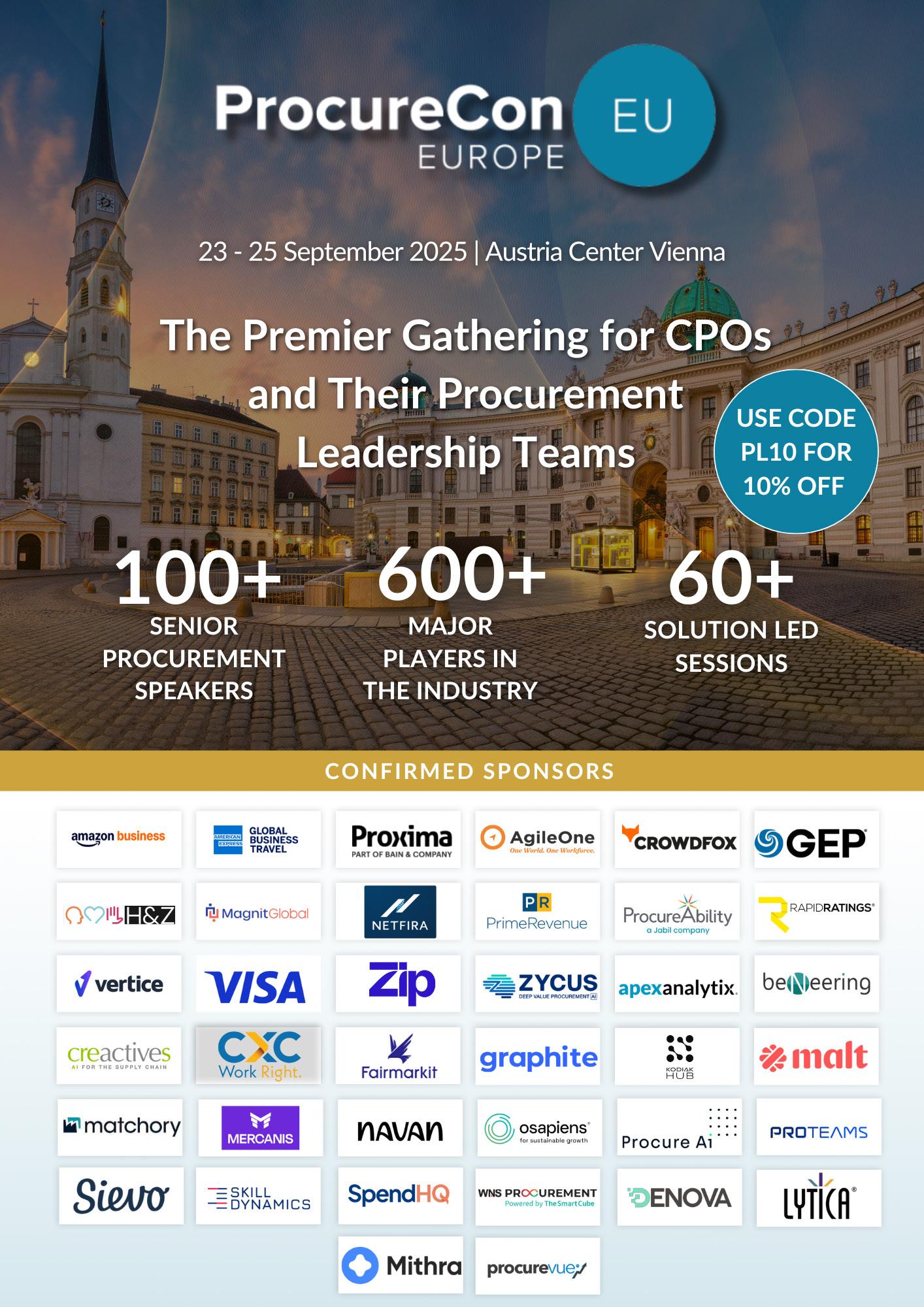
Dear Readers,
Welcome to the latest edition of The Procurement Ledger, where we continue to spotlight the leaders redefining procurement as a driver of strategic value, innovation, and resilience.
Our front cover feature takes us inside Canva, where Technology Sourcing Lead Vinod Kumar shares how curiosity, clarity, and courage are powering procurement in one of the world’s most creative and fast-paced companies. His insights reveal how authentic relationships, smart vendor partnerships, and a future-focused approach are enabling scale and impact.
Iwan Kwak of Calix offers a masterclass in building a resilient, tech-enabled sourcing function, leveraging AI, risk intelligence, and collaboration to stay ahead in a rapidly changing broadband market. Philip Douglas of Compleat Software explores how intelligent automation and AI are transforming the procure-to-pay landscape, delivering efficiency and empowering finance teams.
Louis Chandor of ProcureCon EU takes us behind the scenes of one of Europe’s leading procurement events, while Welthungerhilfe Malawi’s Head of Procurement and Logistics, Evance Ziwa Kalepa shows how ethical, localised sourcing is driving impact in humanitarian operations. In hospitality, Sageer Patel shares how he delivered procurement excellence across the simultaneous openings of the Marriott Marquis Dubai Creek and Hilton Dubai Creek Residences.
This edition also features powerful industry perspectives. Sam Achampong of CIPS sets out a practical blueprint for embedding ESG and ethics into procurement. Angelos Gregoriades demonstrates how structured data, fit-for-purpose tools, and a commercially minded approach elevate procurement performance through transparency, supplier evaluation, risk mitigation, sustainability insights, and predictive analytics. Mohamed Berrechid of TAQA Morocco outlines how strategic procurement supports energy transition and operational resilience.
From Javad Mohamaddi at Mammut Group on cross-industry procurement leadership, to Louise Erasmus at Rohloff Group on enabling growth across one of Africa’s largest KFC franchise networks, and Mario Khalil at Anghami OSN+ on strategic procurement in the streaming sector, each story reflects the diverse challenges and opportunities shaping our profession today.
We also speak with Dirk Guinan of AVM Green Tape on empowering SMEs through inclusive digital procurement, Karthik Rama “The Procurement Doctor” on diagnosing and solving complex procurement challenges, and Erik Drown of Select Technology on building resilient supply chains through strategic sourcing and partnership.
As always, this edition is packed with actionable insights, bold ideas, and the voices of leaders who are shaping the future of procurement. Enjoy the read!

EDITOR
Christopher O’Connor
CREATIVE DIRECTOR
Martyn Oakley
DESIGN SUPPORT
James Pate
SOCIAL MEDIA MANAGER
Summer Buisson
PROJECT DIRECTORS
Phillip Forde
Denitra Price
Cisco Loevendie
PRODUCTION MANAGER
Ewa Piwoni
No.159, Field Maple Barns, Weston Green Road, Weston Longville, Norwich, Norfolk, NR9 5LA
ACCOUNTS
Emilio Vences
Joseph Heaton
MANAGING DIRECTOR
Stuart Irving
CHIEF OPERATING OFFICER
Fabian Stasiak
CHIEF EXECUTIVE OFFICER
Alex Barron
If you would like more information about ways in which The Procurement Ledger can promote your business please email | info@theprocurementledger.com
The Procurement does not accept responsibility for omissions or errors. The points of view expressed in articles by attributing writers and/or in advertisements included in this magazine do not necessarily represent those of the publisher. Any resemblance to real persons, living or dead is purely coincidental. Whilst every effort is made to ensure the accuracy of the information contained within this magazine, no legal responsibility will be accepted by the publishers for loss arising from use of information published. All rights reserved. No part of this publication may be reproduced or stored in a retrievable system or transmitted in any form or by any means without the prior written consent of the publisher.
Vinod Kumar on Leading with Curiosity, Clarity, and Courage at Canva
Iwan Kwak on Building a Resilient, Tech-Enabled Procurement Future at Calix
EXECUTIVE INSIGHT: ANGELOS GREGORIADES
From Insight to Impact: Angelos Gregoriades on Elevating Procurement Through Data and Analytics
Driving Financial Efficiency Through Innovation: A Conversation with Philip Douglas, CEO of Compleat
Shaping Procurement’s Future: Louis Chandor on Curating Europe’s Leading Procurement Agenda at ProcureCon EU
WELTHUNGERHILFE
Procurement for Impact: Building Ethical, Localised Supply Chains at Welthungerhilfe Malawi
JEWEL OF THE CREEK
Hospitality by Design: Sageer Patel on Delivering Procurement Excellence Across Dual Brand Openings
EXECUTIVE INSIGHT: SAM ACHAMPONG
Embedding Purpose into Procurement: Sam Achampong on ESG, Ethics, and Sustainable Leadership
ROHLOFF
(KFC)
Driving Excellence Behind the Scenes: Louise Erasmus on
Procurement at Rohloff Group
Driving Strategic Procurement Across Industries: Javad Mohammadi on Leading Transformation at Mammut Group
AFFNO VIRTUAL MARKETS (GREENTAPE)
Scaling Smart: Dirk Guinan on Leading Green Tape’s SME-Focused Procurement Transformation
Diagnosing Procurement with Precision: Karthik Rama on Transformation, Technology, and Trust
ANGHAMI OSN+
Procurement with Purpose: Mario Khalil on Driving Strategic Value at Anghami OSN+
From the Field to the Frontline: Erik Drown on Strategic Sourcing, Resilience, and the Future of Supply Chains
Powering Procurement Excellence: Mohamed Berrechid on Strategic Sourcing Leadership at TAQA Morocco




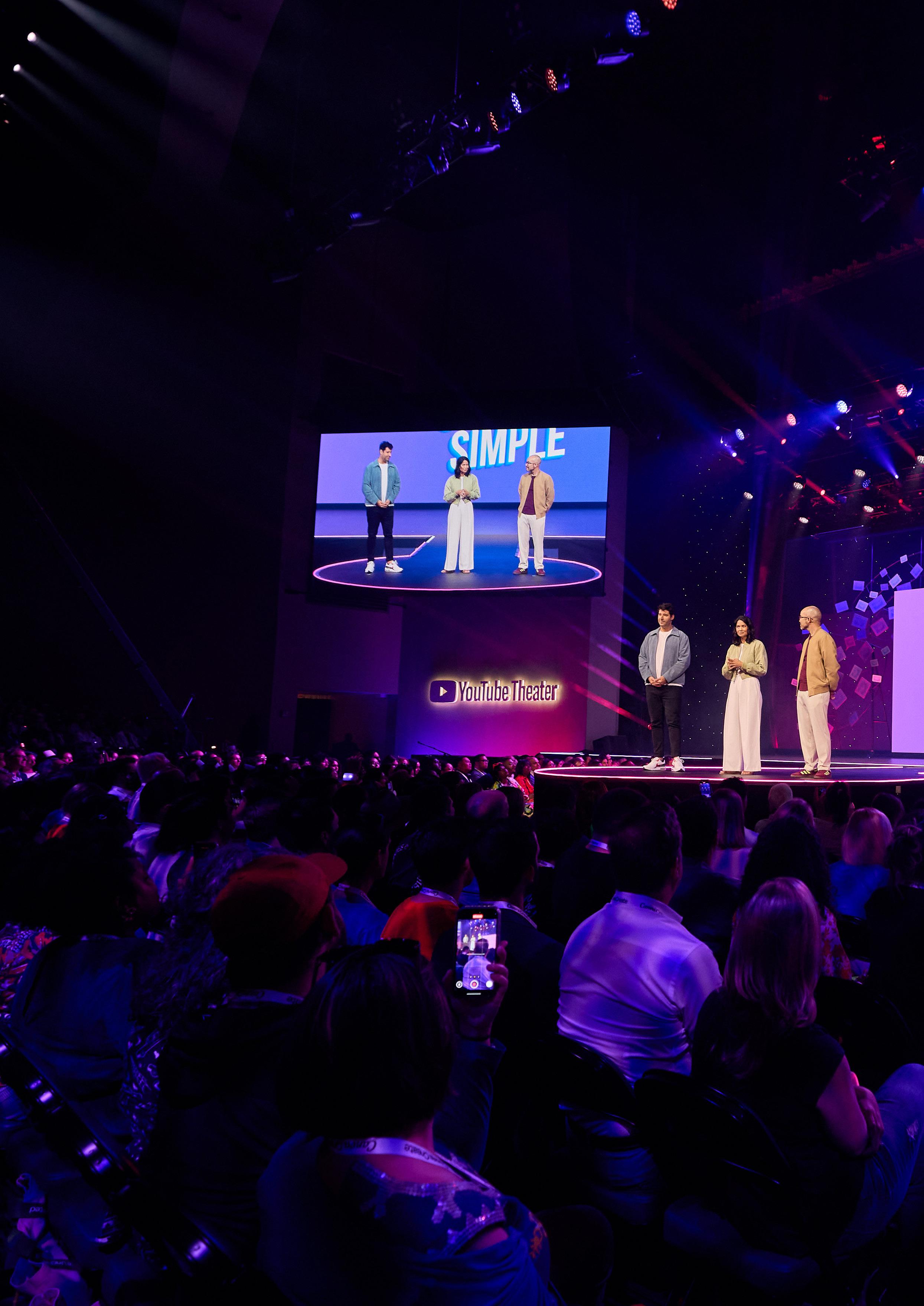




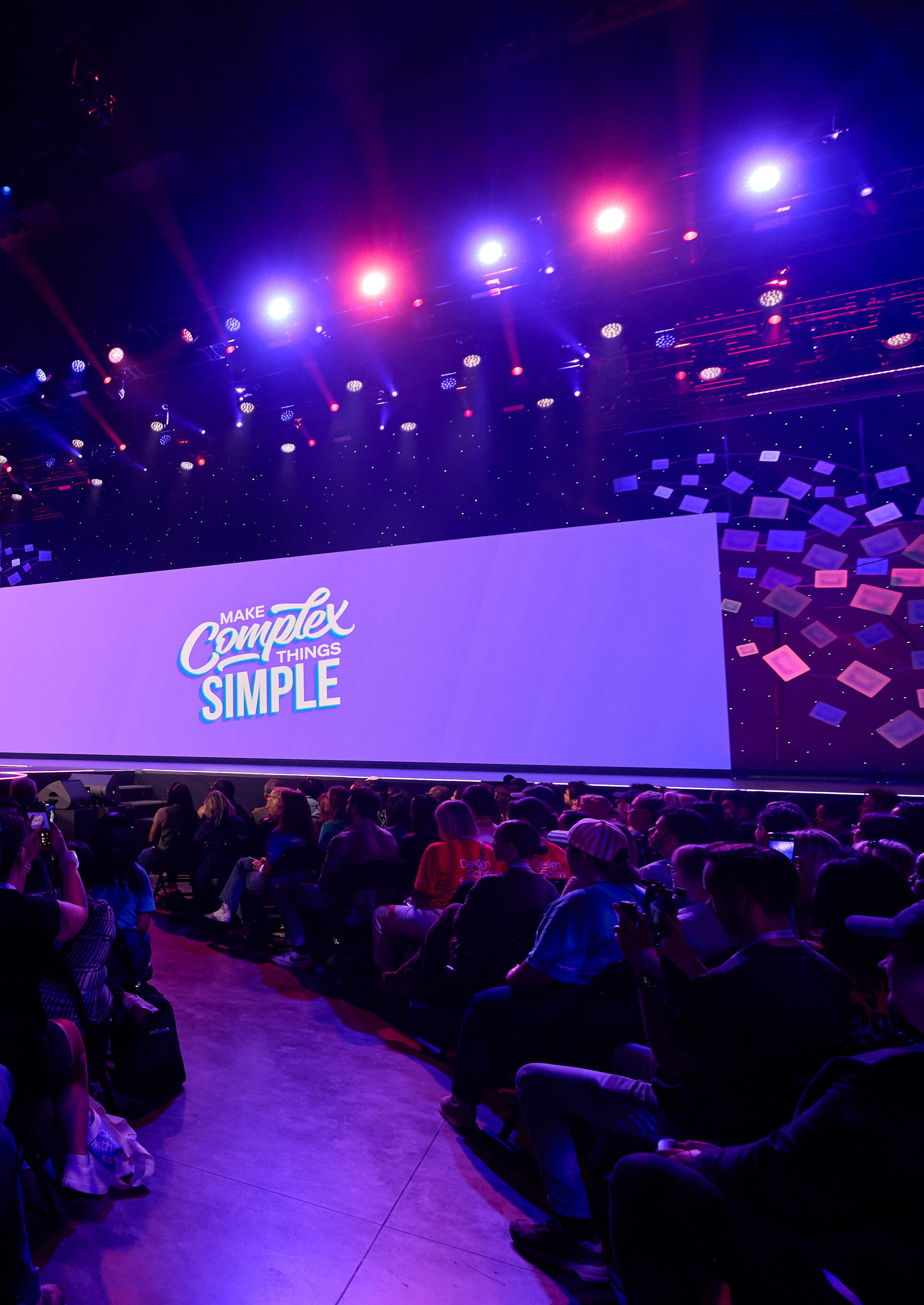
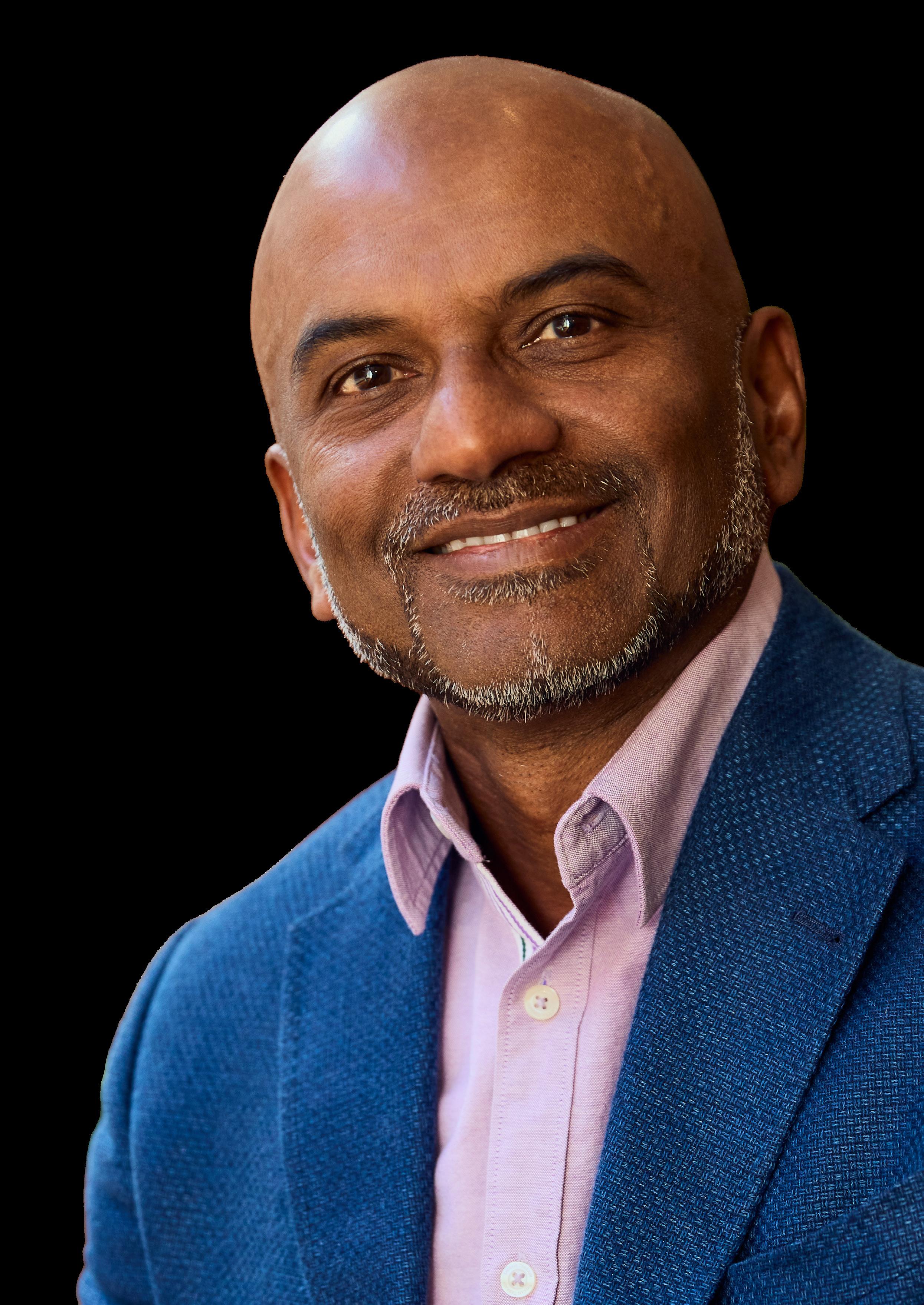


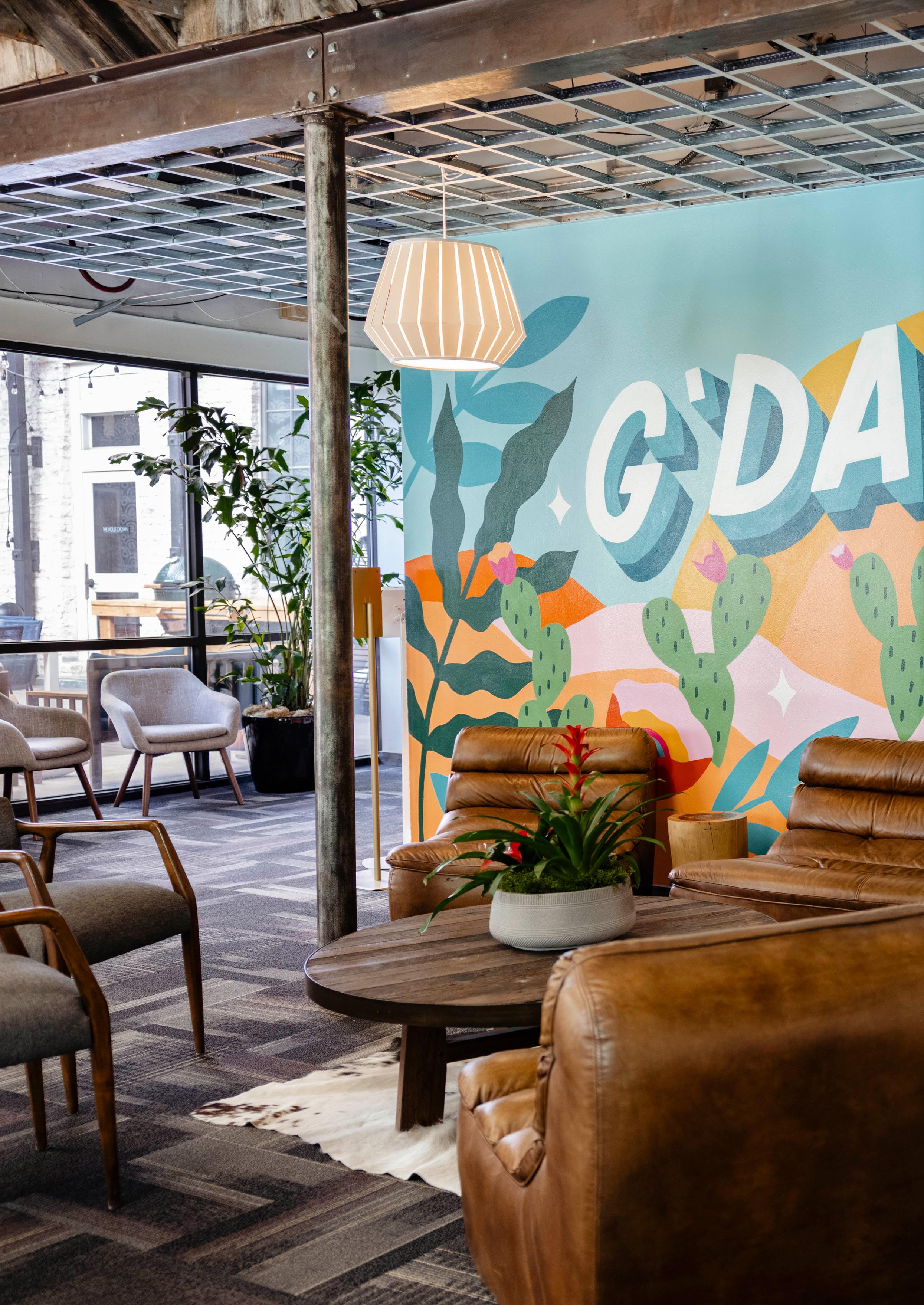
In a company where creativity and speed drive everything, from design to deployment, procurement must do more than keep up; it has to lead. As Technology Sourcing Lead at Canva, Vinod Kumar has embraced this challenge head on. With a background that spans luxury hospitality, banking, and tech, Vinod brings a rare mix of customer centricity, commercial insight, and operational sharpness to the world of technology procurement.
In this interview, he shares how Canva’s fast paced, collaborative culture shapes his sourcing strategy, how AI is already transforming the way procurement adds value, and why building authentic relationships across the business matters more than ever. From navigating SaaS complexities to enabling scale through smart vendor partnerships, Vinod offers a grounded yet future focused perspective on what it really takes to lead procurement in one of the world’s most dynamic tech companies.

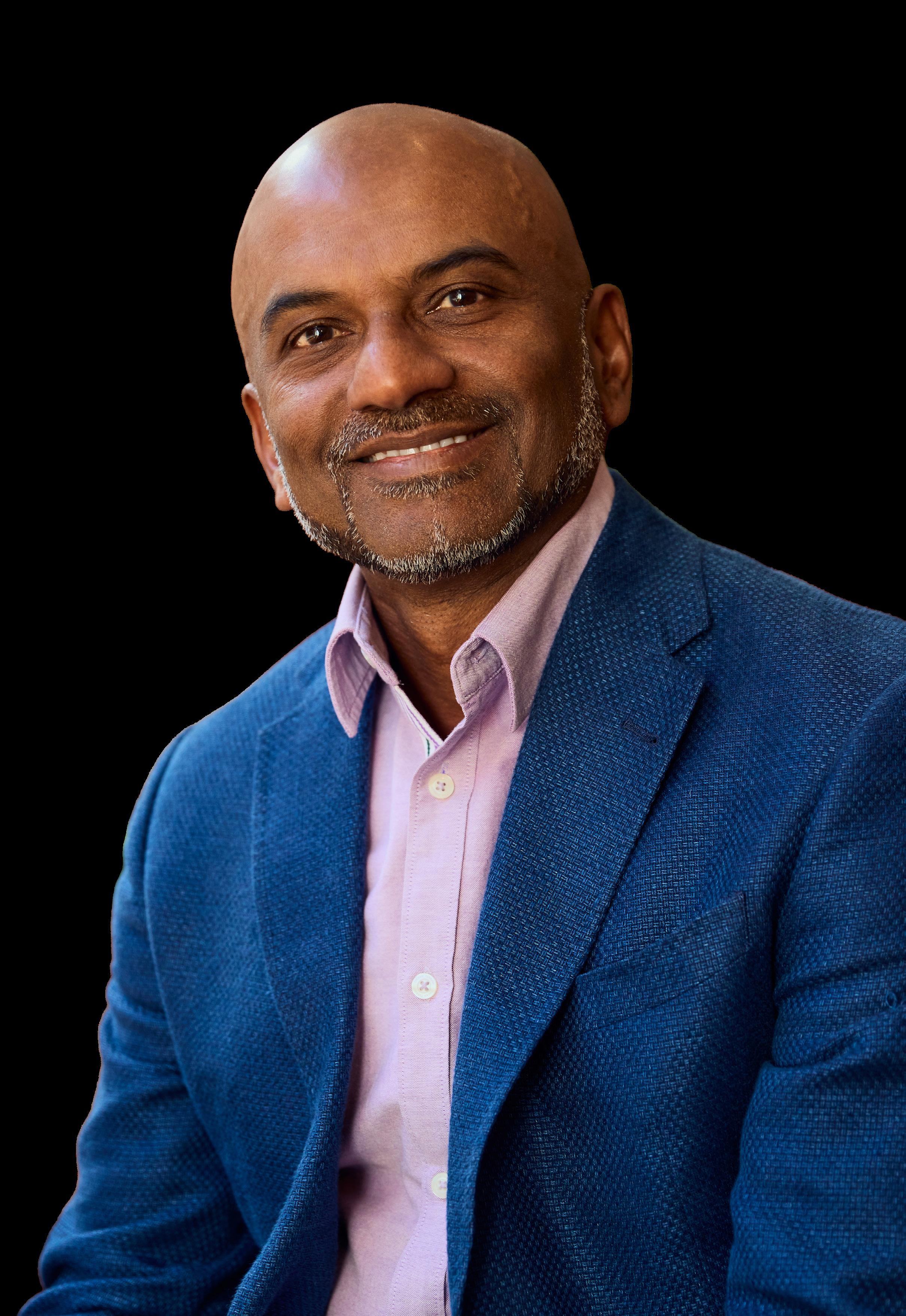

Can you share your career path and what led you to your current role as Technology Sourcing Lead at Canva? What experiences have most influenced your approach to technology procurement?
I started my career in luxury hospitality, working across India, the Middle East, and on cruise lines, an experience that instilled in me a deep focus on customer centricity, cost consciousness, and operational excellence. After a decade, I moved to Australia with the goal of transitioning into the corporate world. I joined one of the country’s largest banks to help transform its Corporate Services team.
That role led me to manage an accelerated supplier consolidation program following a major M&A, and eventually into technology procurement after navigating a particularly challenging software audit. Since then, I’ve led complex negotiations with major software vendors, service integrators, and cloud providers, always with a focus on creating long term value.
Looking back, three key experiences have shaped my procurement approach. Hospitality taught me to always put the customer first. That principle now guides how I design procurement processes— building everything around what internal users truly need, while aligning with the company’s broader strategy. I’ve also learned that success in procurement isn’t about squeezing vendors; it’s about understanding usage patterns and unlocking real ROI. And finally, working at Canva has shown me how essential it is to stay tech savvy and market aware. In a fast growing tech company, procurement must enable innovation, not slow it down.

I wanted to join a company that moves fast, solves meaningful problems, and gives me the freedom to truly own my work. Canva delivered on all of that—and more.
The first thing that drew me in was the culture. It’s young, dynamic, and deeply collaborative. Everyone thinks like a founder—bold, curious, and unafraid to challenge the status quo. There’s no red tape and no sacred cows. We set a high bar, celebrate wins loudly, and always push for progress over perfection.
That mindset is matched by the scale of what we’re building. Over 2430 million people use Canva each month, with more than 35 billion designs created to date. We’re also one of the top AI design platforms globally—our AI tools have already been used over 18 billion times. As Canva expands into the Enterprise space—with customers like Salesforce, DocuSign, and eXp Realty embracing Canva Enterprise —we’re tackling even more complex and impactful challenges.
From a procurement perspective, that means operating at the intersection of velocity, innovation, and real impact. We’re not just ticking boxes—we’re helping shape the future of how people design, collaborate, and create. That’s what makes coming to work every day genuinely exciting.




With the Snowflake Platform and AI Data Cloud
Canva has come a long way from its humble beginnings in Perth, Western Australia. Since its launch in 2013, Canva has established itself as the leading visual communication platform now serving more than 240 million monthly active users and generating more than USD$3 billion in annualised revenue.
Central to this success is a strong culture of data-informed decision-making.
Data is integral to smart decision-making across the organisation, from individual feature launches to executive strategy and development.
However, Canva’s data architecture wasn’t always optimised to support rapid growth. In its early stages, analytics and AI/ML workloads often required switching between multiple platforms to complete tasks, making the process complex and time-consuming. By leveraging Snowflake’s ML capabilities, it has been able to reduce this complexity and streamline certain workflows.
To achieve its mission of empowering the world to design, Canva needed to consolidate data management and utilisation into a single, highly scalable solution.
Through an evaluation, Canva determined the Snowflake platform and AI Data Cloud delivered reliability, flexibility and functionality. It was also easy to use and could grow to support Canva’s flourishing business.
The Snowflake product roadmap also incorporated a range of AI-powered features that could help Canva maximise the value of data to marketing and other functions across the business.
Having quickly built trust internally in the Snowflake platform and AI Data Cloud, Canva now uses a range of Snowflake features to accelerate global growth and product velocity. These include Snowpipe for real-time data ingestion and Cortex AI for business-to-business lead routing.
With Snowflake, Canva established a scalable data architecture that supported the business’s appetite for innovation. The platform and AI Data Cloud enabled Canva to continue making sense of data as it increased in volume and complexity. At the same time, the business was able to maintain the efficiency and performance of its systems.
Canva is now poised to push the boundaries of AI and analytics with the Snowflake platform and AI Data Cloud. This means using Snowflake to tackle bigger questions at a lower cost, address more complex problems faster, and answer questions with greater certainty.
To meet these challenges, Canva is testing a range of Snowflake AI capabilities, including Cortex Analyst, a managed, LLM-powered Snowflake Cortex feature that enables organisations to create applications that answer questions based on structured data in the Snowflake platform.
Canva is particularly excited about the opportunities presented by Cortex AISQL to use natural language in SQL queries. With the AI_CLASSIFY function, the business can understand core messages, classify calls to action and identify how visually engaging an ad is, all in a few lines of SQL. According to Canva team members, early signs are that the business can understand and scale thousands of ads faster.
These innovations build on a range of rich use cases enabled by the Snowflake platform and AI Data Cloud at Canva. For example, the business is using Snowflake to optimise B2B sales and marketing activities, including lead routing, scoring and attribution. With this robust data foundation, the business has expanded from serving primarily individual creators to delivering an enterprise-grade solution, Canva Enterprise, that services companies such as Salesforce, HP Inc. and Expedia.
The Snowflake platform and AI Data Cloud also enable Canva to validate development at scale, accelerating the delivery of features and enhancements to its hundreds of millions of users. This data-driven approach powers an extensive roadmap for the development of products such as the recently launched Canva Sheets, a visual-first spreadsheet.
Data flowing through Snowflake from Google Analytics and other sources provides rich insights into user behaviour and preferences that inform Canva’s product development process.
Meanwhile, the unified view of user data provided by Snowflake provides Canva with a better understanding of individual preferences, enabling the development of powerful personalisation features. These include AI-powered design style recommendations that suggest colours, fonts and layouts based on users’ previous behaviours and design preferences.
In addition, the Snowflake platform and AI Data Cloud empower Canva to maximise marketing return on investment by optimising marketing spend across a range of channels. With these analytics capabilities, Canva can access the insights to reach, engage and adapt campaigns and assets for local markets.
Further, analysing user data with Snowflake through AI and integrations with Claude, Llama and OpenAI enable more granular customer segmentation. With this enhanced understanding, Canva can deliver more relevant and personalised experiences to business customers.
A reliable, AI-powered data foundation is crucial for Canva to understand its users and make informed decisions about adding new capabilities to its visual communication platform.

As the Technology Sourcing Lead, how do you align Canva’s technology procurement strategies with the company’s mission to empower everyone to design?
Canva’s mission is to empower everyone to design and that means technology procurement can’t become a roadblock to innovation.
Our strategy is straightforward: be a trusted partner, understand what teams actually need, and then step back, while keeping the right guardrails in place.
We take a growth-first approach. We’re not just negotiating for today; we’re planning for the millions more people who will use Canva tomorrow. That means building flexible, scalable agreements that won’t hold us back as we grow.
Second, we aim to make procurement as seamless as possible. While some friction is inevitable in a fast-moving environment, our goal is to eliminate unnecessary hurdles. We’ve simplified approvals and created frameworks that empower teams to make swift, sound decisions.
Finally, we prioritise real partnerships not just vendor relationships. We look for partners who share our values and vision. In some cases, we’ve even invested in these partnerships because we believe in their long-term potential.
At Canva, procurement is a catalyst, not a blocker. My role is to ensure our teams have what they need to keep pushing forward—so anyone, anywhere, can design with ease.

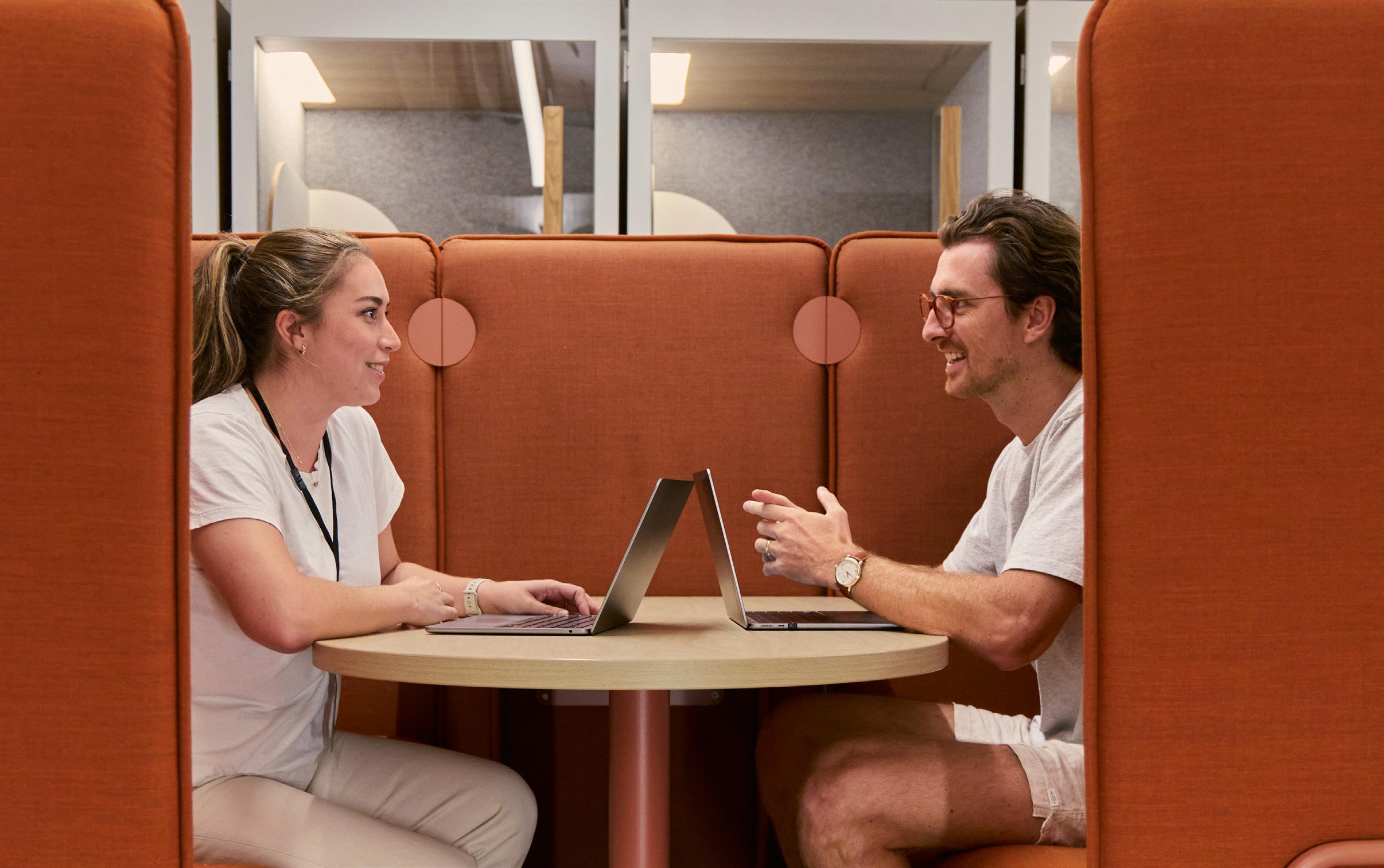
Given Canva’s extensive use of SaaS solutions, what are the primary challenges you face in SaaS procurement, and how do you address them to ensure optimal value and compliance?
As a born-in-the-cloud company, SaaS has always powered the way we work—giving our teams instant scalability and access to world-class tools. But after a decade of rapid growth, we’ve also learned that the convenience of SaaS comes with its own set of challenges, particularly around cost visibility and control.
AI-driven and usage-based pricing models make forecasting difficult. SaaS and cloud costs are becoming increasingly intertwined. And with every team able to spin up their own tools, fragmentation and security risks begin to scale quickly.
We’ve addressed this by focusing on volume right-sizing, buying only what we need, when we need it—and by building a strong Cloud FinOps capability that helps us surface the true cost of our technology decisions.
Our engineering culture is also a major strength. We know what good looks like and use that expertise to negotiate better deals. On the compliance side, we work closely with our Security-Trust and Legal teams, using automation and proactive risk assessments to stay ahead of potential issues. SaaS isn’t going anywhere but getting the most out of it means treating it like a strategic investment, not just a convenience.
Canva has come a long way from its humble beginnings in Perth, Western Australia. Since its launch in 2013, Canva has established itself as the leading visual communication platform now serving more than 240 million monthly active users and generating more than USD$3 billion in annualised revenue.
Central to this success is a strong culture of data-informed decision-making.
Data is integral to smart decision-making across the organisation, from individual feature launches to executive strategy and development.
However, Canva’s data architecture wasn’t always optimised to support rapid growth. In its early stages, analytics and AI/ML workloads often required switching between multiple platforms to complete tasks, making the process complex and time-consuming. By leveraging Snowflake’s ML capabilities, it has been able to reduce this complexity and streamline certain workflows.
To achieve its mission of empowering the world to design, Canva needed to consolidate data management and utilisation into a single, highly scalable solution.
Through an evaluation, Canva determined the Snowflake platform and AI Data Cloud delivered reliability, flexibility and functionality. It was also easy to use and could grow to support Canva’s flourishing business.
The Snowflake product roadmap also incorporated a range of AI-powered features that could help Canva maximise the value of data to marketing and other functions across the business.
Having quickly built trust internally in the Snowflake platform and AI Data Cloud, Canva now uses a range of Snowflake features to accelerate global growth and product velocity. These include Snowpipe for real-time data ingestion and Cortex AI for business-to-business lead routing.
With Snowflake, Canva established a scalable data architecture that supported the business’s appetite for innovation. The platform and AI Data Cloud enabled Canva to continue making sense of data as it increased in volume and complexity. At the same time, the business was able to maintain the efficiency and performance of its systems.
Canva is now poised to push the boundaries of AI and analytics with the Snowflake platform and AI Data Cloud. This means using Snowflake to tackle bigger questions at a lower cost, address more complex problems faster, and answer questions with greater certainty.
To meet these challenges, Canva is testing a range of Snowflake AI capabilities, including Cortex Analyst, a managed, LLM-powered Snowflake Cortex feature that enables organisations to create applications that answer questions based on structured data in the Snowflake platform.
Scale thousands of ads faster with Snowflake
Canva is particularly excited about the opportunities presented by Cortex AISQL to use natural language in SQL queries. With the AI_CLASSIFY function, the business can understand core messages, classify calls to action and identify how visually engaging an ad is, all in a few lines of SQL. According to Canva team members, early signs are that the business can understand and scale thousands of ads faster.
These innovations build on a range of rich use cases enabled by the Snowflake platform and AI Data Cloud at Canva. For example, the business is using Snowflake to optimise B2B sales and marketing activities, including lead routing, scoring and attribution. With this robust data foundation, the business has expanded from serving primarily individual creators to delivering an enterprise-grade solution, Canva Enterprise, that services companies such as Salesforce, HP Inc. and Expedia.
The Snowflake platform and AI Data Cloud also enable Canva to validate development at scale, accelerating the delivery of features and enhancements to its hundreds of millions of users. This data-driven approach powers an extensive roadmap for the development of products such as the recently launched Canva Sheets, a visual-first spreadsheet.

What criteria do you prioritise when selecting technology vendors to partner with Canva, and how do you ensure these partnerships support the company’s growth and innovation goals?
There’s a saying: “Give me six hours to chop down a tree, and I’ll spend the first four sharpening the axe.” That mindset shapes how we approach vendor selection—the upfront work helps avoid downstream surprises.
The cheapest tool rarely delivers the best value, especially at our scale. We prioritise scalability without the drama, no surprise usage caps, rigid licenses, or inflexible terms that can’t adapt as we grow. A solution that works at 500 people needs to perform just as well at 5,000 and beyond.
We also look for a strong technical fit and a genuine partner mindset. Our engineering teams move quickly, so we need vendors who can keep pace and ideally grow with us. That often leads us to emerging tech companies where we’re among the first major customers. The shared ambition usually results in deeper collaboration than we typically see with larger, more rigid providers.
Security and compliance are table stakes, especially as we expand our AI capabilities. We also value cost transparency, seamless integration, and longterm alignment. But above all, we look for partners who make our teams more effective—not just better equipped.


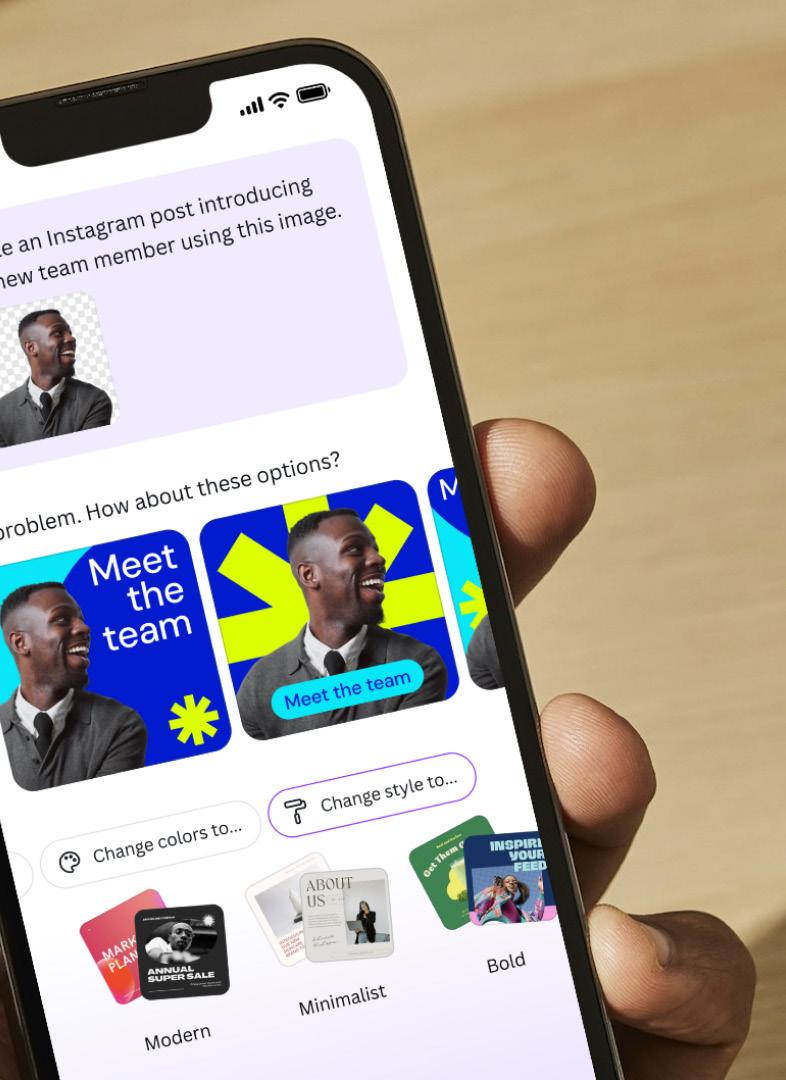


Organizations across industries face growing complexity in procuring and managing software, data, and professional services. A new study from Forrester reveals how organizations achieved significant time and cost savings through AWS Marketplace.
The Forrester Total Economic Impact™ of AWS Marketplace study provides data to show the time and cost savings achieved when organizations use AWS Marketplace to find, try, buy, deploy and manage cloud solutions. From Forrester, “The purpose of this study is to provide readers with a framework to evaluate the potential economic impact of AWS Marketplace on their organizations.”
To develop this framework, Forrester interviewed decision-makers at global enterprises and surveyed small to medium-sized business (SMB) and public sector respondents across global regions and industries who had experience using AWS Marketplace. Forrester aggregated the experiences of the interviewees and combined the results into a single composite organization that is an enterprise organization with 10,000 employees and revenue of multiple billions per year.
Key findings based on the composite organization include:
• 377 percent return on investment (ROI), with payback within 6 months
• 70 percent reduction in solution discovery time
• 60 percent faster procurement processes
• 30 percent acceleration in time-to-market with deployment efficiencies
Beyond process improvements, organizations reported cost savings through spending in AWS Marketplace, which was enabled through promotional offers, free trials, and pay-as-you-go pricing. These benefits might scale based on the number and size of transactions when using AWS Marketplace.
Alongside the benefits highlighted from the composite organization, this study surveyed 419 SMBs and public sector organizations across the globe. The survey found that these organizations also reported shorter pre-purchase time, faster procurement cycles, and cost savings.
Based on interviews with six representatives from six organizations and a survey of 419 decision-makers, Forrester created a composite organization and concluded that AWS Marketplace provides buyers the following financial impact over a three-year period.

“AWS Marketplace improves the productivity of various teams because it provides a single pane of glass view into questions about our current vendors such as our contract terms and conditions and payment schedules. It provides us with financial controls because we know that every purchase has to go through a well-defined process centered around AWS Marketplace.”
“We needed one operational role to ensure we were timely with our renewals, so we saved at least one senior headcount with AWS Marketplace ”
“Because we’re buying development tools through AWS Marketplace, they are already there and installed. Time to market is faster by between 20% and 30%. I would also say we saved internal headcount costs ”
with AWS Marketplace.

Can you share insights into your approach to negotiating technology contracts? What strategies have you found effective in achieving favorable terms for Canva?
Honestly, the best negotiations start long before you’re in the room. It’s less about being tough at the table and more about doing your homework—understanding your goals, the market, and the other side’s levers.
I begin by getting clear on our business priorities, growth plans, and deal-breakers. Then I dive into the market—what’s available, what the tech actually delivers, and what likely drives the vendor’s costs. That context helps me understand where there’s room to move.
Before any meeting, I align internally and get sign-off on what I can and can’t agree to. That allows me to make real-time decisions rather than deferring with a “let me get back to you.”
I’m a firm believer in “don’t ask, don’t get,” but I’m also ready to make smart concessions. The best deals aren’t one-sided. When both sides walk away feeling like they’ve won, that’s when you build real, long-term partnerships.
And ultimately, the strongest leverage comes from being willing to walk away, because you’ve already mapped out your limits.
How do you collaborate with other departments within Canva, such as IT, Legal, and Finance, to ensure a cohesive and efficient technology procurement process?
One of the biggest misconceptions in procurement is thinking we’re the decision-makers. We’re not, we’re facilitators, helping smart people make better decisions together.
At Canva, cross-functional collaboration comes naturally. Our culture is agile, fast-moving, and focused on progress over perfection. We use visual docs (made in Canva, of course) to align on ideas, decisions, and outcomes. Everyone contributes, Legal, IT, Finance, Security & Trust—so we’re drawing on collective wisdom, not just one perspective.
Our purchase workflow functions like a town square. All teams review requests through their expert lens in a transparent flow. If something stalls, it’s never a mystery, anyone can see what’s needed to keep things moving.
For larger purchases, we create dedicated channels with all stakeholders. Everything—questions, decisions, trade-offs—happens in one place. And when the deal’s done, we celebrate. A little recognition goes a long way in keeping people energised for the next big project.
The secret? Respect everyone’s expertise, make collaboration seamless, and always share the wins. That’s what keeps the engine running.
What measures do you implement to manage risks associated with technology sourcing, particularly concerning data security, compliance, and vendor reliability?
Risk management in tech sourcing isn’t about eliminating risk, it’s about understanding it and making smart trade-offs. With millions of users trusting us, we can’t afford to get this wrong. We’ve embedded risk assessment into our procurement workflow—not as a blocker, but as a way to move faster with confidence. Vendors are classified based on the type of data they’ll access. A design tool that interacts with user content is very different from a backend productivity app, and we treat those risks accordingly.
With AI vendors, we pay particular attention to privacy and data ownership. We want to be crystal clear: user content should never end up training someone else’s model. On the security front, we work closely with our Security & Trust team. Instead of overwhelming vendors with endless questionnaires, we focus on what matters most, encryption standards, data residency, incident response protocols. For cloud-native tools, we dig deeper into multi-tenancy models and data isolation.
Vendor reliability is about future-proofing. We evaluate financial stability, operational resilience, and how vendors have handled past outages or service disruptions. We know perfect security doesn’t exist—but transparency builds trust. We’d rather work with vendors who are honest about their limitations than those who overpromise.
Most risks aren’t technical, they’re communication failures in disguise. So we focus on clarity, alignment, and open dialogue from day one.
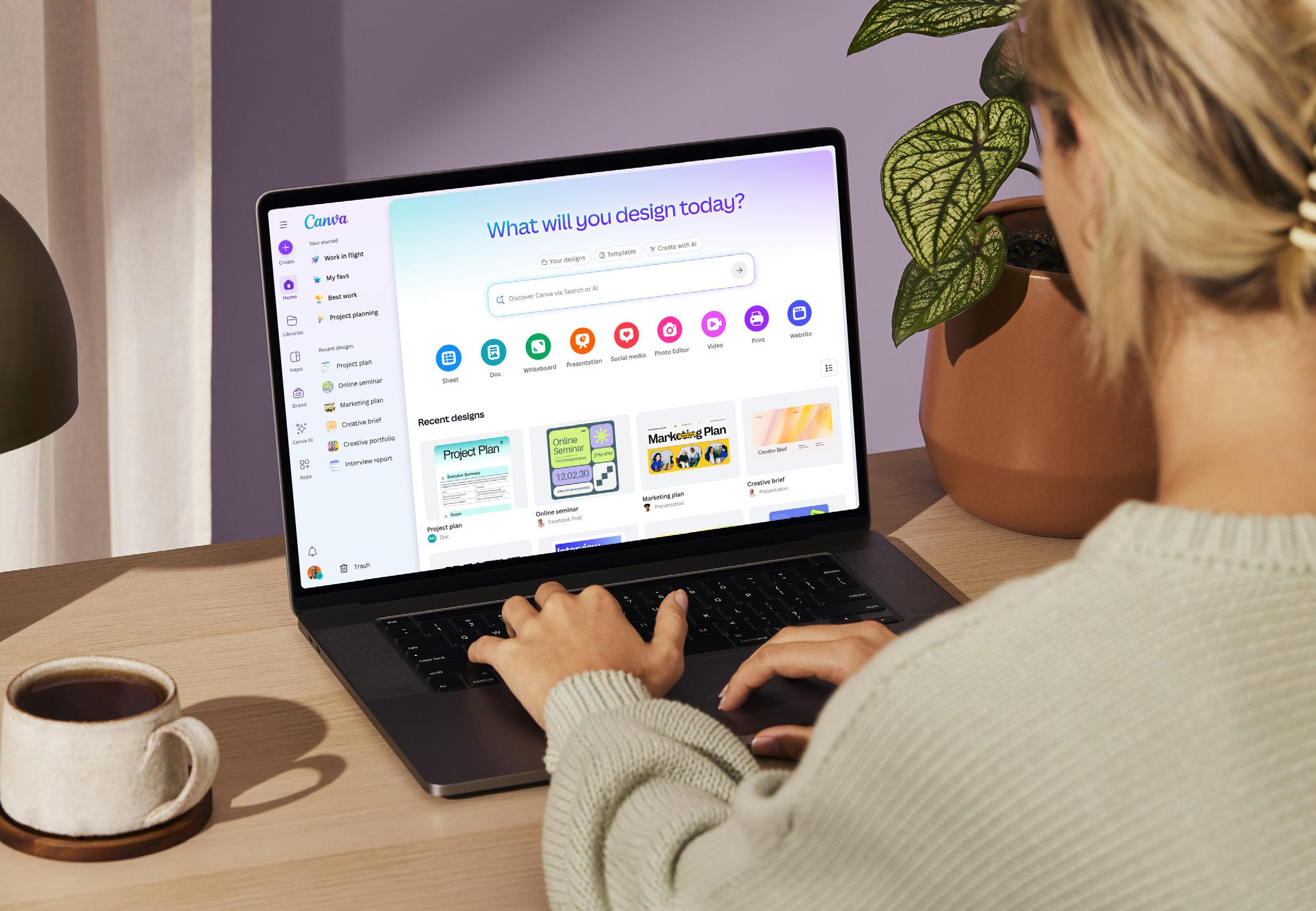
With the rise of AI and machine learning, how do you see these technologies influencing the future of procurement at Canva? Are there specific AI-driven tools or processes you are considering adopting?
AI is already beginning to reshape how we work in procurement, and at Canva, we’re genuinely excited about the potential it holds. We’re still early in the journey, but adoption has been fast and surprisingly smooth. We’re already using AI to review contracts more efficiently, boost team productivity, and gather sharper market insights. It handles much of the repetitive work, which frees us to focus on strategy, relationships, and better decision-making.
Looking ahead, one area we’re particularly excited about is agentic AI, tools that don’t just assist but act. We’re testing ways it could support smaller tasks, such as triaging purchase requests, comparing vendors, or kicking off low-risk renewals. These processes still involve human oversight, but the goal is to have AI handle more of the heavy lifting. We’re also exploring how AI can help us stay ahead of vendor risk, streamline documentation, and eliminate busywork throughout the sourcing lifecycle.
AI won’t replace the human side of procurement but it’s already making us sharper and more proactive. For us, it’s not about whether we’ll use AI, but how far we can take it responsibly and how quickly we can unlock real value.
What advice would you offer to professionals aspiring to lead technology sourcing in dynamic and fast-growing companies like Canva?
If you want to lead tech sourcing in a fast-growing company, get comfortable being uncomfortable. You’ll face problems with no playbook—and honestly, that’s the fun part. Start by getting curious about technology. You don’t need to know how to code, but you do need to understand how things work and why they matter. Spend time with engineers—they love talking about what they’re building, and those conversations will teach you more than any course ever could.
Build strong relationships across the business. Some of the best insights come from casual conversations. People are usually happy to share what they know if you show genuine interest. Always remember, you’re not just negotiating; you’re solving business problems. Be honest about what you don’t know. I’ve learned the most by asking questions, not by pretending to have all the answers.
And finally, invest in your people skills. Procurement is all about relationships. Great leaders know when to push, when to pause, and when to partner.
If you love variety, solving puzzles, and making a real impact, this is the role for you.

Canva is a trailblasing online design platform (launched 2013) offering intuitive, drag-and-drop tools for creating social media content, presentations, videos, and more. With a global user base surpassing 220 million and support for 100+ languages, Canva powers creativity for individuals, teams, and enterprises with both free and AI-enhanced premium offerings .

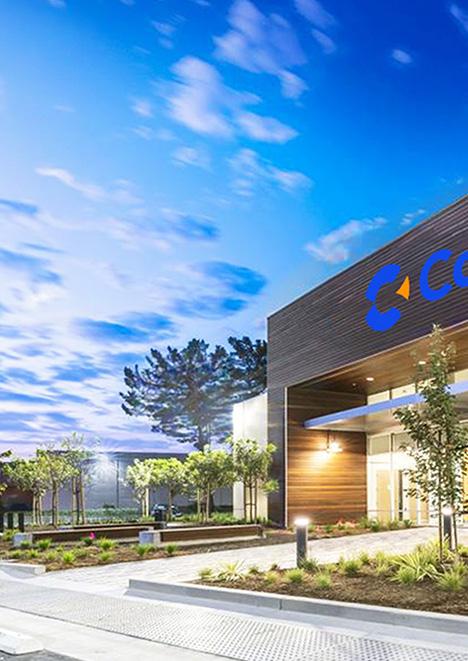
In an era where supply chain agility and innovation are more critical than ever, Iwan Kwak is leading the charge at Calix by reimagining what sourcing can and should look like. As AVP of Sourcing, he brings a career shaped by global operational expertise and a passion for continuous improvement. Under his leadership, the sourcing function has become a strategic enabler, supporting Calix’s mission to help broadband service providers simplify, innovate, and grow communities.
In this interview, Iwan shares how his team is leveraging AI, risk intelligence platforms, and cross functional collaboration to drive greater value, compliance, and sustainability. From proactive supplier risk mitigation to long term partner development and future focused investments in generative AI, he offers a clear eyed view of what it takes to stay ahead in a fast moving, highly technical procurement landscape.

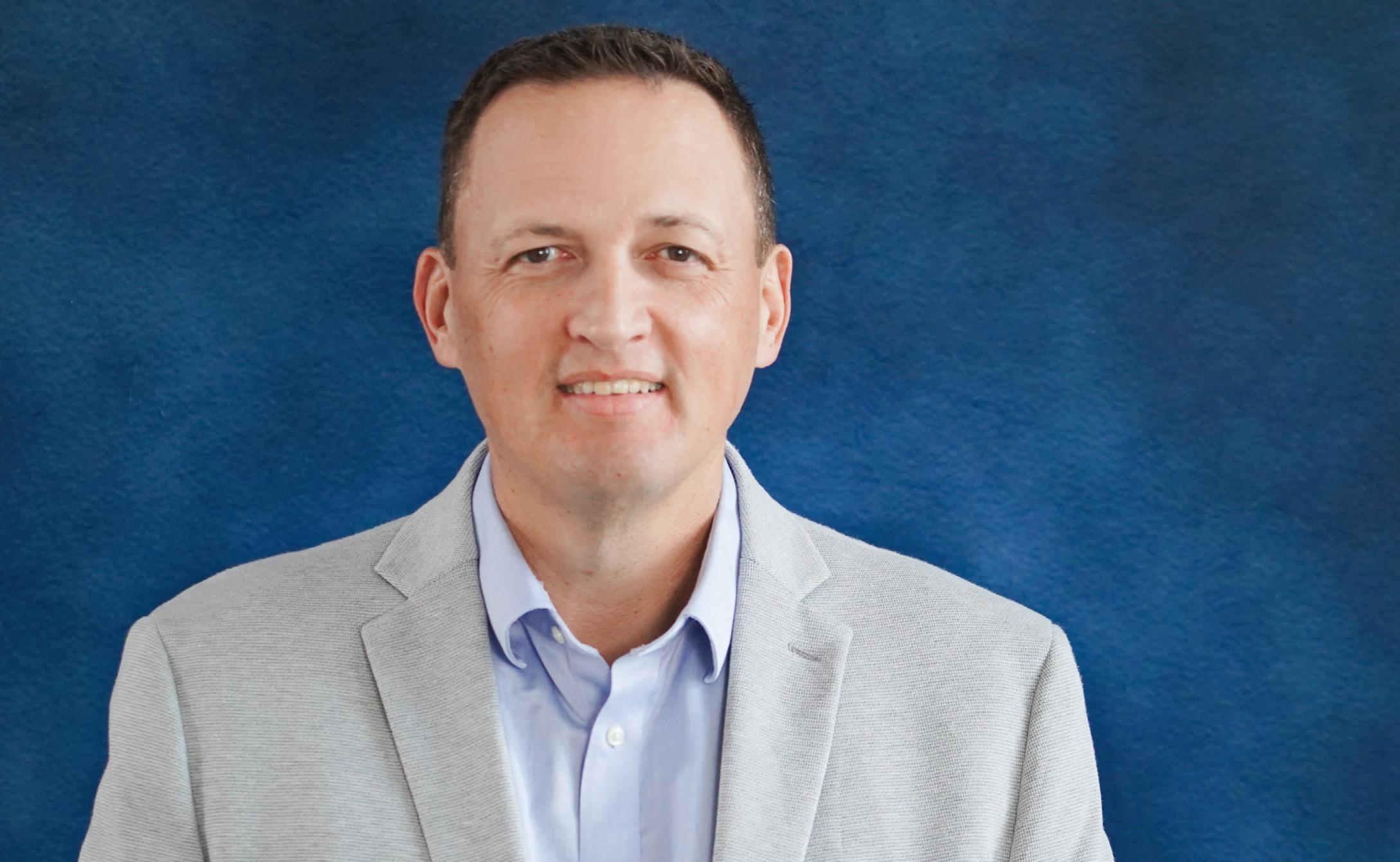
Can you share your career path and what led you to your current role as AVP of Sourcing at Calix?
I began my career in Customer Care with Lucent Technologies, followed by operational roles in supply chain, sales operations, material planning, fulfillment, and program management.
While most roles in the supply chain can be very gratifying, I gravitated early on toward Sourcing. It requires a person to gain expertise in multiple business areas and to build strong partnerships both cross functionally and with external third parties. My first sourcing role came in 2004, when Avaya centralised international procurement in the UK. In 2007, I relocated to the US and managed Avaya’s Contract Manufacturing business, followed by roles overseeing OEMs, raw materials, and NPI program management.
In 2016, I joined an embedded computing company in Oregon, leading the supply chain organisation. This was a great opportunity to put into practice everything I had learned throughout my career to date.
Talking to procurement leaders at cross industry events, I’ve come to really appreciate having landed in the technology sector. The constantly changing environment allows for continuous learning. For my next move, I knew I wanted to stay in tech but I was looking for a company with a growth mindset and the right culture. Calix checked all these boxes, and I was fortunate to have the opportunity in 2020 to lead Sourcing and Procurement Operations.
Calix supports a wide range of broadband providers from traditional BSPs like WWZ in Switzerland, to wholesale operators such as CityFibre in the UK, Eurofiber in Germany, to over the top experience providers like LitFibre. We work with municipal networks, tribal operators, and rural cooperatives. That variety means we must be globally scalable, regionally agile, and capable of supporting providers at very different stages of growth and complexity.
How does the Sourcing function at Calix support the company’s mission to help broadband service providers innovate to deliver experiences and grow value for the communities they serve?
The Calix mission is to enable broadband service providers (BSPs) of all sizes to simplify their operations, innovate for their subscribers, and grow value for themselves and their communities. Sourcing plays a pivotal role in aligning our suppliers to that mission. We help foster the right partnerships, ensuring that innovative technologies are delivered in a timely and cost competitive manner, while maintaining a strong focus on sustainability and efficiency across our supply chains.
We ensure access to forward looking solutions that BSPs can leverage to deliver differentiated value. These technologies support experiences across residential, business, and community markets, enabling smaller, rural communities to thrive. Many of our customers began as electric cooperatives. While they’ve evolved to deliver broadband connectivity, their core mission remains the same: to do good for their communities.
Sourcing at Calix identifies, evaluates, and collaborates with Product Line Leadership and Engineering to adopt innovative components and systems. With the right technologies and well developed partner relationships, we deliver impactful solutions that empower our BSP customers to simplify, innovate, and grow.
We also recognise the importance of sustainability for the communities we support. By prioritising environmentally responsible suppliers and materials, the Sourcing function helps our BSPs reduce their carbon footprint and promote green initiatives.
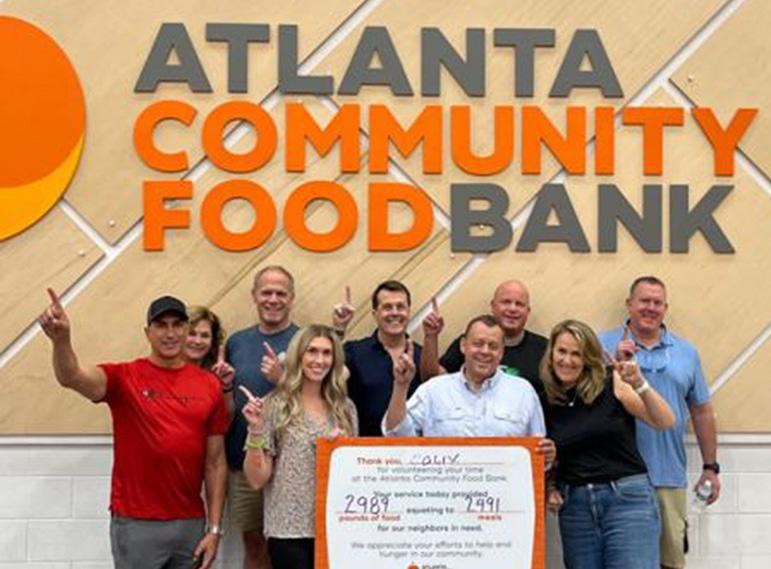
With Calix’s emphasis on empowering smart communities, what sustainable procurement practices have you implemented that align with broader environmental and social goals?
As part of our commitment to society and our people, Calix appointed Martha Galley as our Chief Sustainability Officer. Martha is a pioneer in broadband, known for her expert leadership in driving customer engagement through data driven strategies and a strong focus on the broadband experience. She brings strategic vision to ensure that sustainability is not only part of Procurement but embedded in everything we do at Calix.
Sustainability is a core element of our supplier onboarding process. Most Calix suppliers not only participate in EcoVadis self assessments but also receive recognition for completing training through the EcoVadis Academy. By partnering with EcoVadis, the world’s most trusted provider of sustainability ratings, we create transparency within our supplier network and work toward a more sustainable future for all.
We’ve made clear commitments across three focus areas. First, through leadership and compliance, Calix audits suppliers to ensure alignment with our Code of Conduct. Second, sustainability is embedded into every step of the supply chain, from onboarding to continuous performance reviews, fostering a culture of ongoing improvement. And third, our supply chain and sourcing managers are trained in sustainability and are empowered to innovate and improve products and processes.
We also provide our suppliers with access to the EcoVadis Academy and actively encourage them to use these tools to drive continuous improvement, focusing on areas such as environmental practices, labour and human rights, ethics, and sustainable procurement.
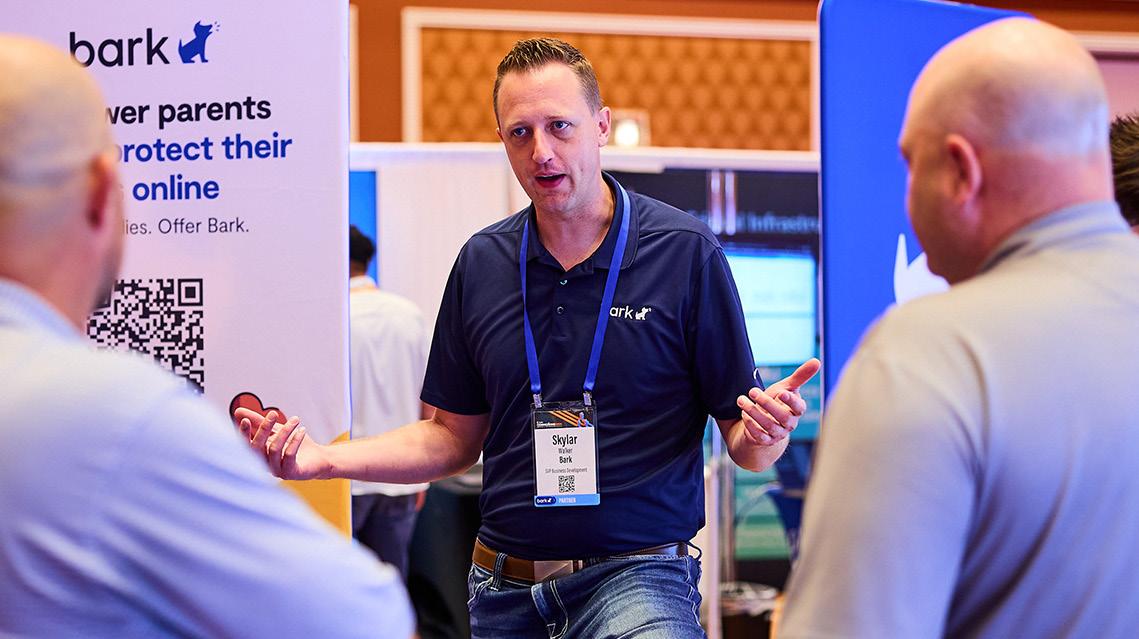

What strategies do you use to build and maintain long-term, value-driven relationships with suppliers in a highly technical and competitive landscape?
Building long term, value driven relationships is critical to maintaining a resilient supply chain. It begins with selecting the right suppliers, a task that is often more complex than it seems.
While the fundamentals like technical capabilities, quality, certifications, footprint, and financial stability are essential, once those appliances are checked, it ultimately comes down to relationship building. And like all meaningful relationships, it takes time, honesty, clear expectations, trust (with some degree of “trust but verify”), and frequent, open feedback.
We focus on maximising the time we spend with our suppliers. We want them to feel like an extension of our team because our success is their success. By sharing more about why we do what we do, we enable suppliers to suggest solutions we may not have otherwise considered, and to reframe discussions around cost reductions. For example, reducing costs enables us to sell more appliances, which ultimately results in more appliances for them to manufacture.
We’ve also designed our business performance scorecard to make it easier for suppliers to understand how they’re being evaluated. It allows them to see exactly where they stand and how they rank against others. This level of transparency has increased competition, boosted performance, and strengthened trust.
In the end, collaboration, clear communication, and mutual investment are key to fostering trust and achieving shared goals. These partnerships must be nurtured because when done right, they become a powerful source of competitive advantage and long term success.
How do you assess and mitigate supply chain risks, especially in the context of geopolitical tensions, component shortages, or regulatory changes?
Supply chain challenges are inevitable in today’s dynamic environment, but we manage them through proactive assessment, strategic mitigation efforts, and strong supplier collaboration. Continuous communication with our suppliers, who are upstream and often closer to potentially impactful events—ensures that we receive timely information to inform our Supplier Risk Management (SRM) strategies and address material shortages effectively.
Proactive risk management is part of our DNA. We’ve developed a dashboard that provides visibility into all risk areas critical to our operations. We also leverage tools from industry leading partners for business continuity planning, cybersecurity, ESG monitoring, and financial health, such as Rapid Ratings for financial analysis and Resilinc’s Resiliency Risk Score for operational insights. These tools proactively push risk data to our supplier managers so they can act quickly and with precision.
In 2021, we implemented Resilinc, a global leader in supply chain risk intelligence. Their autonomous AI driven solution helps predict disruptions, evaluate their impact, suggest response strategies, and support execution. With this platform, we often notify our manufacturers of potential risks to their operations before they’re even aware of them.
Alongside technology, we use traditional methods like product and raw material buffers, and have started expanding regional manufacturing. For Calix, supply chain risk management is not just an operational necessity, it is a strategic advantage in a volatile world.
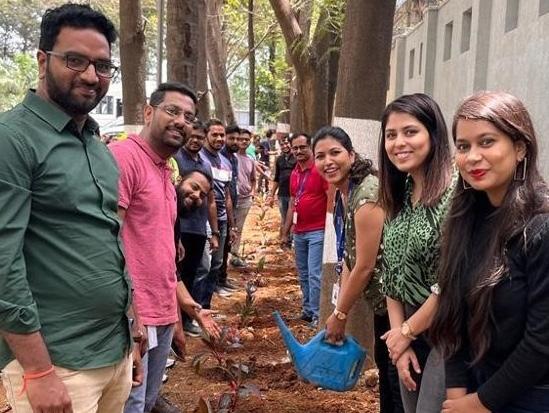

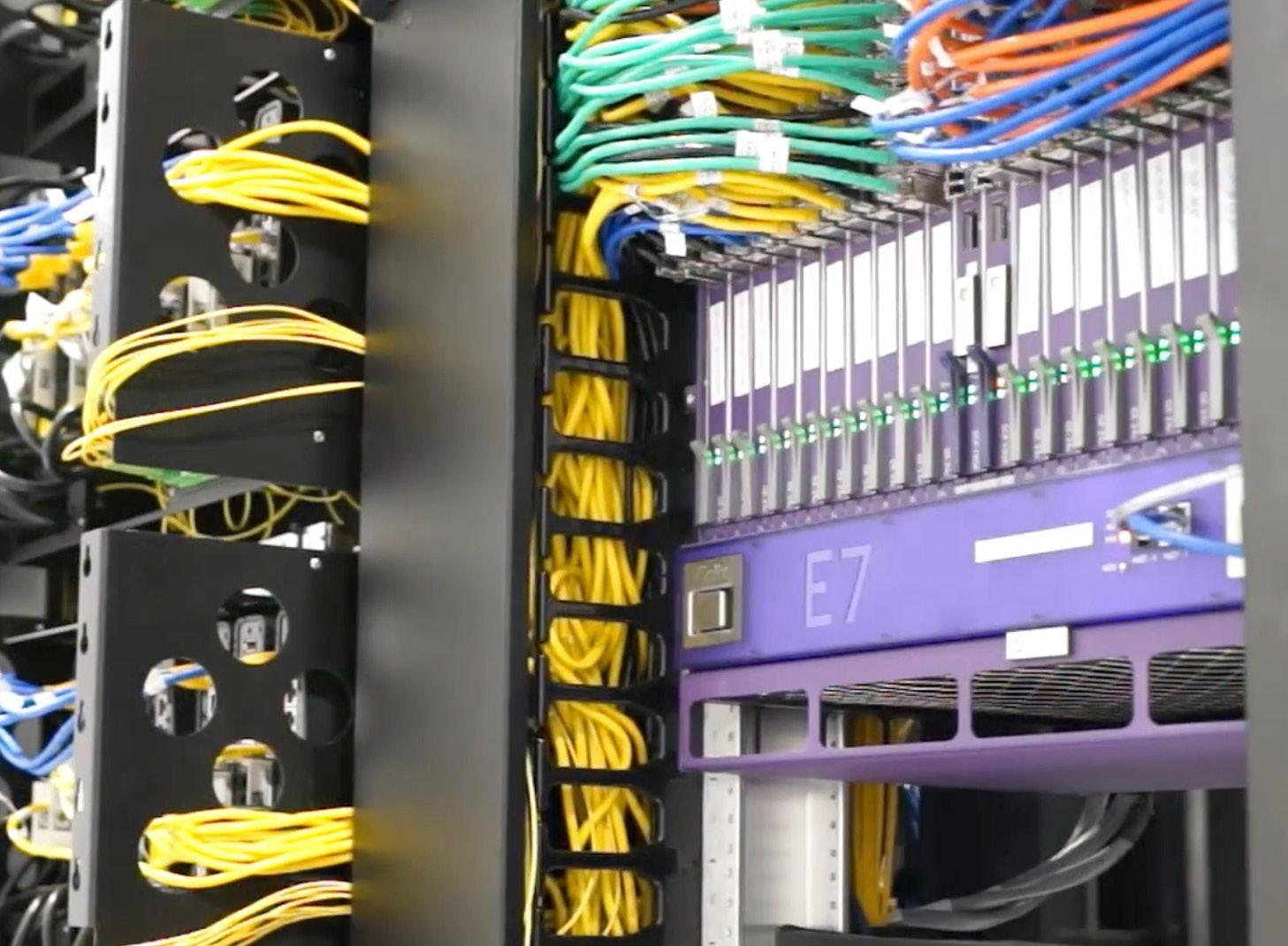
How has Calix integrated digital tools or platforms into its sourcing and procurement processes to improve efficiency, visibility, and compliance?
Process compliance is a critical component of procurement at Calix, and we’ve implemented a range of digital tools and third party services to automate compliance checks, ensuring that all sourcing and procurement activities meet our internal standards and ethical guidelines.
We leverage the Supply Chain Management module within our ERP software suite to simplify and accelerate supplier onboarding and procurement compliance. This system works in tandem with our Supplier Risk Management platform, allowing us to evaluate suppliers before they are approved for purchasing. Together, these tools not only ensure process compliance but also provide the visibility needed to identify opportunities for cost savings and process improvements.
Additionally, we use an AI supported contract lifecycle management platform for contract negotiations. This system streamlines document control, e-signatures, and secure digital contracts, while also offering analytics and automated alerts for both Procurement and Legal teams.
Can you discuss how Calix engages with strategic partners and suppliers to co-innovate or drive joint value creation in product development or supply chain initiatives?
Strategic collaborations thrive when built with a long term mindset. This level of commitment fosters deeper integration, greater innovation, and the ability to overcome challenges collaboratively.
By sharing our current product lifecycle, long term roadmap vision, and software ecosystem requirements with our ODM and silicon partners, we enable them to adjust development schedules and prioritise design features that align with our market and customer needs. This collaborative approach drives value in the form of increased customer retention and market competitiveness, while also ensuring meaningful value generation for our partners.
Our investments in risk mitigation tools such as Resilinc’s EventWatch also provide significant advantages to our contract manufacturers by alerting them to potential disruptions within their supply chains. These proactive insights allow all parties to respond quickly and efficiently, strengthening our collective resilience and agility.

How does your sourcing team stay agile and resilient in response to rapid market shifts, such as changes in telecom infrastructure needs or global logistics disruptions?
We continuously monitor changes in market dynamics to anticipate and respond effectively to new challenges. With limited resources, we rely on multiple digital platforms to push critical information to the right stakeholders, enabling faster reaction times to supply chain disruptions, geopolitical risks, and environmental impacts.
Business continuity planning is part of our annual planning cycle not just a check the box exercise. We conduct simulations to test our preparedness, and we expect the same from our suppliers. We don’t just ask for documented processes, we verify and test them to ensure real world effectiveness.
In today’s volatile global environment, scenario planning is a top priority. We proactively explore potential disruptions and build contingency plans in advance. Our digital platforms provide rapid alerts, so we make sure mitigation strategies are ready to activate as needed.
A well trained team is key to our resilience. Calix provides ongoing training in areas such as emerging technologies, negotiation techniques, and risk management, ensuring our sourcing professionals are equipped to handle complex challenges with confidence.
In 2024, Calix was ranked 16th out of 140,000 companies in the electronics, telecom, and semiconductor industries for supply chain excellence by Resilinc, a global leader in supply chain risk intelligence. This recognition reflects our proactive and holistic approach to building a resilient and agile supply chain.
We continuously monitor changes in market dynamics to anticipate and respond effectively to new challenges.
What initiatives do you have in place to ensure continuous learning, upskilling, and collaboration within your sourcing and procurement teams?
At Calix, we are committed to ensuring that employees continuously learn and grow throughout their careers. We recognise that skill development can take many forms, including formal education, hands on experience, feedback, and coaching.
We provide team members with a wide range of learning resources and subscriptions to help deepen their knowledge whether it relates to their current scope of responsibility or supports a desire to grow into new areas of the business.
Within the Sourcing and Procurement function, our entire Supply Chain organisation is provided with membership to the Association for Supply Chain Management (ASCM). This membership offers access to certifications and credentials that can be achieved through online courses and certificate programmes, supporting both professional development and industry best practice.


Looking ahead, what are your key priorities for evolving the sourcing function at Calix, particularly in areas like sustainability, digital transformation, or supplier collaboration?
I’m particularly interested in solutions that make greater use of artificial intelligence to process data and deliver insights, or even actions, in real time or near real time.
Accelerating supplier onboarding and controlling off contract spend are important goals. An AI driven solution that can integrate data sources and establish relationships across databases would provide much deeper insight into supplier disruptions, geopolitical risks, supply constraints, cost reduction opportunities, value engineering initiatives, and design input to support greater manufacturing automation and potential nearshoring strategies.
Generative AI has the potential to transform how we work. It can help automate tasks, analyse vast datasets, and support better decision making ultimately driving efficiency, cost savings, and risk reduction. I envision this capability enabling sourcing teams to conduct rapid should-cost analysis, perform early design iterations based on high level requirements, improve BOM grading for lifecycle and multi source resilience, and evaluate regulatory risks more effectively.
These are exciting times for sourcing, and with the increased flow of data and intelligence comes a new challenge: deciding how to harness that information and turn it into value generating actions for the business.

Calix is a cloud, platform, and managed services company helping broadband providers simplify operations, engage subscribers, and drive growth. Its end-to-end solutions empower providers of all sizes to leverage data, deliver exceptional experiences, and transform communities, supporting continuous innovation through a collaborative ecosystem focused on long-term success and value.

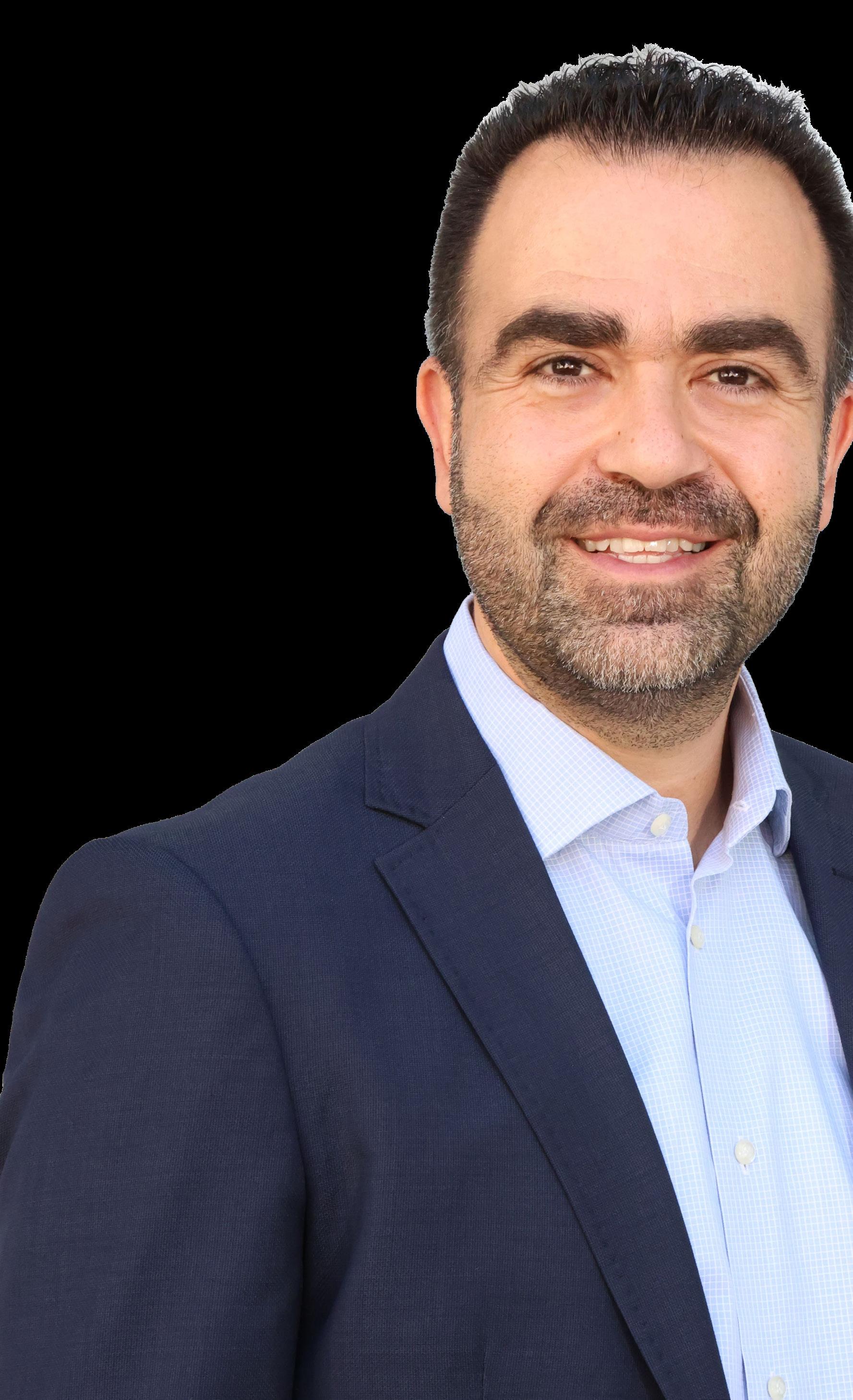


In today’s increasingly complex procurement landscape, data has evolved from a support function into a true strategic enabler. Drawing on his experience leading procurement analytics and operational excellence across multiple markets, Angelos Gregoriades, former Head of Procurement Excellence & Compliance at Coca-Cola Hellenic Bottling Company, shares how structured data, fit for purpose tools, and a commercially minded approach can drive meaningful value. From spend transparency and supplier evaluation to risk mitigation, sustainability insights, and early stage predictive analytics, Angelos reflects on how embedding analytics into core procurement activities enhances decision making, strengthens operational performance, and supports long term strategic alignment.
Advanced analytics played a critical role in optimising procurement decisions by enhancing spend visibility, monitoring supplier performance, and identifying cost saving opportunities.
With the implementation of SAP Ariba, we leveraged its capabilities to structure and enrich procurement spend data, making it more actionable. By applying predefined rules for data cleansing and consolidation, we extracted key insights that improved visibility and revealed opportunities for cost optimisation and supply base consolidation. Additionally, we developed Power BI solutions to visualise spending and procurement KPIs, enabling senior management to better understand trends, monitor progress, and take informed action.

Beyond Ariba, custom built analytics tools supported a wide range of strategic procurement decisions. Excel based solutions provided flexible and user-friendly insights for managers handling complex tenders, while additional dashboards supported areas such as savings tracking, RM&P cost planning, sustainability analytics, and performance monitoring.
During the COVID period, procurement teams were tasked with renegotiating high value contracts. My team developed tools to analyse, track, and report the resulting savings, delivering tangible value and contributing to company profitability.
By integrating multiple data sources and maintaining a strong focus on data accuracy, we elevated procurement’s role in decision making, cost efficiency, and overall business effectiveness.
Supplier performance evaluation was a structured, data driven process focused on strategic and critical suppliers. Key performance areas included sustainability, quality of service and products, supplier agility, joint business planning, delivery performance, price competitiveness, reliability, and technical capabilities. Each area was weighted based on category specific priorities and procurement’s strategic goals.
We conducted annual internal evaluations involving both procurement and key business stakeholders, complemented by external sources such as sustainability assessments, financial risk data, and third party evaluations. A dedicated evaluation platform enabled structured assessments through digital questionnaires, automated scoring, and progress tracking dashboards.

This process helped identify underperforming suppliers and trigger corrective actions, such as renegotiations, supplier capability building, or transitioning to alternative suppliers. Evaluation results also informed future sourcing strategies, reinforcing continuous improvement.
Beyond the annual exercise, insights from supplier performance evaluation supported broader procurement initiatives such as supplier segmentation, compliance monitoring, contingency planning, and supply risk mitigation. By combining internal and external data, we ensured that supplier partnerships aligned with business needs, ESG priorities, and long term performance expectations.
How has data analytics helped you mitigate risks in your supply chain?
Data analytics played a vital role in identifying and mitigating supply chain risks by providing transparency across supplier performance, financial stability, and operational reliability. Although we did not have a dedicated risk management system in place, my team developed custom built tools to support risk identification and monitoring, while collaborating with IT to explore longer term digital solutions.
We relied on a combination of internal risk assessments and external intelligence, such as financial ratings and sustainability data, to flag suppliers with potential vulnerabilities. These efforts were supplemented by periodic reviews, including category level risk mapping conducted by strategic procurement managers.
A critical focus area was ensuring supply continuity and preventing disruptions. Procurement maintained clear KPIs related to business continuity, and we implemented contingency plans for high risk categories. This included identifying secondary suppliers, developing backup sourcing options, and collaborating with stakeholders to assess feasibility and potential exposure.
By combining structured risk monitoring with practical mitigation planning, we strengthened our ability to anticipate and manage disruptions, enhancing procurement’s contribution to business resilience and agility.
Ensuring data accuracy and reliability in procurement was a top priority, given its direct impact on reporting quality, spend visibility, and strategic decision making. Our core data sources were SAP (ERP) and SAP Ariba, from which we retrieved and validated procurement data, including spend details, purchase orders, payment terms, contract status, and supplier hierarchies.
To enhance consistency, my team developed internal validation processes and leveraged external databases to structure supplier groupings, ensuring accurate classification. Month end data controls refined the information before it was published in dashboards and reports. We also implemented automated enrichment rules for spend categorisation, reducing manual corrections and improving reporting quality.
Aligned with internal control protocols, we used SAP BW reports to validate procurement data shared in external communications and corporate disclosures, maintaining complete audit records to support compliance. My team played a key role in ensuring this data was accurate and aligned with governance standards.
Beyond validation, my focus was on transforming data into insight. I encouraged my team not only to deliver reliable reports but to highlight key messages, prepare executive summaries, and consistently challenge the data to ensure it drives action. This approach positioned procurement analytics as a strategic enabler of business impact.
Can you share examples of how predictive analytics has improved procurement outcomes?
While predictive analytics was not yet fully implemented, we actively explored its potential to enhance procurement decision making. One promising area was the use of AI and RPA to automate PO classification, improving the accuracy of spend categorisation and reducing manual effort. Although full scale deployment was still in progress, the business case for such tools was clear.
In the meantime, we relied on historical spend patterns, supplier performance trends, and forward looking scenarios to anticipate risks and guide sourcing decisions. These insights supported more effective supplier negotiations, savings planning, and proactive alignment with business needs.

Looking ahead, predictive analytics holds significant promise. By combining machine learning with real time data, procurement functions can shift from reactive problem solving to proactive opportunity creation. My vision was to embed these capabilities into procurement strategy, enabling a more agile, resilient, and insight driven approach to supplier management, risk mitigation, and cost optimisation.
Our early efforts in this space, paired with strong analytics foundations, ensured that procurement was well positioned to embrace future digital transformation and continue delivering value to the business.




With over two decades of leadership across the technology and SaaS sectors, Philip Douglas brings a unique blend of financial expertise and tech driven vision to the forefront of digital transformation. As CEO of Compleat Software, he has built a platform that empowers businesses to streamline procurement and finance operations through intelligent automation, seamless integration, and user friendly design. In this interview, Philip shares the inspiration behind Compleat’s founding, explores the impact of AI on the procure to pay (P2P) landscape, and offers valuable insights on future trends, client success, and advice for the next generation of fintech innovators.


What inspired you to establish Compleat Software, and what key challenges in the financial and procurement sectors were you aiming to address?
I have been a small to mid market software senior executive for over 20 years, working in technology and SaaS across the UK, Europe, and North America.
As a qualified accountant, software engineer, and overall tech enthusiast, I have an eye for market needs, as well as the proven experience to grow revenue, develop new products, create new lines of business, and build the marketing strategies needed to take these to market.
During my many previous senior finance roles, I witnessed firsthand the inefficiencies within buying and finance functions and the lack of tools provided by most accounting software solutions. As a former FD, owner of a small ERP consulting practice, and technology founder with a previous exit, I gained a deep understanding of overall business processes, ranging from sales strategies and development cycles to implementation, service and support. I’ve also focused on building engaged and enthusiastic teams while implementing processes and solutions to ensure optimum departmental performance.
Throughout this journey, I’ve continued to champion a learning culture through strong facilitation, communication, and coaching skills. As a leader, there is no greater satisfaction than helping people grow, flourish, and succeed.
Compleat Software provides solutions like Invoice Capture, AP Automation, Purchase Order Automation, and Purchase-to-Pay (P2P). Could you elaborate on how these products integrate to streamline financial processes for businesses?
Absolutely. At Compleat, our solutions are designed to work seamlessly together. Invoice Capture uses AI to automatically extract and process invoice data, which then feeds directly into AP Automation for smooth approvals and accurate matching. Our Purchase Order Automation ensures that spending is controlled and monitored right from the start, while Purchase to Pay (P2P) ties everything together, giving businesses complete visibility and control.
It’s all about eliminating manual intervention, improving accuracy, and delivering meaningful insights into financial operations.
How does Compleat ensure that its automated solutions remain user-friendly, especially for employees who may not be tech-savvy?
Ease of use is one of our top priorities. We recognise that technology must serve the user—not the other way around. Our platform features intuitive dashboards, a simple workflow editor, and a clean, minimal design to ensure navigation is straightforward. Even employees with limited tech experience can quickly adopt the system, which ultimately increases engagement and accelerates implementation.

Your platform integrates with various accounting solutions like Xero, QuickBooks, Sage 50, Sage 200, and Sage Intacct. How does this flexibility benefit your clients?
Flexibility is critical. Businesses invest heavily in their financial systems, and they need solutions that complement—not replace—them. Our integrations allow customers to extend the capabilities of their existing accounting platforms without the need for disruptive migrations. This seamless synchronisation reduces errors, minimises manual work, and provides a unified view of financial health across both procurement and finance teams.

AI is everywhere—how has this impacted the P2P process?
AI allows us to automate data capture, flag anomalies, detect fraud patterns, and predict spending trends. We embed AI at the core of our offerings, not as a gimmick, but as a genuine driver of efficiency, accuracy, and insight. It’s about giving finance and procurement teams the tools to be proactive, not just reactive.
With operations in the UK and US, how does Compleat Software tailor its solutions to meet the diverse needs of businesses across these regions?
Our global footprint gives us a rich perspective on regional differences. We design our solutions with localisation in mind, supporting multiple currencies, tax codes, and compliance regulations. Beyond technical requirements, we adapt workflows and configurations to reflect how businesses operate in different regions. It’s about striking a balance between maintaining a global standard and offering the flexibility for local customisation.

What industry trends are you seeing around supplier relationship management?
Supplier relationships are more strategic than ever. We’re seeing a shift toward digital collaboration, enhanced communication, shared data, and mutual visibility into performance. There’s also a growing focus on risk management, not just cost savings. Organisations want to work with suppliers who are reliable, compliant, and aligned with their values, including sustainability. Our Compleat Ecosystem is designed to foster that level of partnership by connecting procurement, finance, and supplier networks into a single, transparent platform.
Can you share any notable examples of how Compleat’s solutions have significantly improved operational efficiency for your clients?
Certainly. Milton Abbey School implemented Compleat Education, gaining visibility on spend before it’s made. This allowed them to automate their purchasing and AP processes, saving time and money while gaining full oversight of all spend within the institution. Their accountant, Terry Harding, noted: “I would happily recommend iCompleat to any finance team in the education sector who is looking to digitise and take charge of their P2P processes.”
Another standout success story is with East Cheshire Hospice, a UK based healthcare provider offering palliative care services. They needed a solution that would improve their finance processes without adding complexity for staff. By implementing Compleat, they were able to automate their purchasing workflows, integrate seamlessly with their existing Sage 50 accounting system, and take advantage of our integration with Amazon Business for efficient online ordering.
Their Head of IT shared that Compleat is “very user friendly and efficient to use,” highlighting the ease of raising orders and the value of the Amazon Business integration.

What do you see as the future of strategic sourcing?
Honestly, strategic sourcing is getting a lot smarter, and a lot faster. It’s becoming increasingly data driven and automated. Businesses will be able to predict what they need, when they need it, and make better buying decisions as a result.
Sustainability is no longer just a “nice to have”, it’s becoming a core part of how companies choose their suppliers, with ESG (Environmental, Social, and Governance) factors playing a significant role.
At Compleat, we see integrated online buying as a major part of that future, giving users instant access to item comparisons from multiple supplier catalogues, with real time pricing and the ability to buy smarter without ever leaving their financial system, all driven by AI. That’s why we built the Compleat Ecosystem—to bring procurement, finance, and suppliers together in one connected, easy to use platform that helps businesses move faster, spend smarter, and stay ahead.
We’re seeing a shift toward digital collaboration, enhanced communication, shared data, and mutual visibility into performance.
What guidance would you offer to individuals looking to innovate in the financial technology sector?
Understand your market, knowing the needs and pain points of your target audience is essential. Embrace agility, as the market moves quickly, and be prepared to adapt your solutions based on feedback and change. Focus on user experience by designing user friendly, accessible platforms. Prioritise compliance and security. And lastly, build strategic partnerships to expand your reach and capabilities.

Compleat Software delivers cloud-based procurement and invoice automation solutions designed to simplify purchasing and payables processes for organisations of all sizes. By streamlining requisitions, approvals, and vendor management, Compleat enables efficient, transparent, and cost-effective financial workflows—boosting compliance, control, and operational efficiency.


As Content Director of ProcureCon EU, Louis Chandor plays a pivotal role in shaping one of Europe’s most influential procurement events. With a background in producing high impact conferences across the UK, Europe and the US, Louis combines analytical insight with a passion for connection to deliver programmes that reflect the evolving needs of procurement leaders. In this Q&A, he shares the strategy behind building an agenda grounded in research, the growing role of AI and IT procurement, and how ProcureCon continues to foster meaningful partnerships, sustainability and resilience across the procurement ecosystem.

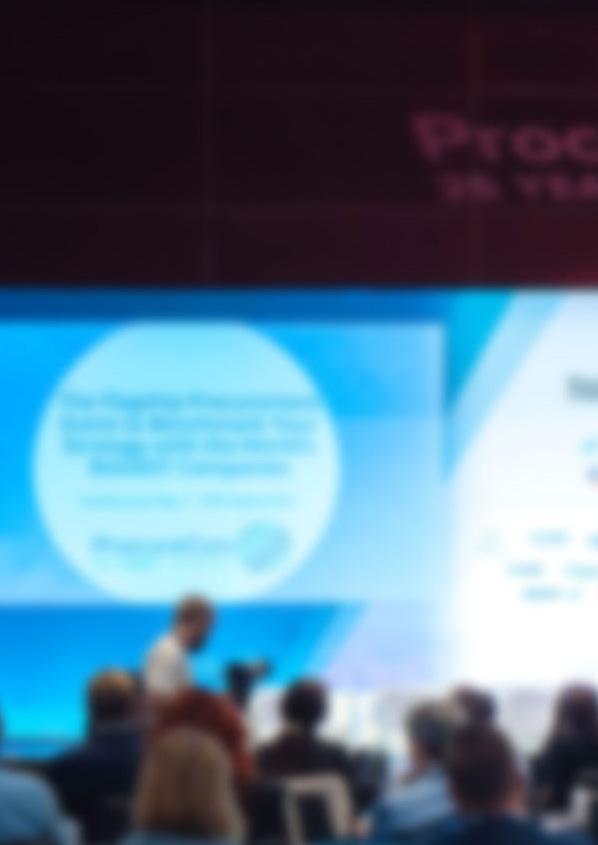


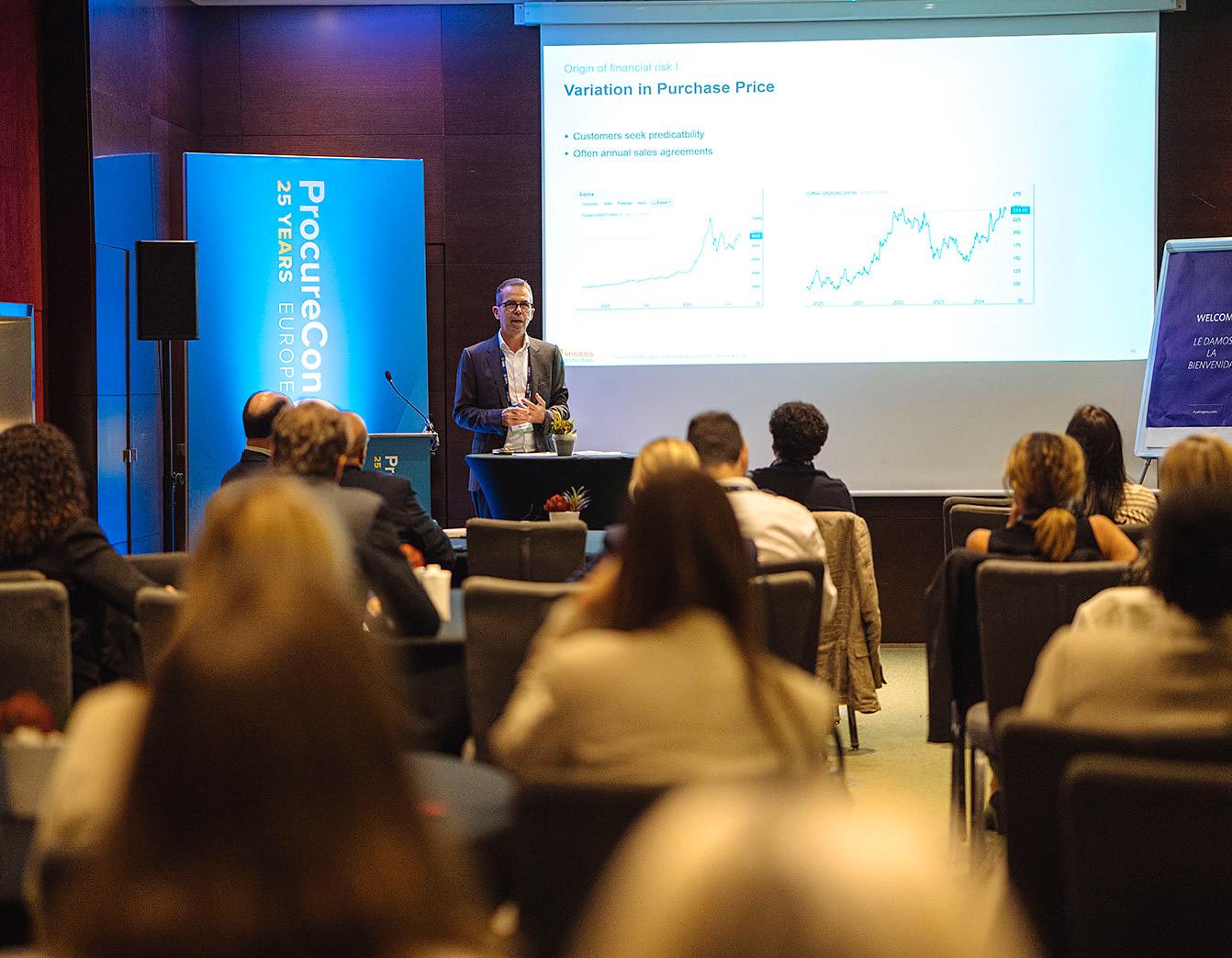
Can you walk us through your career journey, what pivotal roles and experiences led you to your current position at ProcureCon EU and WBR?
After graduating with a history degree from the University of Bristol, I transitioned from archives to agendas and dove headfirst into the world of event production! Over the past three years, I’ve produced 54 events across the UK, Europe and the US, ranging from intimate roundtables to multi day conferences buzzing with ideas (and coffee).
Along the way, I’ve had the privilege of working with some remarkable leaders, from Blackstone’s Managing Director, who led a $70 billion data centre investment into Europe, to the Head of European Real Estate at Norges Bank, the world’s largest sovereign wealth fund.
Outside of work, I’ve always valued platforms for exchange, writing for the local newspaper, debating for the Model UN at the UN headquarters, and attending academic conferences. These experiences underpin my passion for building spaces where ideas and people come together.As Content Director for ProcureCon, I get to interview senior executives from companies like Ferrari and Novo Nordisk to uncover their biggest challenges and opportunities. I love turning these insights into impactful agendas that inspire connection, reflection and forward thinking, and at WBR, I’ve been lucky to do just that.
What do you see as the unique value that ProcureCon EU brings to procurement leaders across Europe, especially in comparison to other flagship procurement events?
ProcureCon Europe is the only event that brings together CPOs and their entire senior leadership teams across multiple categories. This means you’ll gain access to the most senior strategic thinkers in procurement, all in one place. ProcureCon Europe attracts key representatives from the largest organisations across Europe. It’s not just a meeting, it’s a gathering of the biggest and most influential players in the procurement industry.
The event’s content is meticulously crafted, drawing on more than 65 in depth interviews with senior procurement professionals across Europe, and over 90 total research calls with procurement leaders. As a result, ProcureCon Europe addresses the real, pressing issues and offers actionable solutions that drive value now.

ProcureCon Europe 2024 emphasised navigating geopolitical pressures, sustainability, automation and analytics. Which of these will carry into 2025, and are there any new priority topics for this year’s event?
The advancement of Artificial Intelligence is unprecedented, moving from theory and buzzword status to real world application in 2025. It’s arguably the greatest invention since the internet, unlocking time savings and driving value across all industries, with trillions of dollars’ worth of investment from both public and private sectors.
Instability, whether inflation, fears of recession, supply chain bottlenecks or tariffs, continues to plague the global economy, with daily price and supply chain shocks. This is causing economies to become increasingly fragmented, putting procurement teams on high alert as they work to mitigate both existing and potential disruptions.
Sustainability has been a top priority for almost all multinational, publicly listed companies over the past decade. However, it’s now being scrutinised through a new lens, considering changing political climates and shifting public perceptions. It’s essential to assess whether the real time benefits of sustainability efforts remain justifiable amid rising costs and continued pressure to drive profitability in today’s macroeconomic environment.
All of the above are mission critical topics, and procurement professionals must ensure they aren’t left behind, implementing the necessary changes to thrive by benchmarking with their peers. As digitisation and software implementation have become essential for all Fortune 500 businesses, ProcureCon is putting a spotlight on technology procurement in 2025 with the launch of our dedicated ProcureCon IT stream. Co located alongside ProcureCon Europe, ProcureCon IT is designed to empower IT procurement professionals to cut costs, manage risk and fuel digital growth.
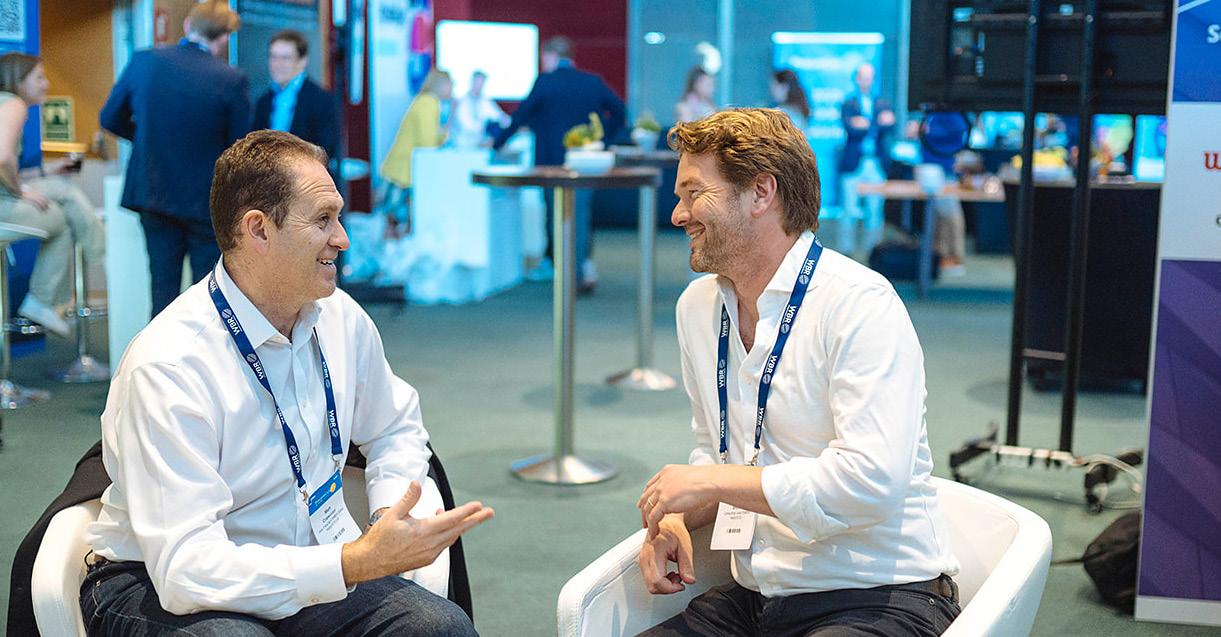
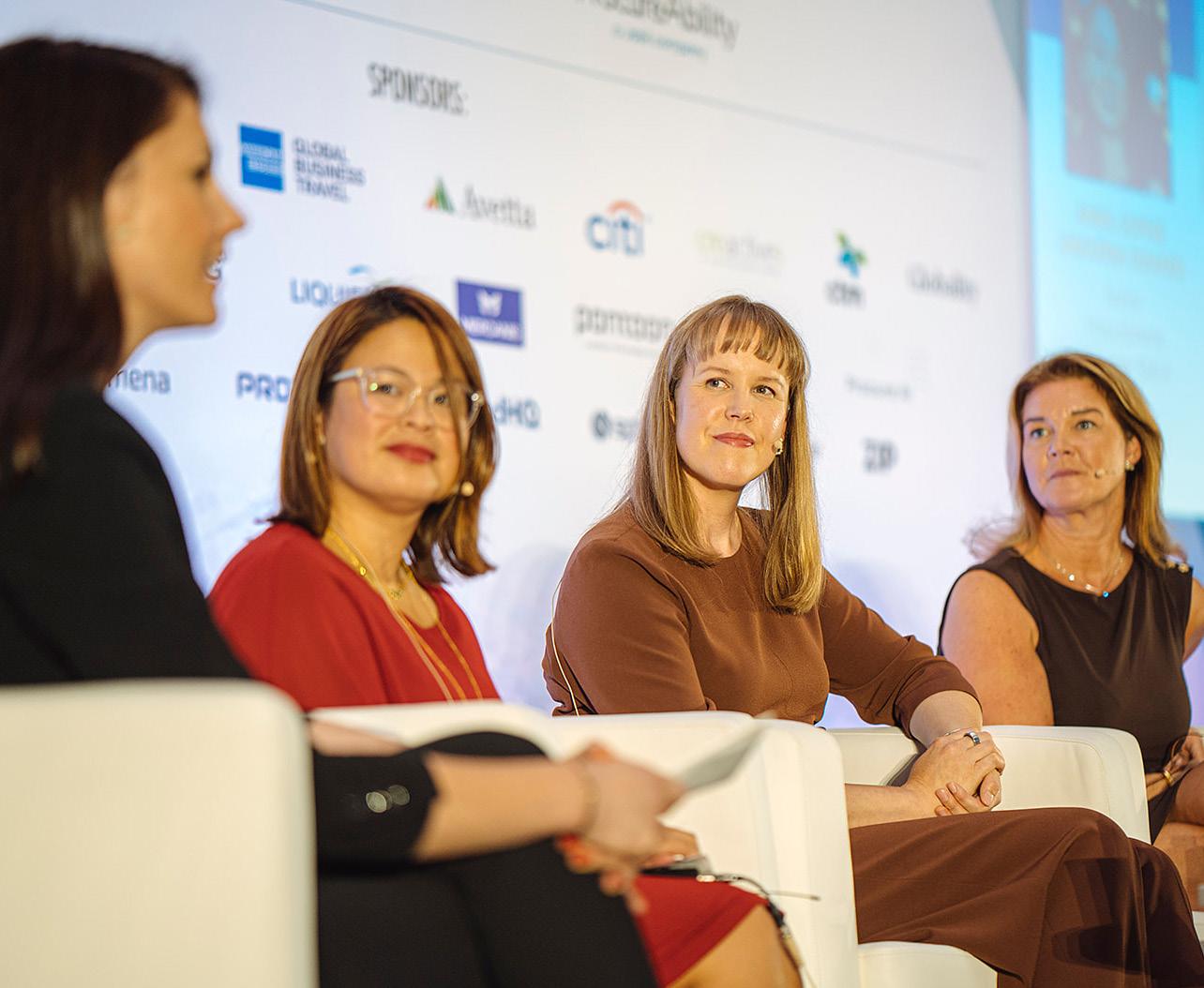
ProcureCon EU involves numerous sponsors and strategic partners. How do you work with core partners to shape the conference agenda, and what criteria do you use when selecting those collaborators?
Connecting and exchanging ideas with our advisory board is a central part of the agenda development process. After conducting more than 90 interviews, we bring our research to this group to ensure the programme remains relevant, honest and market leading. Working with advisory board members, made up of CPOs and senior procurement professionals from the likes of Asahi, Unilever and CSL Behring, is not only a real pleasure, but truly invaluable in ensuring our agenda retains both relevance and integrity.
We also work closely with partners who genuinely bring value. Whether it’s global players like VISA or GEP, or start ups like Denova and ProcureVue, we prioritise those who have a story to tell, not a sales pitch to deliver. The aim is always the same: thought leadership that informs and engages.
The speaker lineup features CPOs from Unilever, Tata Steel, Keurig Dr Pepper and others. How do you identify and secure these voices, and what impact do their insights have on the event’s outcomes?
I have the honour of working with some of the industry’s heavyweights. Their insights, case studies, mistakes, successes, challenges and learnings are all crucial to delivering meaningful thought leadership to our audience of over 650 procurement professionals.
We give these leaders a platform to share their experiences, and in turn, they help raise the bar for the entire community. The opportunity to benchmark with peers at this level is truly invaluable.


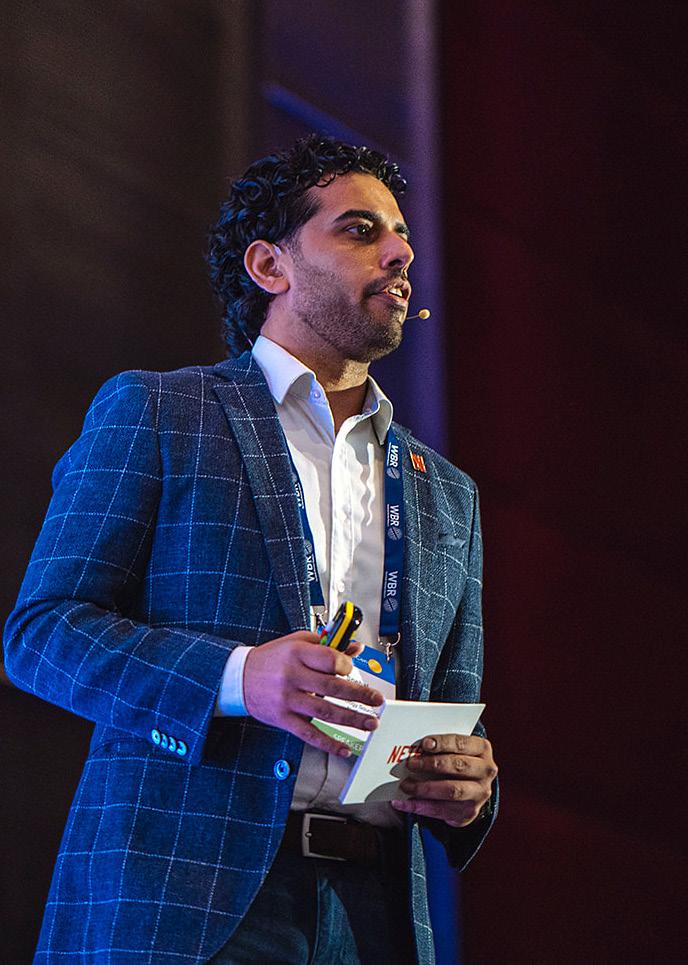
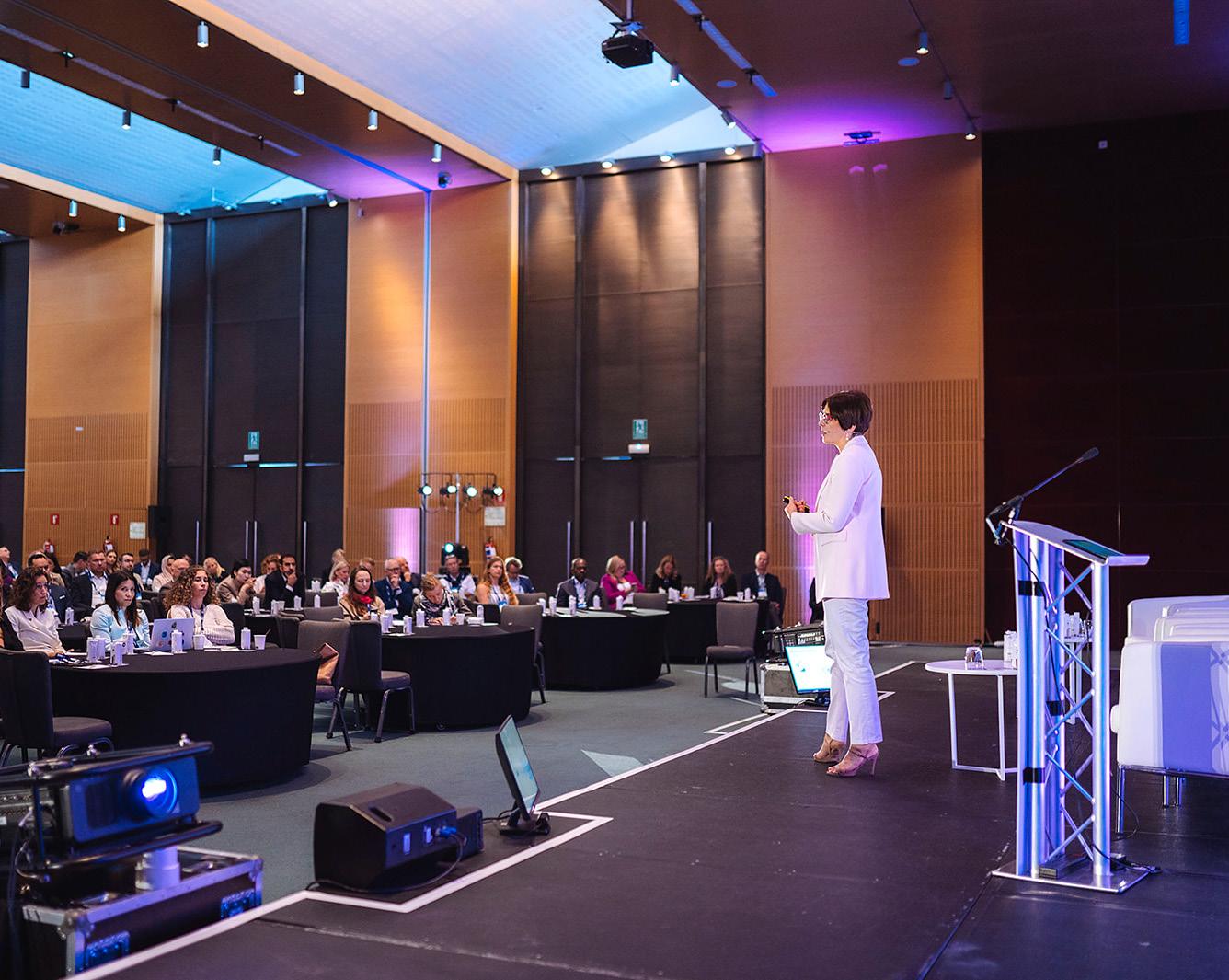
With strong interest in automation and data analytics highlighted previously, how do you ensure ProcureCon showcases the most cutting edge technological solutions for procurement teams?
ProcureCon Europe stays at the forefront of procurement technology and innovation by curating sessions and partnering with tech providers that offer hands on insights.
This year’s event will open with a compelling case study from Unilever’s newly appointed CPO, who will share how they’ve successfully embedded AI into procurement, turning theoretical buzz into practical value.
Over the following three days, numerous procurement professionals will deliver deep dives into how they are integrating new technologies to help resolve some of the key challenges the community is facing.
Sustainable procurement continues to gain traction. How do you build sustainability into the DNA of ProcureCon (e.g., through session selection, speaker criteria, or content collaboration)?
Sustainability is firmly in the spotlight due to shifting political landscapes, evolving public sentiment and new policy developments. Many of our speakers, those responsible for purchasing goods and services, recognise sustainability as a real value add in contracts and negotiations. When weighing the benefits and costs, we prioritise bringing speakers to the stage who have heavily invested in this space, with a story to tell and tangible ROI to share.
ProcureCon EU has also partnered with One Tree Planted to support global reforestation. Each delegate’s registration triggers a £1 donation, contributing to our goal of planting over 9,000 trees. Beyond donations, we embed sustainability into the event experience itself, from choosing eco friendly venues and using paperless apps, to encouraging reusable materials and promoting public transport.
I’d encourage all our attendees to visit our website to find out more: https://procureconeu.wbresearch.com/one-tree-planted

Conferences emphasise networking and fostering supplier partnerships. How does ProcureCon facilitate genuine supplier–buyer engagement or ecosystem building during the event?
Alongside all the thought leadership and opportunities for in depth learning, ProcureCon Europe is also about expanding your network. Facilitating an ecosystem of exchange is a key aim, with over 15 hours of networking built into the agenda across breakfasts, lunches and evening drinks, attendees have ample opportunity to shake hands and share ideas.
The exhibition hall offers a unique chance to discover the “who’s who” in the procurement space. With a number of exciting and interactive stands planned, we’re confident every attendee will leave with a buzz.
Interactive formats such as roundtables, workshops and boardroom sessions create space for more intimate exchanges, allowing attendees to focus on core topics and drive conversations around the key challenges the industry is facing.
Sustainability is firmly in the spotlight due to shifting political landscapes, evolving public sentiment and new policy developments.
Given ongoing supply chain disruptions, from inflation to geopolitical shifts, what concrete strategies or case studies will ProcureCon spotlight to help procurement leaders build resilience?
ProcureCon Europe is laser focused on helping procurement leaders build stability in an unstable world by bringing together industry experts to share their experiences and showcase actionable strategies.
I’m especially excited about our keynote presentation from the CPO of Siemens Energy on navigating volatility. This session will offer a bold, in depth look at how enhanced visibility and agility have enabled companies to thrive amid shifting tariffs and trade policies.
Throughout the three day event, we’ll focus on providing end to end visibility, governance frameworks and adaptive strategies, all designed to empower procurement teams not just to respond to crises, but to build lasting resilience.
As ProcureCon EU approaches its next editions, what long term objectives or evolutions do you envision for the event to enhance its impact on the procurement community in Europe?
Our long term vision is to keep reflecting the real world of procurement, its challenges, opportunities and constant evolution. By anchoring our agenda in research interviews with procurement professionals, we ensure every session speaks directly to our audience’s needs and priorities.
Even with 30 percent year on year growth in attendance*, we’re committed to keeping the event personal and focused. We know attendees are taking time out of busy schedules, and it’s our responsibility to ensure they leave with more than they expected, whether that’s new ideas, meaningful connections or both.
Looking ahead, we’re expanding further into the DACH region and introducing new content areas such as IT procurement. However, our goal remains the same; to make ProcureCon the essential gathering point for Europe’s most influential procurement leaders.

ProcureCon Europe is the leading event for senior procurement professionals, bringing together CPOs and leadership teams from Europe’s top organisations for three days of strategic insights, innovation, and networking. Organised by WBR, the agenda is shaped by 90+ indepth interviews with procurement leaders to address the most pressing challenges—from AI adoption and supply chain volatility to sustainability and technology procurement. With interactive formats, 15+ hours of networking, and the introduction of the dedicated ProcureCon IT stream in 2025, the event offers unmatched opportunities to benchmark, collaborate, and drive real impact. Committed to responsible sourcing, ProcureCon partners with One Tree Planted and incorporates eco-friendly practices across the event.

In the ever-evolving landscape of humanitarian aid, procurement and logistics play a crucial role in delivering impact where it matters most. At the heart of Welthungerhilfe Malawi’s operations is a commitment to ethical sourcing, local empowerment, digital innovation, and unwavering accountability. Leading this charge is the Head of Procurement and Logistics, Evance Ziwa Kalepa whose journey from the private sector to humanitarian leadership reflects a deep dedication to continuous learning, collaboration, and principled action.
In this interview, we explore how his leadership has shaped supply chain strategies that respond to climate volatility, promote localisation, strengthen supplier partnerships, and uphold the highest standards of compliance. From prepositioning relief items to rolling out e-tendering platforms and building long-term agreements with vendors, his team ensures that procurement is not just efficient— but a strategic enabler of WHH’s mission to end hunger and promote food security. He also shares advice for the next generation of humanitarian procurement leaders, emphasising integrity, adaptability, and a relentless focus on impact.


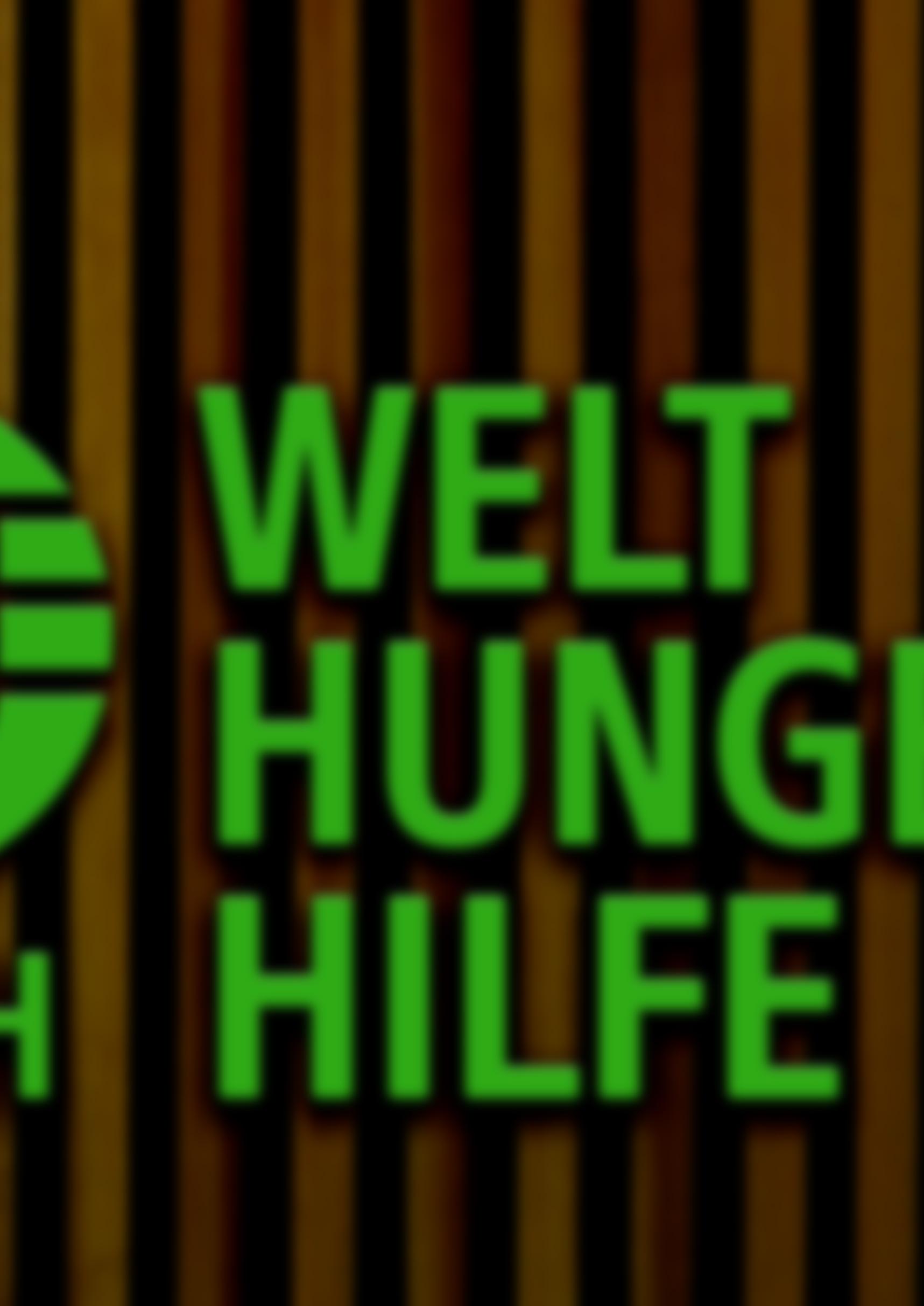


Can you share your career journey and what led you to your role as Head of Procurement and Logistics at Welthungerhilfe? What experiences have most influenced your leadership approach in the humanitarian supply chain space?
My professional journey began in the private sector in the early 2000s, where I was first introduced to warehousing for finished goods. This early exposure sparked a lasting interest in supply chain management and laid the foundation for my career in procurement and logistics.
After several formative years in warehousing, I transitioned into the humanitarian sector, a move that deepened my sense of purpose and broadened my understanding of how supply chains enable effective and ethical aid delivery. Over time, I took on various roles across the supply chain spectrum, expanding my experience to include procurement, logistics, and transport. Each step was an opportunity to grow, both professionally and personally. Today, I serve as the Head of Procurement and Logistics at Welthungerhilfe Malawi and am a member of the Senior Management Team.
My leadership in the humanitarian supply chain space has been shaped by managing complex procurement processes with care and fairness. Leading procurement and logistics teams, adhering to professional standards, and having a genuine passion for continuous learning have helped me better understand organisational systems and shape my leadership style. Additionally, working closely with different departments and partners has taught me how to foster collaboration and ensure quick, effective action. Being part of professional associations like the Malawi Institute of Procurement and Supply has also allowed me to learn from others and stay informed on best practices.
My journey, from warehouse operations to strategic leadership, has been guided by a commitment to learning and a belief that well-managed supply chains are powerful drivers of humanitarian impact.
Procurement plays a critical role in ensuring timely and effective aid delivery. How does your team at Welthungerhilfe support the organisation’s mission to eliminate hunger and ensure food security through efficient and ethical procurement?
At Welthungerhilfe Malawi, procurement is a strategic enabler of our mission to end hunger and ensure food security. Guided by WHH’s vision of a world free from hunger and poverty, our team places project beneficiaries at the centre of every procurement decision, ensuring their needs drive our actions.
We work hand in hand with Project Heads to ensure that requests for goods and services are received in good time. This close collaboration allows us to plan and execute procurement processes efficiently, enabling the timely delivery of supplies and services that are fit for purpose and aligned with project timelines.
Our approach prioritises quality, compliance, and value for money. We also support implementing partners through regular compliance training and guidance on ethical sourcing, ensuring that all procurement activities, whether direct or through partners, meet both WHH and donor requirements. Our work is anchored in core principles: transparency, fairness, efficiency, proportionality, competitive bidding, value for money, support for the local economy, and duty of care. These values underpin our ethical procurement framework and ensure responsible stewardship of donor resources.
By promoting a culture of integrity, collaboration, and continuous improvement, our procurement function contributes meaningfully to sustainable outcomes and builds lasting trust with communities, partners, and donors.

Welthungerhilfe emphasises sustainability and accountability. How do you integrate ethical sourcing and environmental responsibility into your procurement and logistics decisions, especially in fragile and high-risk environments?

Sustainability and accountability are core values that guide the procurement and logistics operations of WHH Malawi. We are committed to embedding ethical and sustainable practices across all supply chain activities, even in fragile and high-risk environments where maintaining standards can be particularly challenging.
Our approach begins with integrating sustainability requirements into all procurement documentation, ensuring that suppliers understand and uphold our expectations. This commitment is further reinforced by the WHH Malawi Sustainability Plan, developed in collaboration with our global Expert of Sustainability. Now under implementation, the plan includes tangible actions such as e-tendering most of our procurements, solarising our main office, improving waste management, and enhancing supplier due diligence to assess environmental and ethical performance.
We also contribute to the organisation-wide sustainability agenda by regularly submitting carbon footprint data to WHH’s global dashboard. This data informs strategic decisions such as prioritising the acquisition of low-emission vehicles, phasing out non-compliant fleet assets, and adopting greener logistics solutions.
As Head of Procurement and Logistics, I champion this agenda among WHH staff and our implementing partners through policy guidance, capacity building, and fostering a shared culture of environmental responsibility.
At WHH Malawi, sustainability is not an add-on, it is a fundamental principle that shapes how we procure, partner, and deliver, ensuring long-term impact and responsible stewardship in all we do.

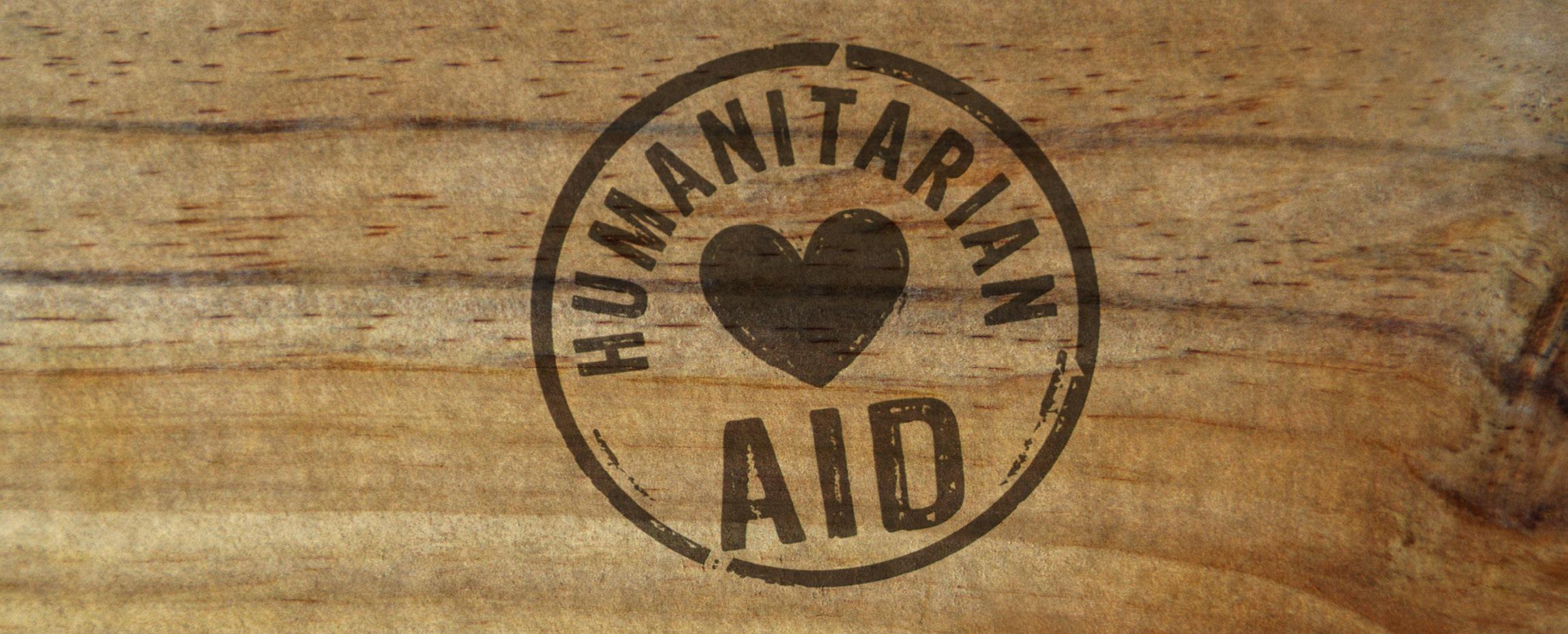
In humanitarian supply chains, trust and performance are essential. What strategies do you use to build strong, transparent relationships with local and global suppliers, especially in conflictaffected or disaster-prone regions?
In humanitarian supply chains, trust, reliability, and transparency are critical to effective aid delivery. At WHH Malawi, we place high value on building strong, performance-driven relationships with our suppliers, both local and international, to ensure we meet the needs of the communities we serve, especially in times of crisis. While Malawi is not a conflict-affected country, it is prone to natural disasters such as floods, droughts, and cyclones. This reality has significantly shaped how we structure our supply chain and engage with suppliers. Our procurement portfolio spans a wide range of categories, including consultancies, construction, ICT services, conference and accommodation services, office supplies, electrical equipment, farm inputs, and essential relief items.
One of our key strategies is the establishment of Long-Term Agreements (LTAs) with carefully vetted service providers. These agreements allow us to maintain continuity, ensure value for money, and enhance responsiveness across different projects. LTAs also foster a deeper mutual understanding, suppliers become familiar with our operations, compliance requirements, and delivery expectations, which contributes significantly to both efficiency and accountability. In addition to LTAs, we are currently developing a new strategic initiative aimed at enhancing our emergency response capacity. Based on lessons from major emergency interventions in 2021, 2022, and 2023, we are drafting Terms of Reference for Emergency Supply Partnerships. This framework will allow us to pre-identify and onboard suppliers specifically for rapid deployment during emergencies. The goal is to reduce lead times, ensure availability of critical supplies, and prevent operational delays when disasters strike.
Transparency is central to our supplier engagement approach. We follow clear procurement procedures, communicate expectations openly, and ensure that suppliers understand our ethical sourcing and compliance standards. Regular performance reviews and supplier feedback loops allow us to assess service levels and continuously improve our partnerships.
Ultimately, our approach is not transactional, it is relational and strategic. We aim to build partnerships with suppliers who share our commitment to humanitarian principles, value for money, and service to the communities we support. This way, even in disaster-prone contexts, our supply chain remains agile, reliable, and fully aligned with Welthungerhilfe’s mission.
Working across rural, conflict, or post-disaster areas presents immense logistical hurdles. What are some of the biggest challenges you face in logistics coordination, and how does your team overcome them to maintain continuity?
One of the most significant logistical challenges we encounter in rural areas is the poor state of the road network. This makes the transportation of supplies to and from remote locations particularly difficult, especially during the rainy season. To mitigate this, our team consistently advocates for and prioritises the timely processing of orders. Early procurement and dispatch allow us to schedule deliveries strategically and ensure completion despite infrastructure limitations.
Another major hurdle is the limited communication network. Logistics coordination relies heavily on the timely exchange of information between various stakeholders, typically via mobile phones or email. However, in many of the rural areas where our offices are based, poor mobile and internet connectivity can delay critical decision-making and coordination. We continue to explore alternative communication methods and develop redundancy plans to maintain reliable communication flow.
To further improve emergency response and operational continuity, our supply chain team is also focusing on the prepositioning of essential supplies. By strategically placing stock in high-risk areas ahead of time, we can respond more rapidly to emergencies and support post-emergency projects with minimal delay.
Additionally, WHH Malawi is an active member of the Malawi Logistics Cluster, which brings together major players in emergency response. Through this network, we share and receive timely updates on road conditions, access constraints, and coordination efforts. This collaboration significantly enhances our ability to plan effectively and adapt to evolving logistical challenges in difficult environments.
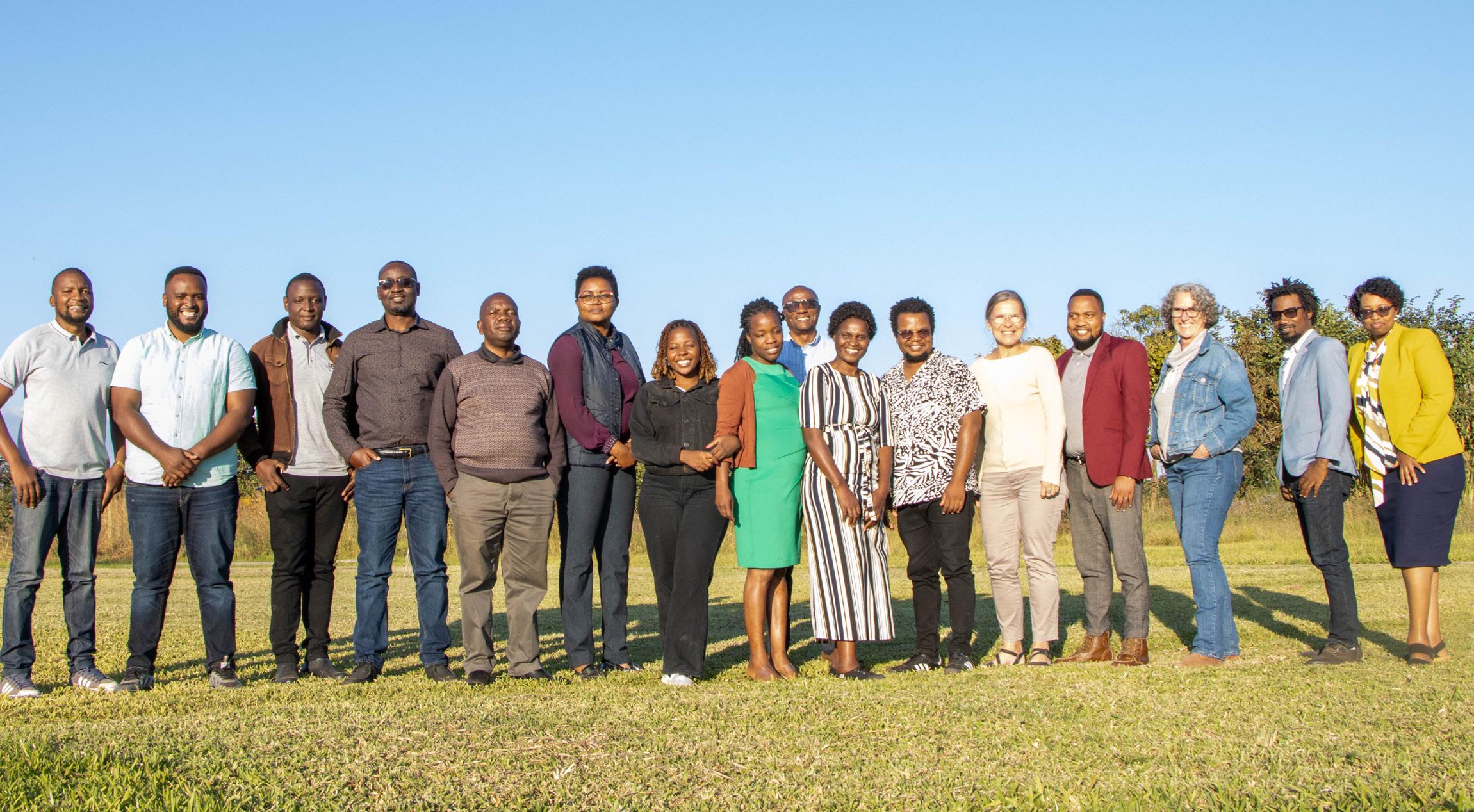


How is Welthungerhilfe leveraging digital tools, systems, or data-driven solutions to enhance procurement transparency, optimise logistics, and improve responsiveness across your field programs?
Welthungerhilfe has made significant strides in adopting digital tools and systems to enhance procurement transparency, optimise logistics, and improve overall responsiveness in our field operations. These technologies span across all key areas of our supply chain management, including procurement, fleet and logistics management, and asset tracking.
We have been utilising our e-tendering platform for the majority of our procurement processes. This has significantly improved efficiency, reduced lead times, and strengthened transparency. E-tendering has also enhanced our engagement with suppliers by maintaining an up-to-date and expanding supplier database, making it easier to identify and access reliable service providers. The system supports all stages of the procurement cycle, from tender advertisement to bid evaluation and contract award, ensuring a structured and auditable process.
To support document accessibility and preserve institutional knowledge, we also utilise Promis, a digital repository where critical procurement and supply chain documents—such as procurement plans, tender files, and evaluation reports, are stored. This system ensures easy access to essential data by all WHH staff, fostering transparency, consistency, and organisational learning.
On the logistics side, we leverage FleetWave, a fleet management technology that enables us to monitor and manage vehicle operations effectively. This tool supports real-time tracking, maintenance scheduling, and performance reporting, allowing the team to monitor key performance indicators and make data-informed decisions that enhance service delivery.
Through these digital solutions, Welthungerhilfe is increasingly able to make timely, evidence-based decisions, ensuring we remain responsive, transparent, and accountable in serving the needs of the communities we support.
Procurement in humanitarian settings involves strict donor compliance and risk mitigation. How do you ensure adherence to international procurement standards, donor regulations, and audit requirements across all projects?
At Welthungerhilfe (WHH), we recognise the critical importance of strict compliance with international procurement standards, donor regulations, and audit requirements across all projects. Adherence to these principles is integral to our risk mitigation strategy and to ensuring transparency, accountability, and integrity in all procurement activities.
WHH ensures that every procurement process is conducted in alignment with applicable donor regulations and international best practices. All suppliers are referred to, and required to review, understand, and agree to the terms and conditions governing the international procurement of goods and services. These terms explicitly reflect WHH’s commitment to legal and ethical compliance, including anti-corruption, fair competition, and responsible sourcing.
As part of our risk mitigation measures, WHH mandates anti-terrorism screening for all suppliers and service providers whose cumulative contract value exceeds EUR 2,000 within a calendar year. Any supplier that fails to pass this screening is deemed ineligible to conduct business with WHH. This policy is enforced rigorously and consistently across all operational contexts. It underscores WHH’s unequivocal stance against terrorism and money laundering and reaffirms our commitment to the principles of ethical business conduct as outlined in the UN Global Compact.
WHH employs a combination of offline and online tools to conduct these screenings efficiently and in line with our internal Anti-Terrorism Policy. These tools allow for real-time checks and ensure continued compliance, thereby safeguarding our operations and donor investments.
By embedding these practices into our procurement framework, WHH ensures that all procurement activities are transparent, ethical, and fully compliant with both donor expectations and international legal standards.
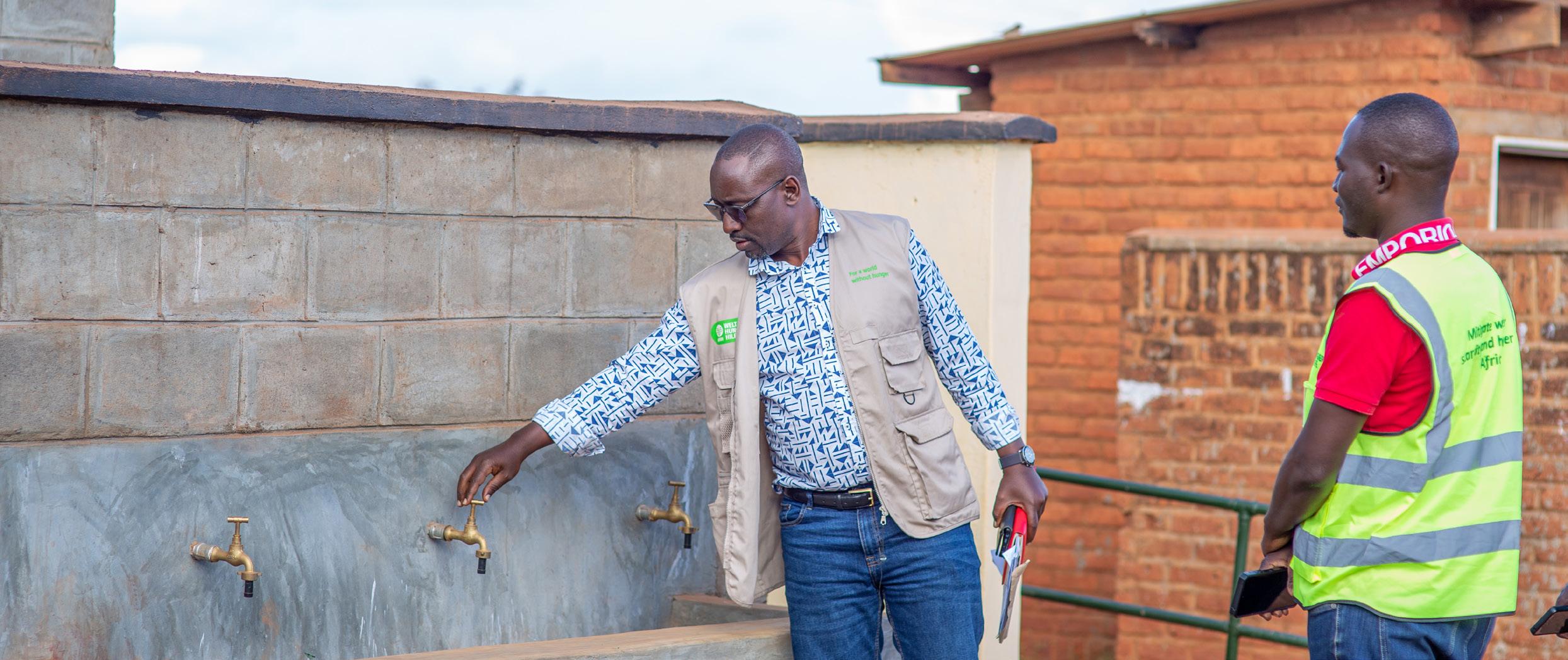
There’s a growing emphasis on localisation in aid. How is your procurement strategy aligned with supporting local markets, suppliers, and community-based partners while maintaining efficiency and accountability?
Welthungerhilfe (WHH) Malawi fully embraces the global shift towards localisation in humanitarian and development aid. WHH has recently become the newest signatory to the Grand Bargain, reinforcing its commitment to more effective, transparent, and locally led humanitarian action. In line with WHH Malawi’s Multi-Annual Country Strategy (2020–2025), one of our key objectives is to transition from direct implementation to a partnership-based approach. This shift empowers local organisations to take a leading role in project delivery across the districts we serve, promoting sustainable development through local ownership and capacity strengthening.
From a procurement and logistics perspective, this strategic shift is strongly supported by our procurement policy, which prioritises sourcing from the local market. A core principle of this policy is to strengthen the local economy by ensuring local suppliers and service providers are prioritised when acquiring goods and services. This approach not only aligns with WHH’s localisation agenda but also contributes directly to economic development, job creation, and market resilience within Malawi.
This deliberate effort ensures that local suppliers become integral stakeholders in the project implementation process. Furthermore, the same localisation message and procurement principles are actively promoted among our implementing partners. WHH encourages partners to adopt similar sourcing strategies that prioritise community-based vendors, cooperatives, and small enterprises wherever possible, without compromising efficiency, accountability, or compliance with donor requirements.
By embedding local market engagement into our procurement systems and reinforcing this approach through our partner network, WHH Malawi effectively balances the goals of localisation with the demands of operational efficiency, transparency, and accountability.
What advice would you give to aspiring professionals looking to grow a career in procurement and logistics within the NGO or humanitarian sector?
I strongly believe that a career in procurement and logistics within the humanitarian sector is both impactful and demanding. It requires a deep commitment to ethical principles, professional accountability, and continuous learning. For those aspiring to grow in this field, understanding the unique expectations of humanitarian supply chains is essential.
I should be quick to mention that accountability is non-negotiable. Humanitarian procurement and logistics involve managing donor funds, so every purchase must be transparent, well-documented, and aligned with strict policies. There is zero tolerance for non-compliance, professionals must ensure that resources are used efficiently and ethically to support vulnerable communities.
A successful career in humanitarian procurement and logistics is built on integrity, adaptability, and a dedication to continuous improvement. By upholding these principles, aspiring professionals can make a meaningful and lasting impact in this vital sector.
What trends or innovations do you see shaping the future of humanitarian supply chains, and how is Welthungerhilfe preparing to stay ahead of evolving needs, especially in a climateaffected, volatile world?
The future of humanitarian supply chains is being shaped by a combination of global volatility, climate change, and the growing demand for agile, transparent, and sustainable operations. One of the most transformative trends in this landscape is the digitisation of supply chain processes. At WHH, we recognise that digital innovation is not just a trend, it is a necessity for building resilient, efficient, and accountable humanitarian supply chains.
WHH has already taken significant steps in this direction. We are actively leveraging a range of digital tools across procurement, logistics, fleet, and inventory management, enhancing our ability to track, analyse, and respond to supply chain needs in real time. These tools support better decision-making, reduce lead times, improve compliance, and ultimately enable faster and more reliable aid delivery.
In alignment with the Kaizen philosophy of continuous improvement, WHH’s supply chain teams receive ongoing training to maximise the use and value of these digital platforms. This ensures our staff are equipped to adapt to changing contexts and contribute to an organisational culture of innovation and learning.
Additionally, WHH is implementing a global innovation initiative that explores and pilots forwardthinking solutions across all countries where we operate, including Malawi. This project is dedicated to embedding innovation into the core of our programming, ensuring that humanitarian supply chains are not only proactive but also predictive, data-driven, and adaptive to climate-related and geopolitical challenges.
Digitalisation also plays a vital role in advancing sustainability goals, from reducing paper usage to optimising transportation routes and promoting environmentally friendly sourcing strategies. These efforts align with WHH’s broader commitment to climate resilience and responsible resource management.
By embracing digital transformation, investing in staff capacity, and championing innovation at all levels, WHH is well-positioned to remain at the forefront of humanitarian supply chain evolution in an increasingly complex world.

Founded in 1962 and headquartered in Bonn, Welthungerhilfe is a leading German humanitarian and development organisation, active in over 70 countries. It envisions a world in which all people can exercise their right to a self-determined life in dignity and justice free from hunger and poverty. Its goal—to achieve “Zero Hunger by 2030”—drives programmes spanning emergency aid, sustainable agriculture, climate action, and food and nutrition security.

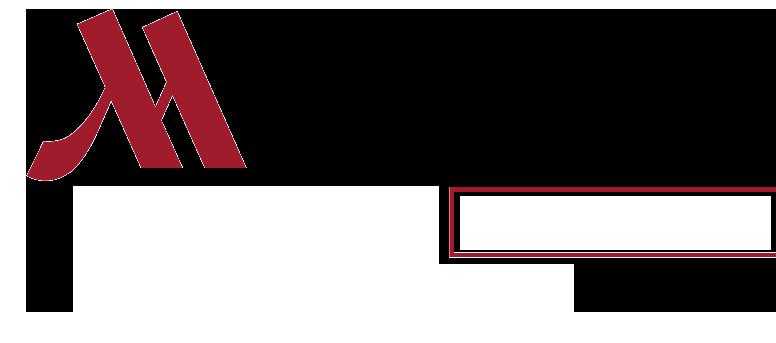
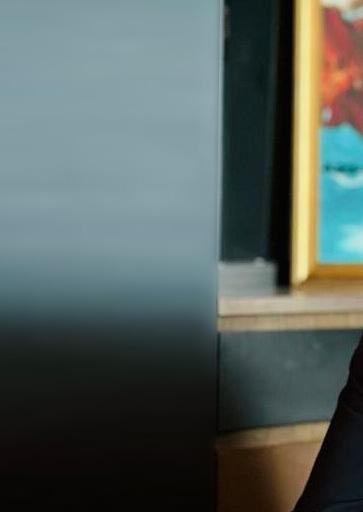
Overseeing procurement for a single preopening hotel is a complex challenge managing it for two iconic global brands simultaneously is another level entirely. As the driving force behind procurement at both the Marriott Marquis Dubai Creek and Hilton Dubai Creek Hotel & Residences, Sageer Patel brings a rare combination of strategic foresight, operational discipline and passion for hospitality.
From embedding sustainability into sourcing to leveraging digital tools and managing supplier relationships across brand identities, Sageer is redefining what effective procurement looks like in today’s fast evolving hospitality landscape. In this exclusive interview, he shares how careful planning, brand alignment and agile decision making are key to delivering excellence across multi brand pre-openings all while keeping guest experience at the heart of every decision.


Can you share your career path and what led you to your current role overseeing procurement for the pre-opening phases of both Marriott Marquis Dubai Creek and Hilton Dubai Creek Hotel & Residences.? How have your previous experiences prepared you for managing procurement across multiple hotel brands simultaneously?
I began my career in the banking sector after completing my graduation in India. A fortunate opportunity led me to Qatar, where I discovered my passion for hotel procurement. The dynamic and fast paced nature of the industry inspired me to pursue a long term career in this field.
Throughout my journey, I’ve had the privilege of being mentored by some of the industry’s finest leaders, who have played a significant role in shaping the professional I am today. Like many hoteliers would agree, pre-opening hotels offer some of the most valuable learning experiences and I was fortunate to be part of the opening of two robust brands under one management umbrella.
In the past, I have worked with esteemed hospitality groups such as Marriott and Accor. These roles challenged and trained me across various facets of procurement from working with brand approved vendors and adhering to strict brand standards, to promoting sustainable purchasing practices all while ensuring optimal negotiations without compromising on quality.

What strategies do you employ to ensure procurement processes align with each brand’s standards and operational requirements?
Managing procurement for a dual brand property presents both opportunities and challenges. A well structured strategy is essential to maintain brand integrity while maximising operational efficiency and cost savings. At the core, a unified procurement approach helps streamline vendor management, standardise supply chains and leverage greater purchasing power.
Our key strategies have included consolidating service contracts, sharing operating supplies and equipment (OS&E), maintaining strict adherence to brand standards, aligning with vendors through regular audits and integrating sustainability into our procurement practices.
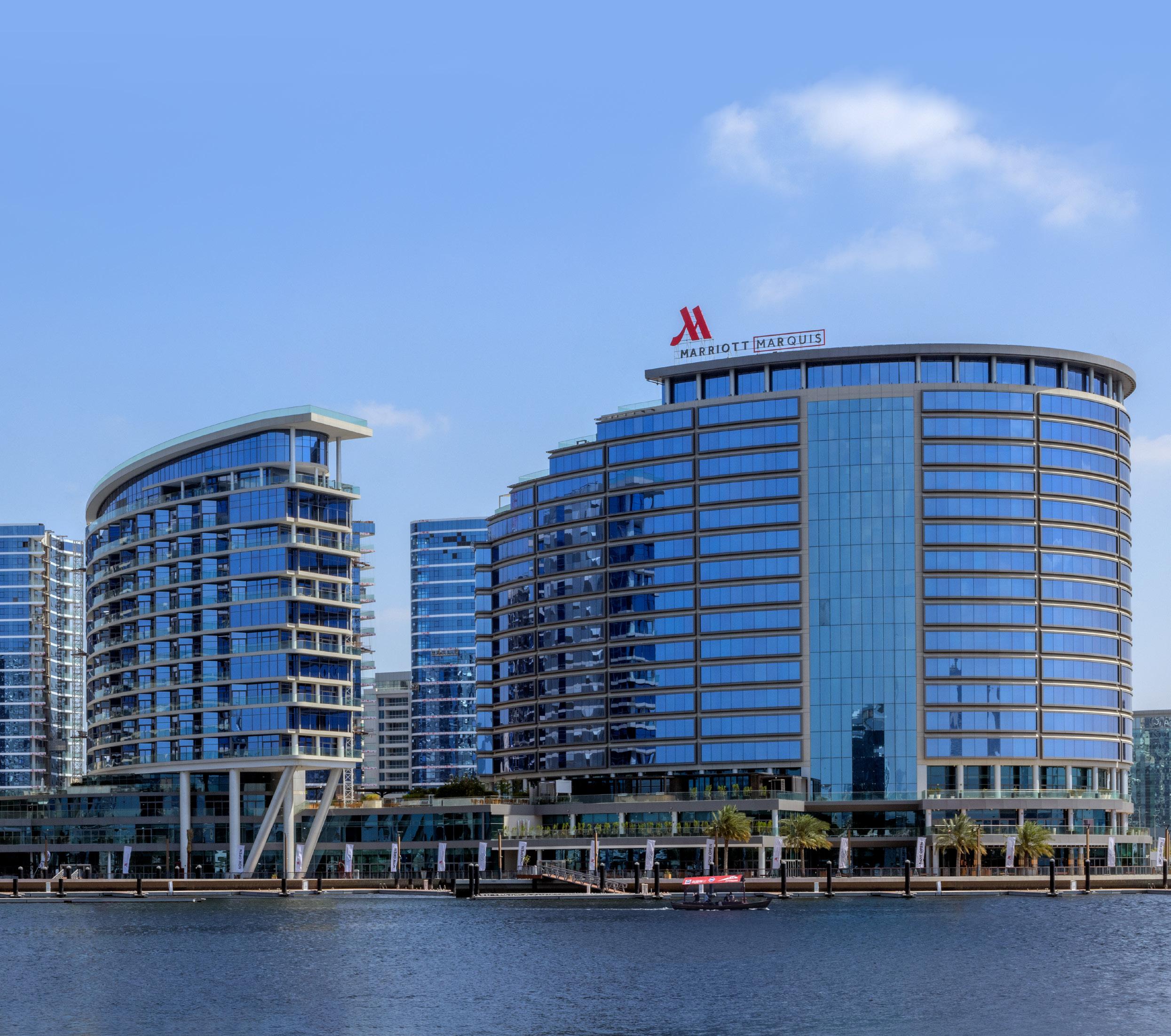
How are you integrating sustainable practices into procurement for these new properties to support environmental responsibility and operational efficiency?
Sustainability is no longer just a trend it’s a core responsibility for the hospitality industry. At Marriott Marquis Dubai Creek and Hilton Dubai Creek Hotel & Residences., we’ve taken a proactive approach to embed sustainable practices into our procurement processes from the ground up. The goal is to support both environmental responsibility and long term operational efficiency without compromising on guest experience or brand standards.
Our sustainability focused procurement strategies include sourcing from local and regional suppliers, selecting eco certified products and materials, implementing a cold water laundry programme and emphasising bulk purchasing to reduce packaging waste. We also utilise digital procurement systems to cut down on paper use and improve process efficiency. Careful selection of sustainable OS&E items, ensuring vendor compliance with sustainability criteria and fostering awareness among employees and suppliers are all key components of our approach.
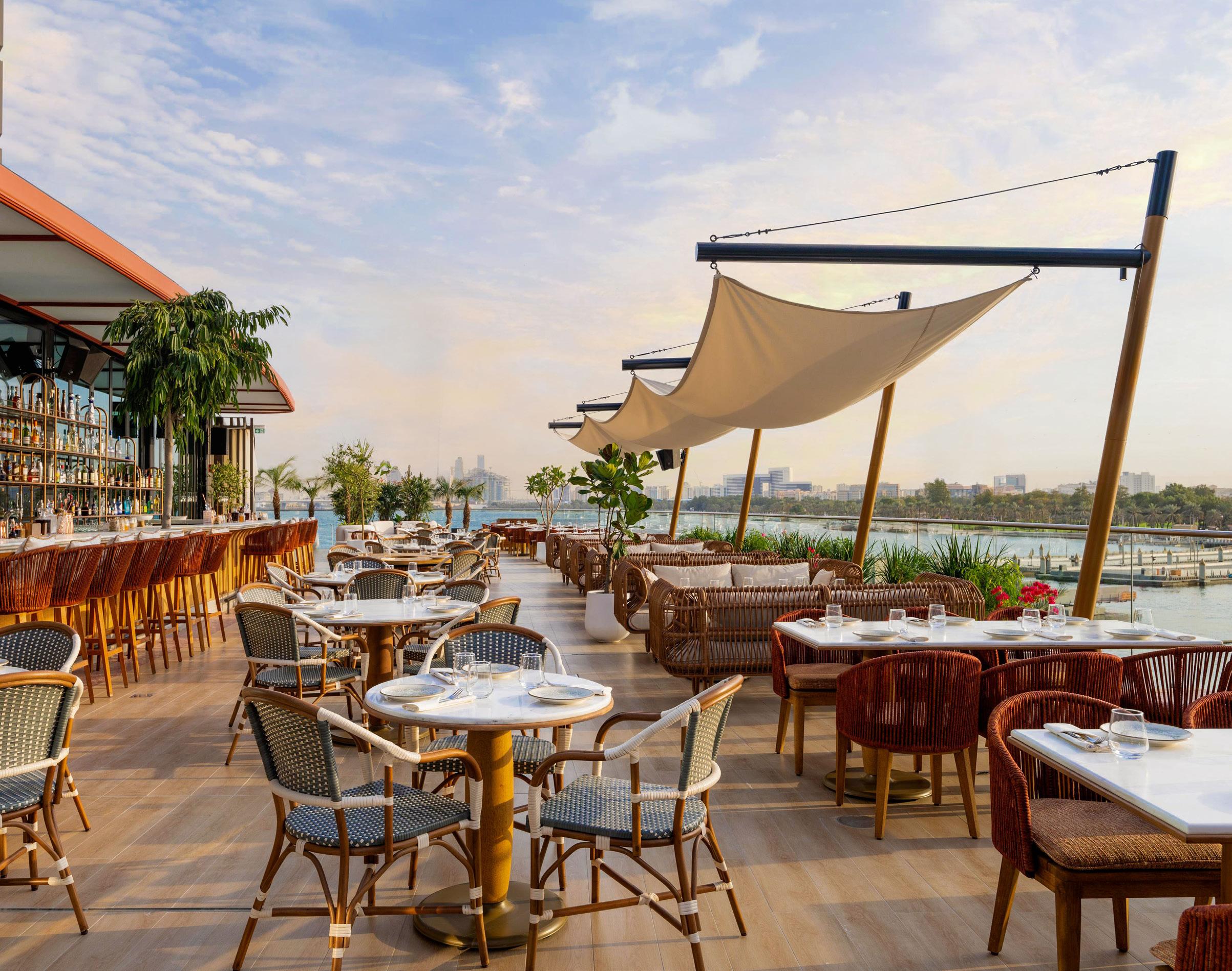
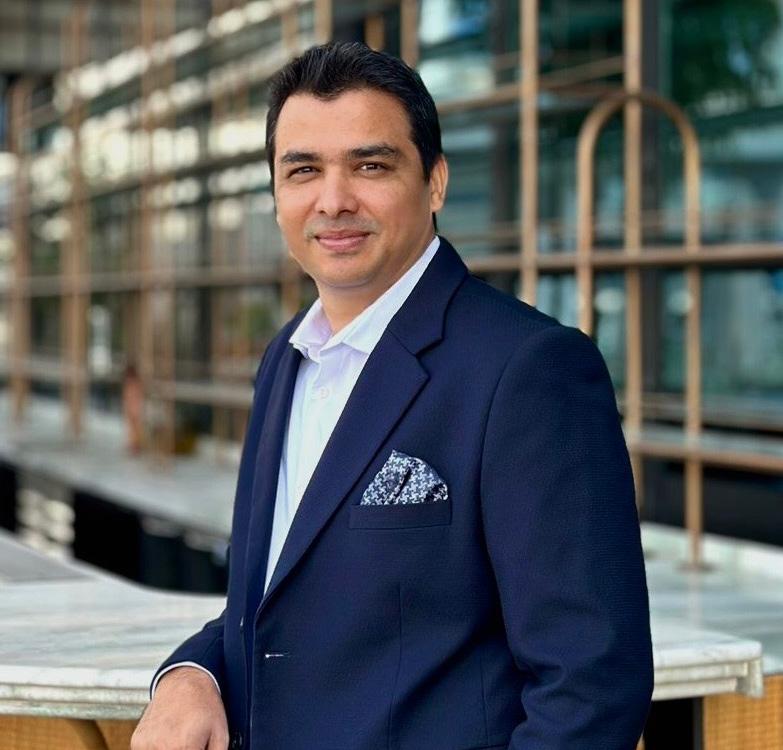
What criteria do you prioritise when selecting suppliers, and how do you cultivate strong relationships during the critical pre-opening phase?
In the pre-opening phase where timelines are tight and brand standards must be strictly upheld selecting the right suppliers is critical. Procurement decisions at this stage can directly influence both the success of the opening and the long term efficiency of hotel operations.
When selecting suppliers, we prioritise a strategic mix of criteria to ensure quality, reliability and alignment with brand standards. These include compliance with brand requirements, a proven track record in hospitality projects, recognised quality certifications, capacity to deliver on time, financial stability, sustainability credentials and competitive pricing.
Strong supplier relationships are built on transparency, trust and shared goals. Our approach combines strategic selection with long term partnership building. Key practices include early engagement and clear expectations, open two way communication, mutual respect and fairness, performance monitoring and collaborative problem solving.
How are digital tools being used to streamline procurement, and what benefits have you observed?
In the fast paced, high pressure environment of pre-opening hotel projects, digital tools have become invaluable in ensuring efficiency, accuracy and transparency throughout the procurement process. By adopting cutting edge solutions, we’ve streamlined workflows, optimised costs and enhanced collaboration across teams.
We utilise e-procurement platforms, supplier management software and digital catalogues with comprehensive product databases. These tools enable faster sourcing, consistent supplier evaluation and centralised data management significantly reducing manual effort and minimising the risk of errors.
By embracing digital solutions, we’ve improved operational efficiency, enhanced transparency and supported smarter decision making. These technologies empower our team to work more effectively and deliver seamless, timely hotel openings.


How do you manage budgets and implement cost control while maintaining quality across both properties?
The pre-opening phase requires meticulous financial planning, with substantial investment across categories such as FF&E, OS&E, services and staffing. Managing budgets while upholding brand standards and quality particularly in a dual brand setup demands a strategic and disciplined approach.
Our approach includes early budget planning with clear stakeholder alignment, value engineering to identify cost efficiencies without compromising quality and centralised procurement for shared needs. We implement a strict purchase approval workflow to ensure accountability at every stage.
Regular budget tracking and detailed reporting help us monitor expenditure and adjust as needed. Vendor negotiations and favourable payment terms support cash flow, while contingency planning helps absorb unforeseen costs without affecting guest experience.







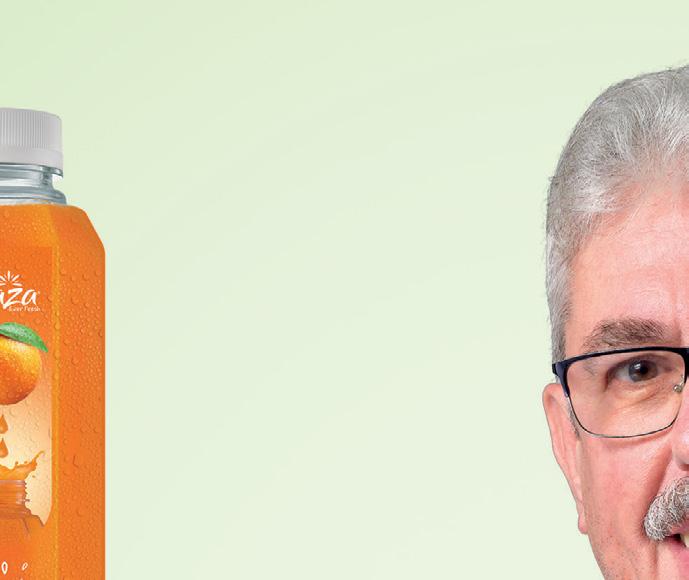
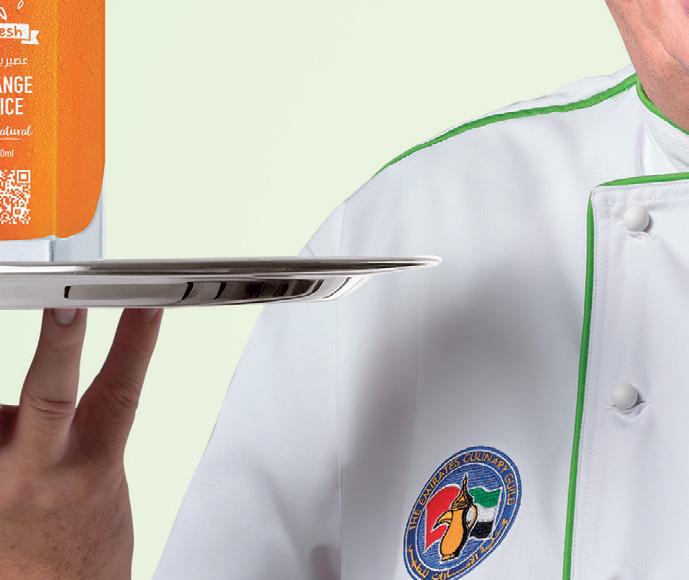













Taaza Healthy has quickly become one of the UAE’s most respected and trusted food distributors, known for its uncompromising dedication to quality, freshness, and customer satisfaction. From humble beginnings, the company has evolved into a leading multi-category supplier, serving retail, hospitality, and foodservice partners across the region.
With a mission to deliver farm-fresh products from source to shelf, Taaza Healthy has built a robust portfolio that includes dairy, eggs, fresh produce, frozen items, dry goods, and health & wellness products. By working closely with both international and local producers, the company ensures the highest standards of safety, transparency, and traceability across every step of the supply chain.
At the heart of Taaza’s success is its commitment to sustainability and innovation. From adopting eco-friendly packaging solutions to streamlining logistics for reduced environmental impact, the company is actively reimagining how food reaches the end consumer. It continues to invest in digital transformation and modern cold chain infrastructure, ensuring temperature-controlled delivery and real-time tracking — both critical in the UAE’s demanding climate.
Taaza Healthy also takes pride in its ability to respond to evolving consumer expectations. As demand grows for health-conscious, clean-label, and functional food items, Taaza has expanded its offering to include an ever-wider range of organic, gluten-free, and nutritionally rich products. This agility, coupled with a strong sourcing network, positions the company as a vital partner for brands and retailers aiming to meet the needs of modern consumers.
A people-first culture underpins every aspect of Taaza’s operations. The company fosters strong relationships not only with customers but also with suppliers and employees, creating a trusted ecosystem built on collaboration, integrity, and shared goals. Training, upskilling, and a focus on food safety are prioritised across the team — supporting growth from within while reinforcing the company’s quality-driven mindset. Today, Taaza Healthy is more than a distributor; it is a food solutions partner. With a future-forward outlook, the business is expanding into new categories and channels, leveraging data insights and market feedback to stay ahead of trends. Whether it’s helping a hotel source premium ingredients or guiding a retailer in the launch of a new product line, Taaza approaches each challenge with the same passion for excellence. As the region continues to evolve, Taaza Healthy remains firmly committed to delivering the best — with freshness, health, and trust at the core of everything it does.
Pre-opening procurement is marked by strict timelines, evolving scopes and brand compliance demands. Key challenges include managing last minute changes, coordinating stakeholders, ensuring brand standards, mitigating supply chain disruption and balancing budgets.
We address these by maintaining a detailed procurement schedule, holding regular coordination meetings and identifying long lead items early. Clear communication channels and designated procurement contacts streamline stakeholder engagement.
We work closely with brand representatives using approved vendor lists and pre approved alternatives. To reduce logistics risk, we engage multiple suppliers, prioritise regional sourcing and build buffer time for critical items.
We control costs through value engineering, consolidated purchasing and strategic vendor partnerships. Delivery logistics are carefully scheduled in phases, with off site storage as needed.


How do you ensure quality and service consistency while respecting each brand’s identity?
Managing procurement for two hotel brands requires a balanced approach. While efficiency is vital, preserving brand identity is equally important.
We start with a deep understanding of each brand’s guidelines. Guest facing elements are procured separately to preserve brand distinction, while back of house items are consolidated for efficiency.
Standardised quality control processes are applied across all items. Unified service contracts include brand specific SLAs, ensuring tailored service delivery. Cross property collaboration allows teams to share best practices and maintain consistent standards of excellence.
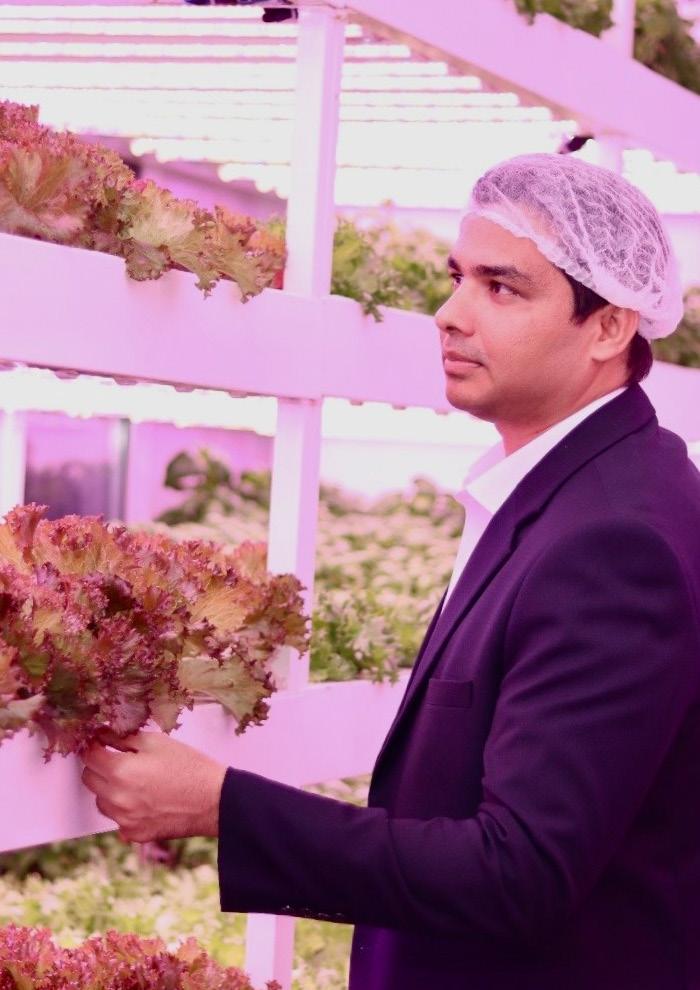
Strong supplier relationships are built on transparency, trust, and shared goals
The hospitality industry is shaped by evolving guest expectations, technology, sustainability and global factors. At both hotels, we take a proactive approach to tracking trends and applying them practically.
We stay informed through research, industry forums and brand collaboration. Guest feedback helps us refine procurement to better serve evolving needs.
We also pilot innovations with vendors and maintain flexible contracts to adapt quickly. Sustainability remains a key driver across sourcing, and cross departmental collaboration ensures alignment with guest experience goals.
What advice would you offer to those pursuing a career in hospitality procurement, especially in pre-opening and multi-brand settings?
Procurement in hospitality particularly in pre-opening and multi-brand environments, is dynamic and rewarding. It blends strategic thinking, operations, relationship building and guest experience insight.
It’s not just about products, it’s about people, performance and purpose. If you enjoy solving problems, working under pressure and contributing to memorable guest experiences, this career path offers growth, impact and long term fulfilment.
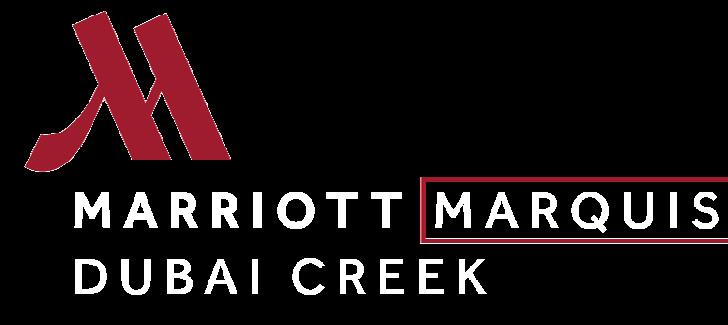
the
The hotel features spacious rooms and suites, six distinctive dining venues, a fitness centre, spa, outdoor pool, and executive lounges. Designed with a blend of Emirati heritage and modern elegance, it provides the perfect setting for both business and leisure, just minutes from Dubai International Airport and key city attractions.

Sam Achampong on ESG, Ethics, and Sustainable Leadership


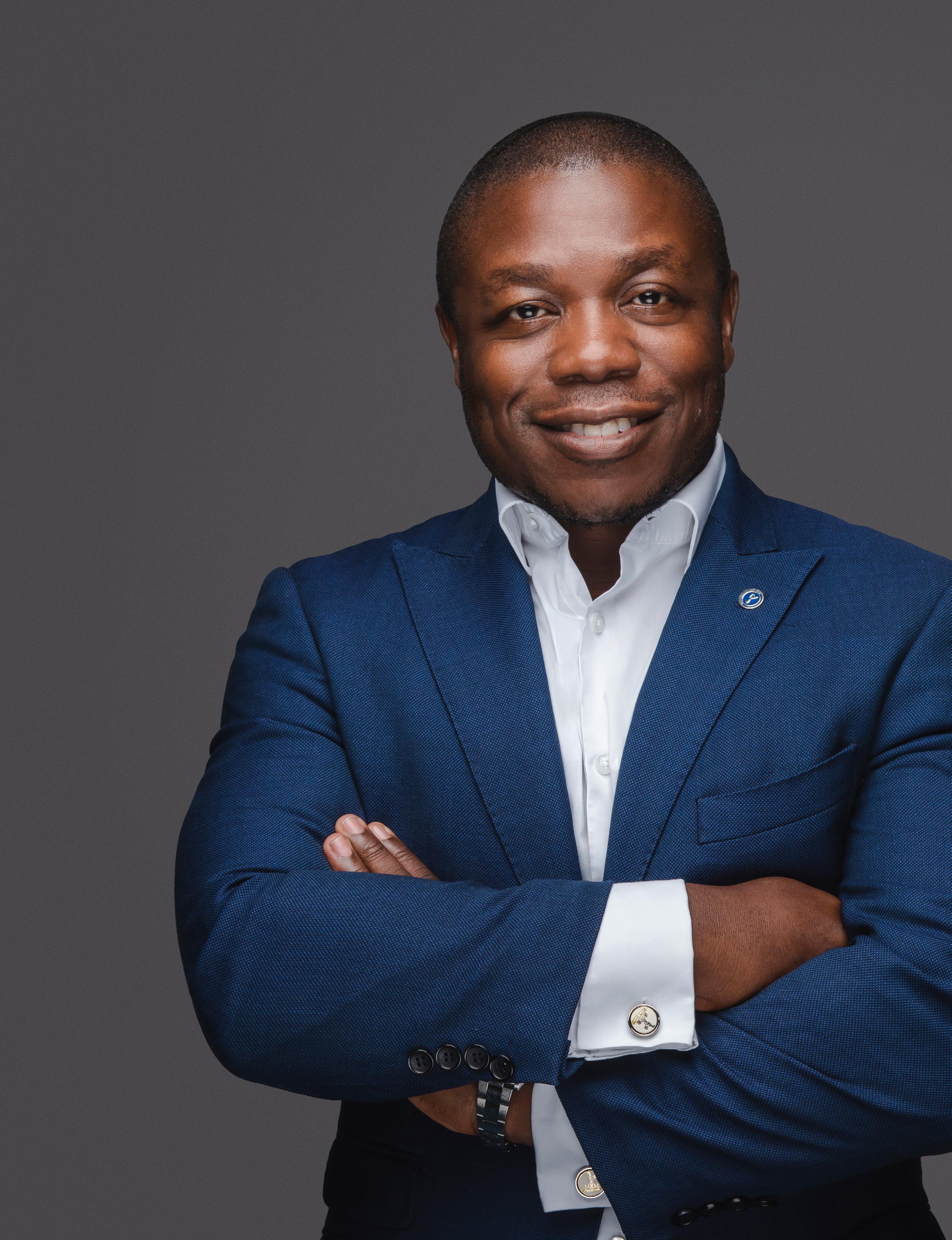
As global expectations rise around ethical sourcing, environmental stewardship, and responsible supply chains, procurement has emerged as a critical lever for delivering meaningful ESG outcomes. Sam Achampong, Regional Director for the Chartered Institute of Procurement & Supply (CIPS) across the Middle East, Africa, and Asia Pacific, has been at the forefront of this transformation.
In this Executive Insight, Sam shares how CIPS is helping governments, multinationals, and procurement professionals embed sustainability into their strategies, not just through policy, but through measurable action. From deploying frameworks like ISO 20400 and the CIPS Procurement Excellence Standard, to advancing third-party ESG assurance, Sam highlights why procurement must be both principled and pragmatic to meet the demands of today’s complex global landscape.
In my leadership role across the Middle East, Africa, and Asia Pacific, sustainability metrics are increasingly being embedded into procurement strategies through clear alignment with established frameworks such as ISO 20400 (Sustainable Procurement). This allows organisations to set measurable targets around carbon reduction, ethical sourcing, and circular economy practices.
We’re actively working with a wide range of stakeholders, including governments, multinationals, and public-sector organisations, to implement the CIPS Procurement Excellence ESG programme. This initiative is specifically designed to promote continuous improvement and best practice across procurement, supply chain, and ESG functions. To support capability building, we also provide training and certifications such as the CIPS Ethical Procurement and Supply certificate and the globally recognised CIPS kitemark.

CIPS recommends that sustainability be embedded throughout the procurement lifecycle, from category strategy development and supplier selection to contract performance management. This involves assessing suppliers’ environmental and social impact, adopting life cycle costing approaches, and integrating KPIs such as CO₂ reduction, waste minimisation, and fair labour practices directly into procurement processes.
Ultimately, embedding sustainability into procurement requires more than just frameworks and policies. It calls for a cultural shift that positions procurement as a key enabler of responsible growth, long-term resilience, and value creation across global supply chains.


Our aim is to support organisations at their unique stages of ESG maturity. These maturity levels aren’t defined solely by geography but also by industry sector and category of spend. For instance, the FMCG sector often demonstrates a more advanced supply chain maturity, whereas the construction industry faces distinct and complex ESG challenges. In regions like the Middle East, these challenges are further amplified, requiring innovative and context-specific solutions, particularly in the construction space.
CIPS has partnered with a wide range of organisations to promote sustainable sourcing practices. Entities such as the Federal Tax Authority (UAE), BAPCO, and the UAE Space Agency have earned the CIPS Corporate Ethics Kitemark, showcasing their commitment to ethical and responsible procurement.
Additionally, organisations like Dubai’s Roads and Transport Authority (RTA), Qatar Foundation, and NEOM have achieved the CIPS Procurement Excellence Standard, demonstrating not only adherence to best practice but also a dedication to continuous improvement.
These recognitions are more than just certifications; they reflect a deeper commitment to embedding ESG principles into core procurement strategies. At every stage, we work closely with stakeholders to tailor our guidance, ensuring relevance to the unique regulatory, environmental, and operational dynamics of each market.
CIPS strongly advocates a structured, risk-based approach to assessing supplier sustainability. Recommended tools include pre-qualification questionnaires aligned with international standards such as ISO 14001 (Environmental Management) and ISO 45001 (Occupational Health & Safety), alongside supplier sustainability scorecards and clearly defined KPIs related to environmental impact, ethical labour practices, and social responsibility.
ESG data platforms like EcoVadis and Sedex play a key role in helping organisations benchmark supplier performance and track improvements over time. Lifecycle analysis can also be particularly useful in identifying product-level environmental impacts.
Cost and sustainability are not mutually exclusive. The very definition of procurement is “the actions to obtain goods and services at the lowest total cost of ownership.” The key variable here lies in how we define and calculate that total cost of ownership,and in today’s world, that must include ESG considerations.
Sustainability is defined as “meeting the needs of the present without compromising the ability of future generations to meet their own needs.” Therefore, when evaluating total cost of ownership, procurement professionals must assess not only financial impact, but also long-term environmental and social implications.
Across the regions I oversee, we’ve partnered with a wide range of organisations at different stages of ESG maturity, tailoring our support to sector-specific challenges and local market dynamics. For instance, in the construction sector, particularly in the Middle East—we’ve helped organisations navigate unique sustainability obstacles by encouraging creative, regionally appropriate solutions.
Some standout examples include our work with the Federal Tax Authority (UAE), BAPCO, and the UAE Space Agency, all of which achieved the CIPS Corporate Ethics Kitemark, demonstrating strong commitments to ethical and sustainable procurement practices.
Third-party verification is highly encouraged. It provides independent assurance that suppliers are genuinely meeting their sustainability commitments. Verified certifications and accredited audits reduce the risk of greenwashing and demonstrate due diligence to regulators, investors, and stakeholders. While selfassessments can offer an initial view, third-party validation becomes critical in high-risk categories or when sustainability performance is contractually significant.
Through the CIPS Procurement Excellence ESG standard, we incorporate all of these elements into a single, comprehensive assessment, offering independent accreditation that validates an organisation’s ESG performance and commitment.

CIPS supports this by guiding organisations to embed ESG factors into cost analysis, training, and strategic decision-making frameworks. It should not be considered optional to knowingly procure in an unsustainable way, doing so violates the core principles of procurement itself, by neglecting the true total cost of ownership.
We’ve also worked with major public and private sector bodies such as Dubai’s Roads and Transport Authority (RTA), Qatar Foundation, and NEOM, who have attained the CIPS Procurement Excellence Standard. These achievements reflect measurable progress in embedding ESG into procurement strategy, governance, and continuous improvement frameworks. Each of these examples underscores the broader shift toward procurement as a strategic driver of sustainable development and shows how ESG is becoming an integral part of performance and value creation on a global scale.


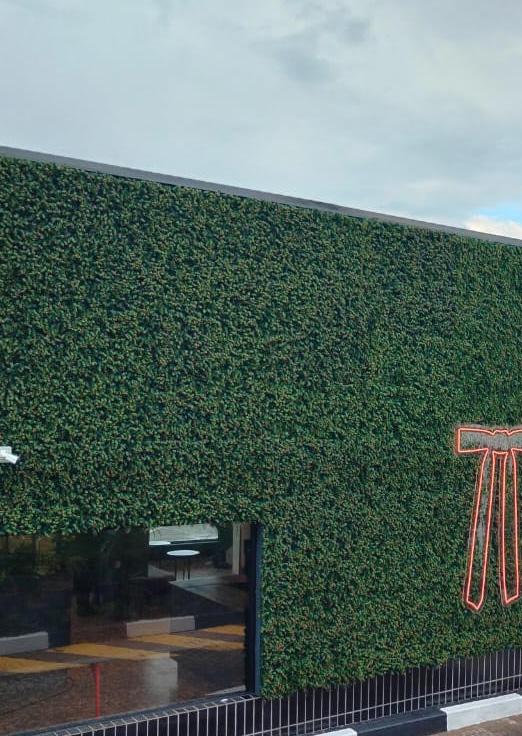

As Procurement Lead at Rohloff Group, one of Africa’s largest KFC franchisees, Louise Erasmus plays a pivotal role in ensuring operational continuity, cost efficiency, and brand consistency across nearly 100 stores. In this interview, she shares her career journey, the digital tools shaping their success, and how her team balances innovation, compliance, and sustainability in one of the most demanding sectors of retail.


Can you share your career journey and what led you to your current role as Head of Procurement at Rohloff Group? What key experiences have shaped your approach to procurement and sourcing?
My journey into procurement wasn’t traditional, it was built on tenacity, a passion for operations, and the grit to grow from the ground up. I started my career in finance and admin, first working as a Financial Assistant at BHP Billiton’s Optimum Colliery, and later transitioning into a Contracts Coordinator role after the acquisition by Optimum Coal Holdings. That period was foundational, I was deeply involved in SAP implementation, GRIR account resolution, contractor management, tendering, and strategic contract oversight. By 2010, I was acting as Contract Superintendent, managing over 35 strategic contracts, leading adjudications, and ensuring full compliance through SOPs and SLAs.
Following my time in mining, I worked in finance and HR roles at ECS and later as Credit Manager and Client Liaison at Steve Tshwete Housing, managing social housing placements, tenant approvals, financial reporting, and team leadership. Each of these experiences gave me a deep understanding of people, systems, and the importance of trust and clear processes.
In 2016, I joined the Rohloff Group as a Debtors/Creditors Administrator. I saw this not as a step back, but as a foot in the door of a growing company with purpose. I worked my way up, from overseeing reconciliations and payments to becoming Assistant Supervisor, and ultimately taking the reins as Head of Procurement. Today, I lead a dynamic team supporting around many KFC stores across South Africa.
Our scope now includes everything from daily OPEX procurement to asset management, new store builds, remodels, and running a full-scale warehouse and logistics operation. We’ve taken over distribution, launched proactive maintenance strategies through systems like Infraspeak, and achieved major savings on new builds and remodels. I’ve also been part of building a new company structure for supply chain and operations services that will scale nationally.
What shaped me? Starting from the bottom, learning through every role, and never shying away from complexity. I’ve seen how procurement, when done right, is about more than price, it ’s about partnership, integrity, and long-term operational excellence.
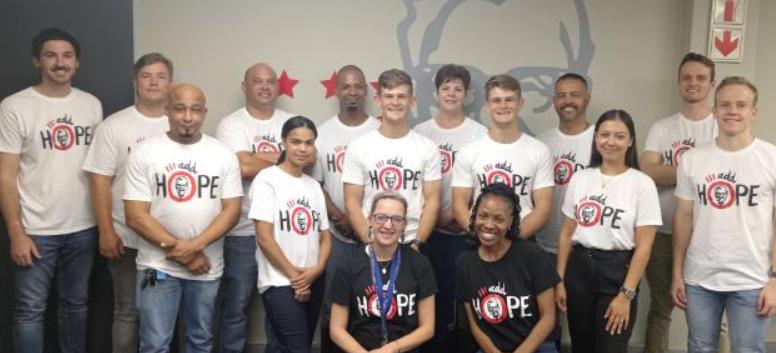
Rohloff Group is one of the largest KFC franchisees in Africa, emphasising a high-performance culture focused on customer satisfaction. How does the procurement function support these objectives, particularly in day-to-day operations and strategic initiatives?
At the Rohloff Group, procurement is not a back-office function, it’s a strategic partner in driving our high-performance culture and ensuring exceptional customer experience across all our KFC restaurants. As one of the largest KFC franchisees in Africa, consistency, speed, and quality are nonnegotiables. Procurement plays a central role in achieving this by securing reliable supply chains, standardising materials, and ensuring that every store, from Cape Town to Bloemfontein, has the same access to quality products, services, and support.
We don’t just buy, we build partnerships with suppliers. We negotiate fixed-rate contracts to protect stores from cost fluctuations, set clear service level agreements (SLAs), and monitor performance closely. Our team has implemented proactive maintenance schedules using Infraspeak to reduce downtime on critical equipment, improving operational uptime and customer satisfaction. Through our warehouse and logistics arm, we’ve taken full control of distribution, allowing us to consolidate deliveries, reduce lead times, and maintain full traceability of parts, spares, and smallwares. This centralisation has helped us eliminate inconsistencies and cut delays, especially on project rollouts like remodels, new builds, and kiosk implementations.
Ultimately, procurement supports the franchise’s objectives by being solutions-driven, data-led, and deeply aligned with operational needs. We are constantly evolving, looking at ways to drive savings without compromising on quality, and enabling the business to scale confidently without losing its brand promise.
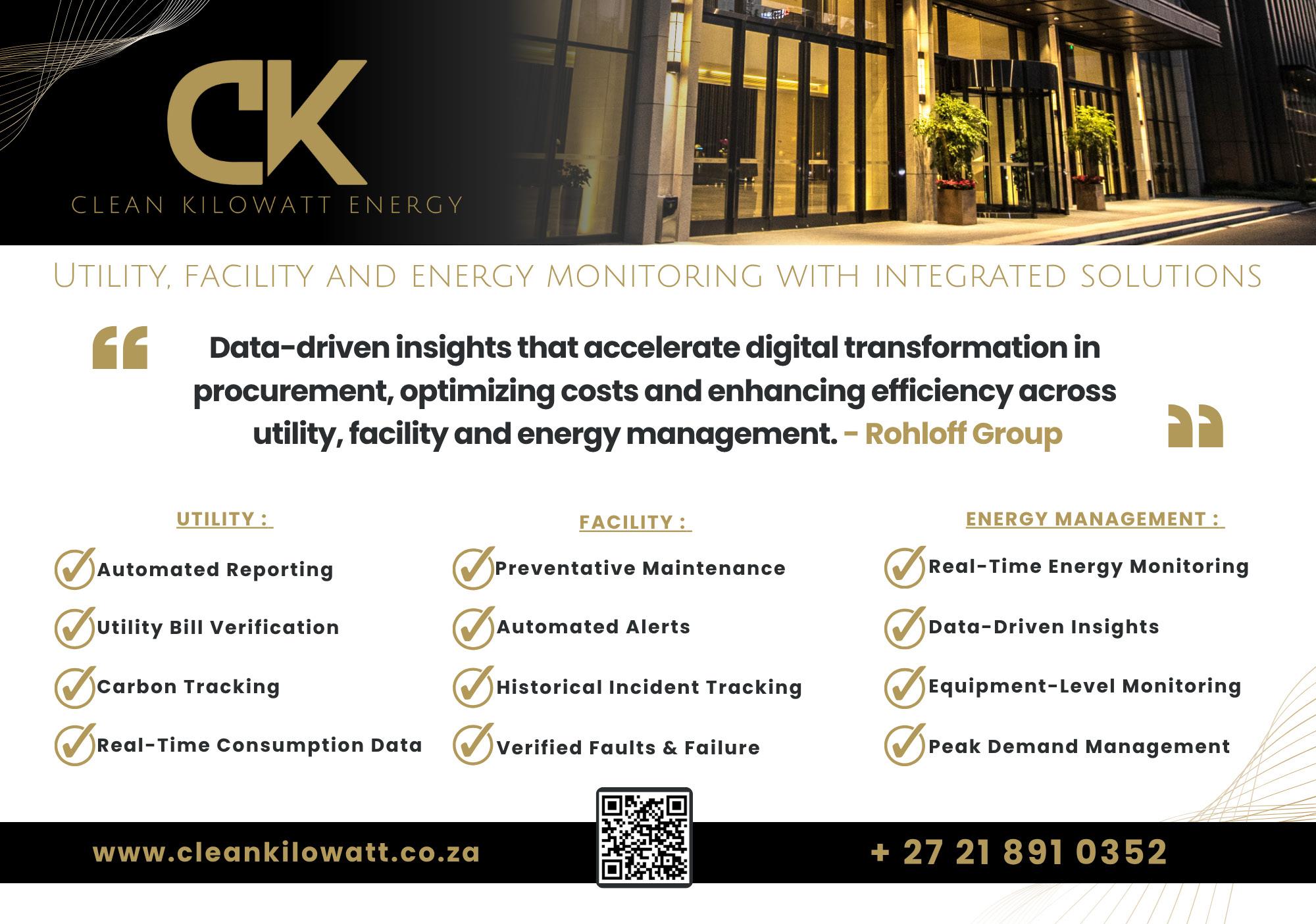
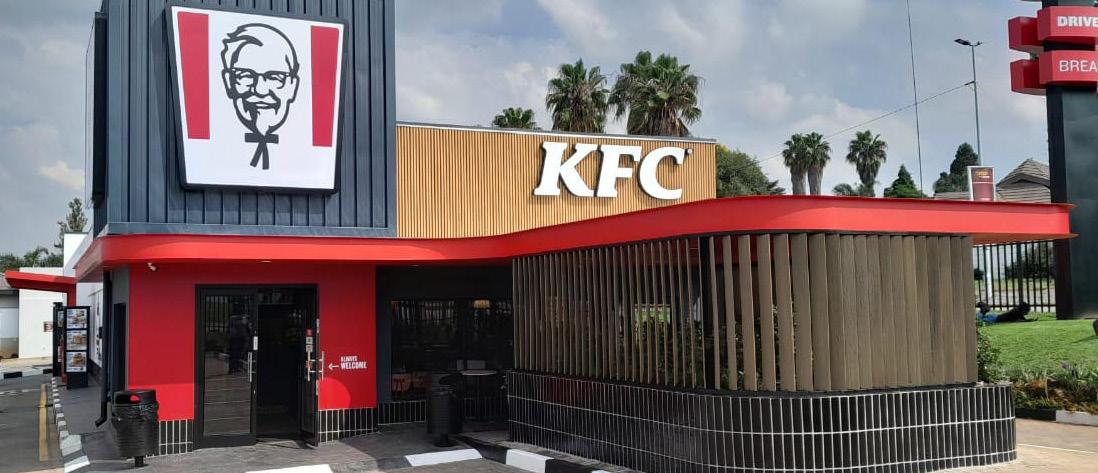
Sustainability is becoming increasingly important in supply chain management. How is Rohloff Group integrating sustainable practices into its procurement processes, and what initiatives have been most impactful?
Sustainability in procurement isn’t a buzzword for us, it’s a responsibility. At the Rohloff Group, we understand that our decisions today shape the environmental and operational landscape of tomorrow. The scale of our procurement gives us the power, and the duty, to make more sustainable choices.
We don’t just buy, we also sell, and we do so responsibly. One of our most impactful sustainability initiatives is the structured resale of our used cooking oil to an approved partner who converts it into biodiesel. This not only ensures compliance and safe disposal but also contributes to the circular economy by turning waste into renewable energy.
Waste management is another key focus. We work with registered and vetted partners to discard waste responsibly and legally, ensuring environmental compliance across all regions in which we operate. Whether it’s old assets, packaging materials, or general waste from operations, we prioritise safe and traceable disposal methods.
Our proactive maintenance and asset tracking system via Infraspeak enables us to reduce unnecessary replacements by extending the life of equipment through timely repairs, helping both the environment and our bottom line. Additionally, when equipment from remodels or relocations can be salvaged, we refurbish and repurpose it, further reducing landfill waste.
In our warehouse and logistics function, we’ve consolidated deliveries to reduce fuel consumption and emissions, while also engaging suppliers who support energy-efficient, locally manufactured, and recyclable solutions.
Sustainability is embedded in how we think and operate. For us, procurement is not only about cost and speed, it’s also about making smart, long-term, environmentally responsible decisions that keep our stores and our planet running smoothly.
Rohloff Group was recognised for the ‘Best Use of Digital Technology’ at the CIPS Africa Conference. Can you elaborate on how digital tools are being utilised in procurement to enhance efficiency and transparency?
Digital transformation is at the heart of our procurement evolution at Rohloff Group, not as a trend, but as a strategic enabler of efficiency, visibility, and impact. We were honoured to be recognised at the CIPS Africa Conference in 2024 for ‘Best Use of Digital Technology’, and we’re proud to share that we’ve been named finalists in the 2025 CIPS Excellence in Procurement and Supply Awards for Best Collaborative Teamwork Project, Procurement Team of the Year, Large Organisation, and Best Use of Digital Technology.
These nominations are a reflection of how we’ve leveraged digital tools to build a smarter, faster, and more responsive procurement environment, one that directly supports our KFC stores and broader commercial operations.
Last year, we submitted our Infraspeak integration, a digital maintenance and asset management platform that allows us to track, plan, and analyse all repairs and maintenance activities. This has empowered us to transition from reactive to proactive procurement, resulting in cost savings, extended asset life, and reduced downtime across the board.
This year, we’ve taken it a step further by entering with the Clean Kilowatt energy management system. This tool is a game-changer, giving us real-time data on what every piece of equipment in a store consumes in energy, and the ability to automate switch-off routines for equipment that doesn’t need to be running. It’s not just smart, it’s sustainable, helping us reduce unnecessary consumption and take a major step toward environmental accountability.
Together, these tools have redefined how we measure performance, manage supplier compliance, and make strategic decisions. From transparent audit trails to automated reporting, we’ve built a procurement system that’s digitally empowered, operationally agile, and future-focused. At Rohloff Group, digital procurement isn’t just a support function, it’s the engine behind consistency, cost control, and continuous improvement.

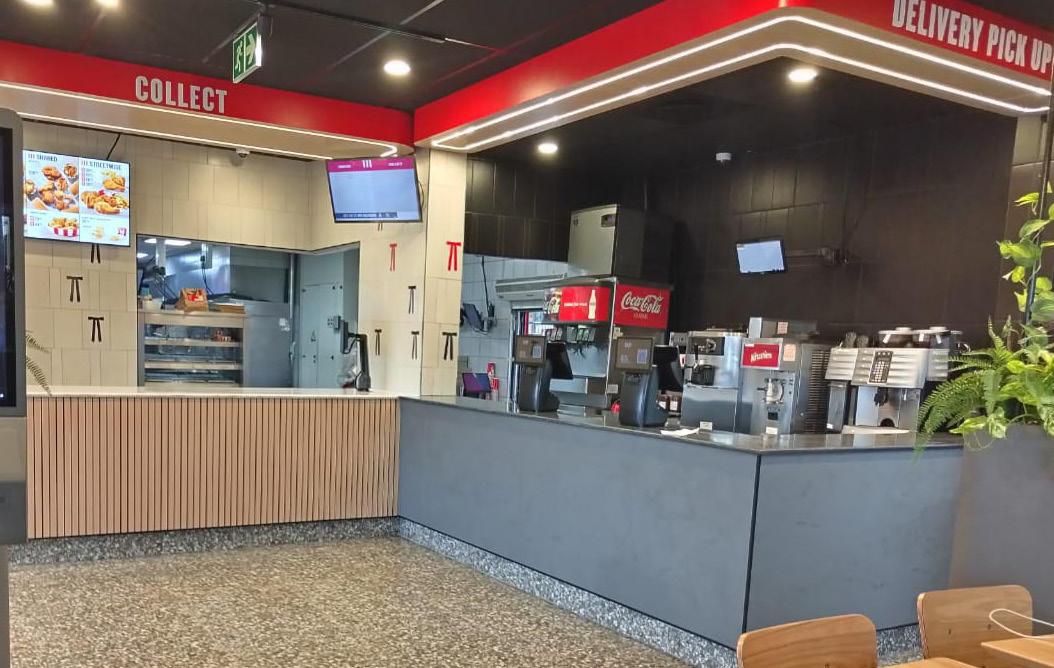
Building strong supplier relationships is crucial in the food service industry. What strategies do you employ to maintain robust partnerships with suppliers, ensuring quality and costeffectiveness?
Building strong, enduring supplier relationships is critical in the food service industry, where reliability, quality, and cost precision are non-negotiable. At Rohloff Group, we treat suppliers not just as vendors, but as strategic partners aligned with our brand promise and customer-first culture. We segment our suppliers based on spend, criticality, and mutual value potential. For our most strategic partners, we have dedicated relationship managers and executive sponsorship in place, supported by a regular governance cadence that spans procurement, operations, quality, and logistics. This structure ensures transparency, provides clear escalation paths, and drives accountability across our supply chain.
Open communication is key to maintaining strong partnerships. We share our short-, mid-, and long-term goals with suppliers, aligning them with our plans for expansion, sustainability, and quality improvement. In return, we welcome visibility into their roadmaps and capabilities, enabling mutual growth and continuous optimisation. This level of strategic alignment fosters trust and innovation, ensuring suppliers are equipped to anticipate our needs and offer proactive solutions.
To ensure accountability and encourage collaboration, we conduct joint performance reviews using balanced scorecards that measure quality, delivery, pricing, sustainability, and innovation. These sessions allow for open feedback, identify areas for improvement, and promote shared success. We also run regular supplier summits and review meetings, structured forums where we explore innovation ideas, performance insights, and future opportunities together.
Transparency plays a vital role in supplier engagement. We share demand forecasts and asset usage data, captured through systems like Infraspeak and Clean Kilowatt, to help suppliers plan ahead and support our efficiency goals. Through continuous feedback loops, suppliers are encouraged to suggest improvements and efficiency opportunities, which we review and implement jointly where appropriate.
Ethical standards and sustainability alignment are non-negotiable. We only engage with suppliers who meet our compliance expectations and, where required, hold relevant certifications. We also provide training support where needed and make supplier selection decisions based on shared values, not just pricing.
Importantly, we make a point to recognise and celebrate supplier contributions, whether through success stories, public acknowledgements, or collaboration awards. This builds goodwill and encourages further investment from our partners in innovation, reliability, and sustainability initiatives. By focusing on collaboration over transaction, transparency over ambiguity, and shared success over one-sided gains, our supplier relationship approach builds trust, resilience, and long-term value, helping us consistently deliver the quality and service expected at every Rohloff-run KFC store.
Digital transformation is at the heart of our procurement evolution at Rohloff Group, not as a trend, but as a strategic enabler of efficiency, visibility, and impact
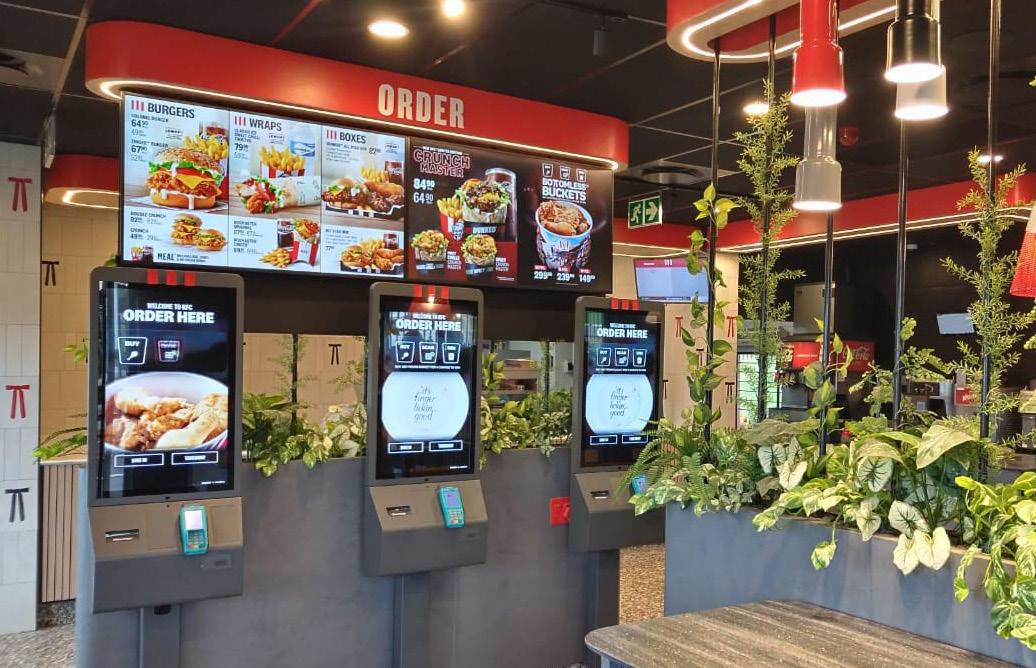
Given the complexities of the quick-service restaurant industry, how does your procurement team manage risks related to supply chain disruptions to ensure continuity and resilience?
In the quick-service restaurant industry, where operational uptime and customer satisfaction are paramount, risk management isn’t a function, it’s a mindset. At Rohloff Group, we operate close to 100 KFC stores, and our procurement team plays a critical role in ensuring continuity, resilience, and brand protection.
It’s important to note that Food & Paper procurement is governed directly by the brand holder, YUM, to ensure global compliance with KFC’s strict food safety and quality standards, this is how the “perfect taste” is guaranteed in every meal. Our role as the franchisee lies in everything else that keeps the restaurant running: equipment, spares, maintenance services, projects, and day-to-day operational supplies, and this is where risk truly comes into play.
We actively manage risk through a diversified supplier network and centralised warehousing. This allows us to hold critical spares, smallwares, and backup stock in Cape Town, with plans to scale the same capability to Johannesburg. By building this localised stockholding model, we can buffer against supplier delays, load shedding, and regional disruptions. Our asset management approach has also shifted from reactive to proactive, thanks to the implementation of Infraspeak. By tracking asset history and performance trends, we can forecast potential failures, pre-source components, and reduce the risk of unplanned downtime, which is a major win for operational continuity.
Building strong, enduring supplier relationships is critical in the food service industry, where reliability, quality, and cost precision are non-negotiable.
Energy availability and cost are additional risks, especially in South Africa. Our Clean Kilowatt energy management system provides granular insight into how much energy each piece of equipment consumes, allowing us to automate switch-off routines and control energy loads. This not only reduces consumption but also helps prevent equipment failure or overload caused by power issues. Strong supplier relationships play a significant role in crisis resilience. Through long-term, trust-based partnerships, we are often prioritised for emergency deliveries or fast turnaround times. It’s not just about service-level agreements, it’s about mutual accountability and strong relationship capital. For store remodels, new builds, and project work, we mitigate risk by pre-qualifying vendors, managing timelines closely, and building buffers into lead times. This protects critical launch or reopening dates and ensures smooth execution even in high-pressure environments.
Finally, our decision-making is increasingly data-led. With over two years of maintenance and procurement data captured, we are able to model risk, spot trends, and make strategic calls based on real-time store-level intelligence. Whether facing price fluctuations, delivery failures, or part shortages, we aren’t operating in the dark, we’re guided by insight.
At Rohloff Group, risk management in procurement means being hands-on, data-smart, and peopledriven. We work in the background so our restaurants never stop delivering the experience our customers expect, no matter what happens in the supply chain.
Balancing cost efficiency with quality is vital in procurement. What innovative cost-saving strategies have you implemented without compromising on the quality of products and services?
Balancing cost and quality in procurement is a constant exercise in strategy, creativity, and discipline. At the Rohloff Group, we don’t take shortcuts, we engineer long-term solutions that protect brand standards, ensure operational continuity, and reduce spend across our restaurants.
One of our most impactful strategies has been shifting from fragmented purchasing to consolidated, group-wide procurement. By negotiating fixed rates and buying in bulk for items such as equipment spares, smallwares, and maintenance consumables, we’ve achieved significant savings while improving supplier service levels and reducing price volatility.
We also run a refurbishment programme that allows us to recondition and repurpose assets, including fryers, warmers, counters, and signage, for use in future stores. Rather than scrapping valuable equipment during remodels or relocations, we extend the lifespan of these assets, dramatically cutting capital expenditure and reducing landfill waste and downtime.
Bringing our warehouse and logistics operations in-house has also been a major cost-saving breakthrough. By removing third-party markups and gaining direct control over stockholding and deliveries, we’ve significantly improved distribution efficiency, reliability, and responsiveness, all while reducing costs.
Our digital maintenance strategy, powered by Infraspeak, enables us to track asset history and maintenance spend across our stores. This visibility allows us to plan interventions, prevent emergency callouts, and identify high-cost or high-failure items. As a result, we’ve been able to reduce unnecessary spend and extend the life of critical equipment.
Energy consumption is another key focus. With the rollout of Clean Kilowatt, we now monitor and control energy usage per device across our network. Automated switch-offs for non-essential equipment have allowed us to cut energy costs, particularly in stores facing high utility bills or unreliable power supply. It’s a smart, sustainable solution with immediate ROI.
Finally, we work closely with suppliers to lock in annual rates with clearly scoped deliverables. This has helped protect us against inflation-driven increases and eliminated ambiguous extras. With structured SLAs in place, we ensure consistent service at the agreed value.
Ultimately, our cost optimisation philosophy is simple: never compromise on quality, optimise everything around it. By combining data, systems, supplier partnerships, and operational insight, we’ve built a procurement approach that enables growth, stability, and savings, all at once.
The food service sector is subject to stringent regulations. How does the procurement team ensure compliance with health and safety standards while maintaining operational agility?
In the food service sector, particularly within franchise operations like KFC, regulatory compliance is non-negotiable due to strict health, safety, and brand standards. At the Rohloff Group, our procurement team ensures full compliance while maintaining operational agility through a multilayered approach that blends structure, technology, and collaboration.
We operate under the rigorous brand standards of Yum! Brands, which incorporate all relevant health and safety regulations. These standards form the baseline for every procurement decision, ensuring that each product, ingredient, and service meets or exceeds the necessary regulatory requirements. To support this, we partner with a carefully vetted list of preferred suppliers who hold the appropriate compliance credentials and certifications. This includes adherence to local and international food safety protocols, such as HACCP and ISO standards, which ensures consistency, safety, and legal alignment across our supplier base.
Our team conducts regular supplier audits and compliance checks to verify that standards are being maintained. This proactive monitoring allows us to identify and resolve potential issues early, reducing risk and safeguarding quality across our nearly our stores.
Cross-functional collaboration is key to remaining agile. Procurement works closely with operations, quality assurance, and legal teams to stay ahead of regulatory changes and adapt sourcing strategies accordingly. This alignment ensures swift decision-making without compromising compliance.
We also leverage technology to manage and monitor compliance. Systems like Infraspeak help track asset and maintenance management, while Sage Evolution supports financial oversight and contract compliance. Real-time data and analytics give us early visibility into risk areas, enabling faster, more informed corrective actions.
Ongoing training ensures our team remains well-versed in evolving standards and brand requirements. We maintain clear communication channels with both suppliers and internal teams to address compliance challenges promptly and effectively.
It’s also worth noting that while food and paper products are controlled centrally by Yum! to guarantee brand consistency and food safety, our negotiations focus on pricing and service levels, always within the strict confines of approved specifications. This ensures compliance is never compromised in pursuit of cost efficiency.
Through this structured, proactive approach, the procurement team upholds regulatory and health standards as a foundation, while maintaining the flexibility and responsiveness required in a fastpaced operational environment.
What emerging trends do you foresee impacting procurement in the quick-service restaurant industry, and how is Rohloff Group preparing to adapt to these changes?
The quick-service restaurant (QSR) industry is evolving rapidly, and procurement must stay ahead of emerging trends to maintain competitive advantage, cost-efficiency, and compliance. At Rohloff Group, we are proactively adapting to several key shifts shaping the future of procurement.
Digital transformation and data analytics are redefining how we manage procurement. The increasing use of digital platforms and advanced analytics tools enables better forecasting, supplier performance tracking, and spend visibility. We leverage systems like Infraspeak and Sage Evolution to gather real-time data on repairs, maintenance, and purchasing patterns. This data-driven approach allows us to optimise inventory, predict maintenance needs, and uncover cost-saving opportunities before they become challenges.
Sustainability and ethical sourcing are also growing priorities, driven by consumer expectations and regulatory pressures. We are embedding sustainability criteria into supplier evaluations and procurement decisions, prioritising partners who demonstrate environmental stewardship, waste reduction, and fair labour practices. These efforts align closely with Yum! Brands’ global sustainability commitments and our responsibility as a franchise operator.
The post-pandemic landscape has further highlighted the importance of supplier collaboration and diversified sourcing. Strong, trusted supplier relationships and agile sourcing strategies are essential to navigating supply chain disruptions. At Rohloff Group, we continue to invest in long-term partnerships that support flexibility, continuity, and innovation.
Process automation is another area gaining momentum. By automating tasks such as tendering, invoicing, and reporting, we can reduce manual errors, speed up procurement cycles, and free our teams to focus on more strategic initiatives. We are actively exploring automation tools to streamline workflows and drive greater efficiency.
As regulatory frameworks and brand standards grow more complex, procurement must remain deeply embedded in compliance processes. Our integrated systems and cross-functional collaboration ensure that every procurement activity, from specification through to delivery, aligns with both internal policies and external requirements, without compromising operational agility. There is also an increasing trend toward localisation to reduce lead times, logistics costs, and environmental impact. We’re exploring opportunities to expand local sourcing within South Africa and neighbouring regions, balancing cost, quality, and sustainability while strengthening our supply chain resilience.
Finally, innovation in foodservice equipment is opening up new procurement categories. From energyefficient appliances to smart kitchen technologies, these advancements require updated technical knowledge and proactive engagement with suppliers. Rohloff Group stays closely connected with equipment vendors and brand experts to evaluate and adopt these innovations, helping improve store efficiency and sustainability.
By anticipating and embracing these trends, Rohloff Group continues to position itself as a procurement leader in the QSR space, one that balances cost, quality, compliance, and sustainability to support long-term growth and operational excellence.
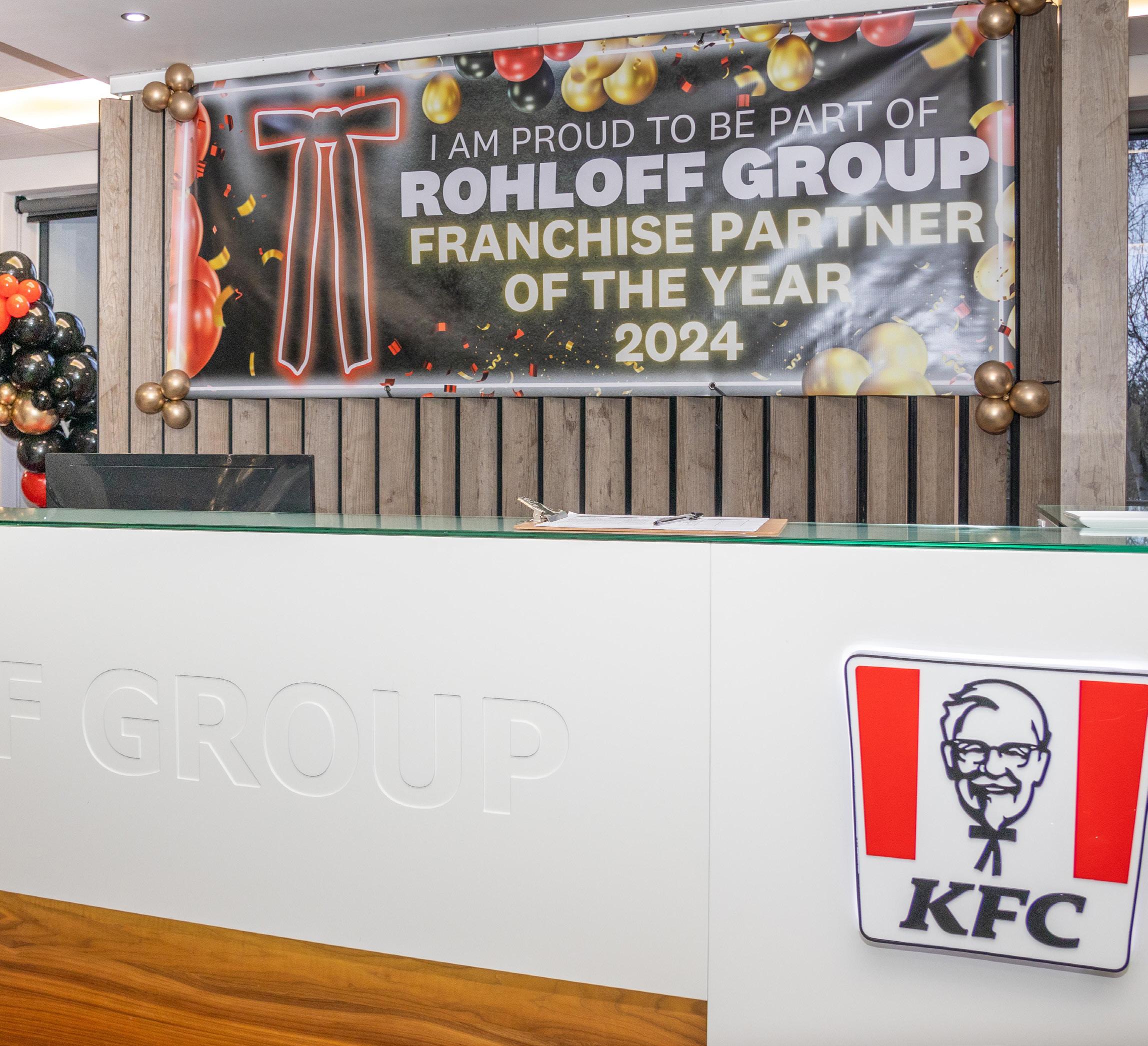
Based on your experience, what advice would you offer to individuals aiming to advance their careers in procurement within the food service industry? What skills and experiences are essential for success in this field?
Having worked in procurement for over eight years within the fast-paced, highly regulated quickservice restaurant (QSR) industry, here’s the advice I’d offer to those looking to build a successful career in this field.
First and foremost, understand the business and the brand. Procurement in food service isn’t just about buying, it’s about supporting the brand’s promise and ensuring a consistent customer experience. Learn the operational challenges of running QSR stores and the strict standards set by brand owners like Yum! Brands. This context will help you make decisions that drive real value while maintaining quality and compliance.
Strong supplier relationships are equally essential. The best results come from suppliers who see you as a strategic partner, not just a customer. Invest time in building trust, understanding their challenges, and working collaboratively, it makes a significant difference in both cost and service outcomes.
Being comfortable with data and technology is also critical. Tools like Infraspeak and Sage Evolution help track spend, contracts, and asset performance. A data-savvy approach allows you to forecast needs, identify savings opportunities, and make informed, proactive decisions that support business agility.
Adaptability is another must-have. The QSR industry moves quickly, and you’ll often face unexpected issues, from supply chain disruptions to last-minute regulatory updates. The ability to think on your feet and provide solutions under pressure will set you apart.
Strong communication and collaboration skills are vital. Procurement sits at the centre of multiple functions, suppliers, operations, finance, and compliance. Clear, confident communication helps align stakeholders, drive accountability, and keep projects on track.
You also need to master negotiation and cost optimisation. Successful procurement professionals understand that value goes beyond price, it includes quality, reliability, service, and timing. Learning to balance cost savings with brand standards is a skill that grows with experience. Compliance awareness is crucial, especially in food service. Understanding regulatory requirements and managing supplier performance protects both customer safety and brand integrity. Be proactive, detail-focused, and solution-oriented.
Finally, never stop learning. The procurement landscape is constantly evolving, from sustainability expectations to digital innovations. Stay curious, seek mentorship, and invest in continuous development to remain relevant and impactful in your role.
My final thought: Procurement in the food service industry is a challenging yet rewarding career path. It requires a unique blend of business acumen, relationship-building, technical knowledge, and emotional intelligence. Those who embrace these qualities won’t just succeed, they’ll become invaluable to their organisations

Rohloff Group has grown to be one of the largest KFC franchises in Africa, boasting a high performance culture focused on the ultimate guest experience, to #SatisfyEveryCustomer.


With a career shaped by hands-on experience in engineering, trading, and international supply chains, Javad Mohammadi brings a unique, cross functional perspective to procurement leadership. As Group Chief Procurement Officer at Mammut Group, a diversified conglomerate spanning trailer and truck manufacturing, construction, sandwich panels, and automotive, he oversees procurement strategy across one of the region’s most complex industrial ecosystems.
In this exclusive interview, Javad shares his journey from managing his first import as a teenager to leading digital transformation and sustainability initiatives at scale. He offers insights into the Group’s approach to supplier collaboration, AI integration, risk management, and the evolving role of procurement in driving both innovation and operational excellence. His forward looking perspective highlights what it takes to lead with impact in today’s rapidly changing supply chain landscape.

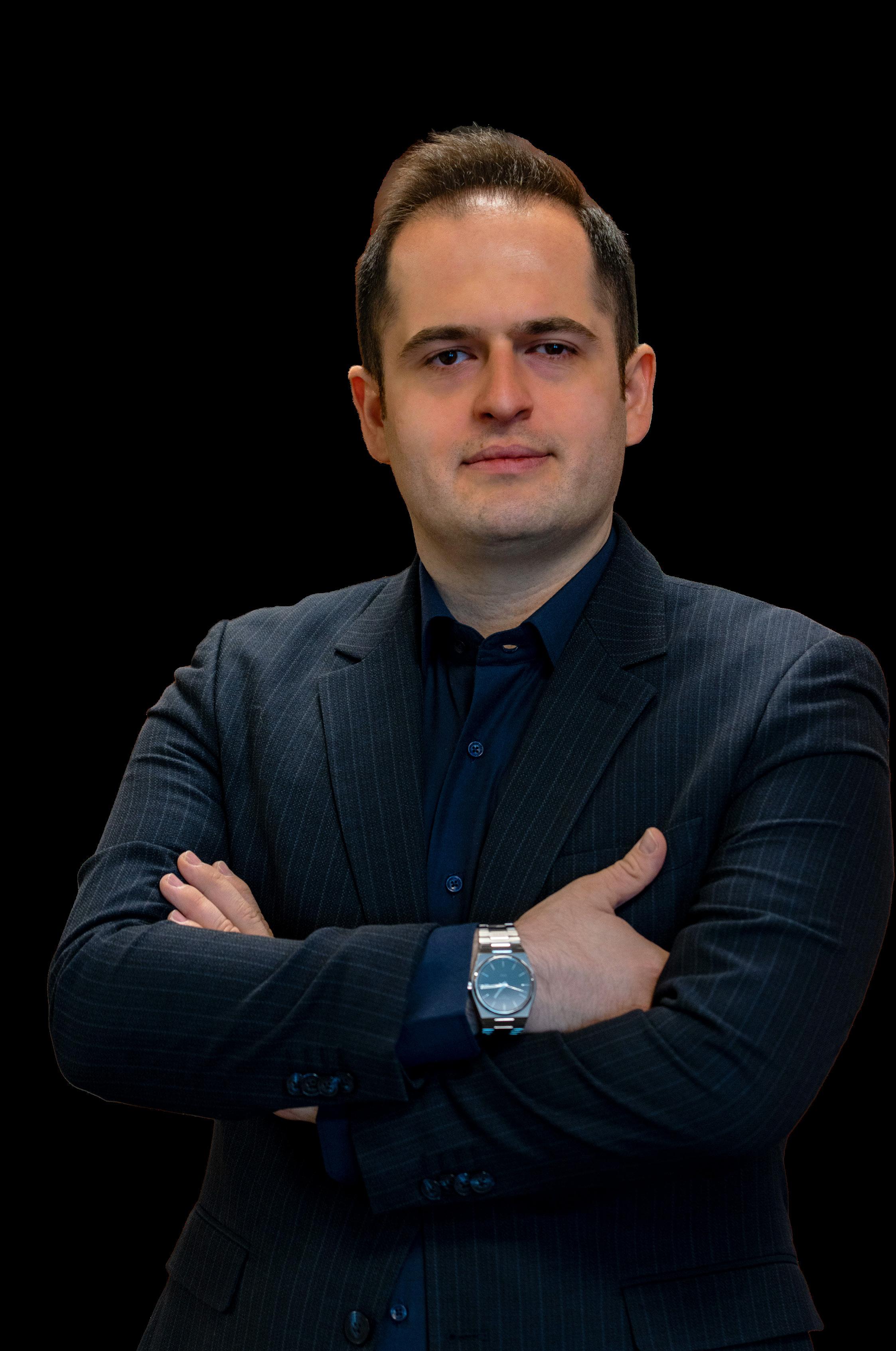
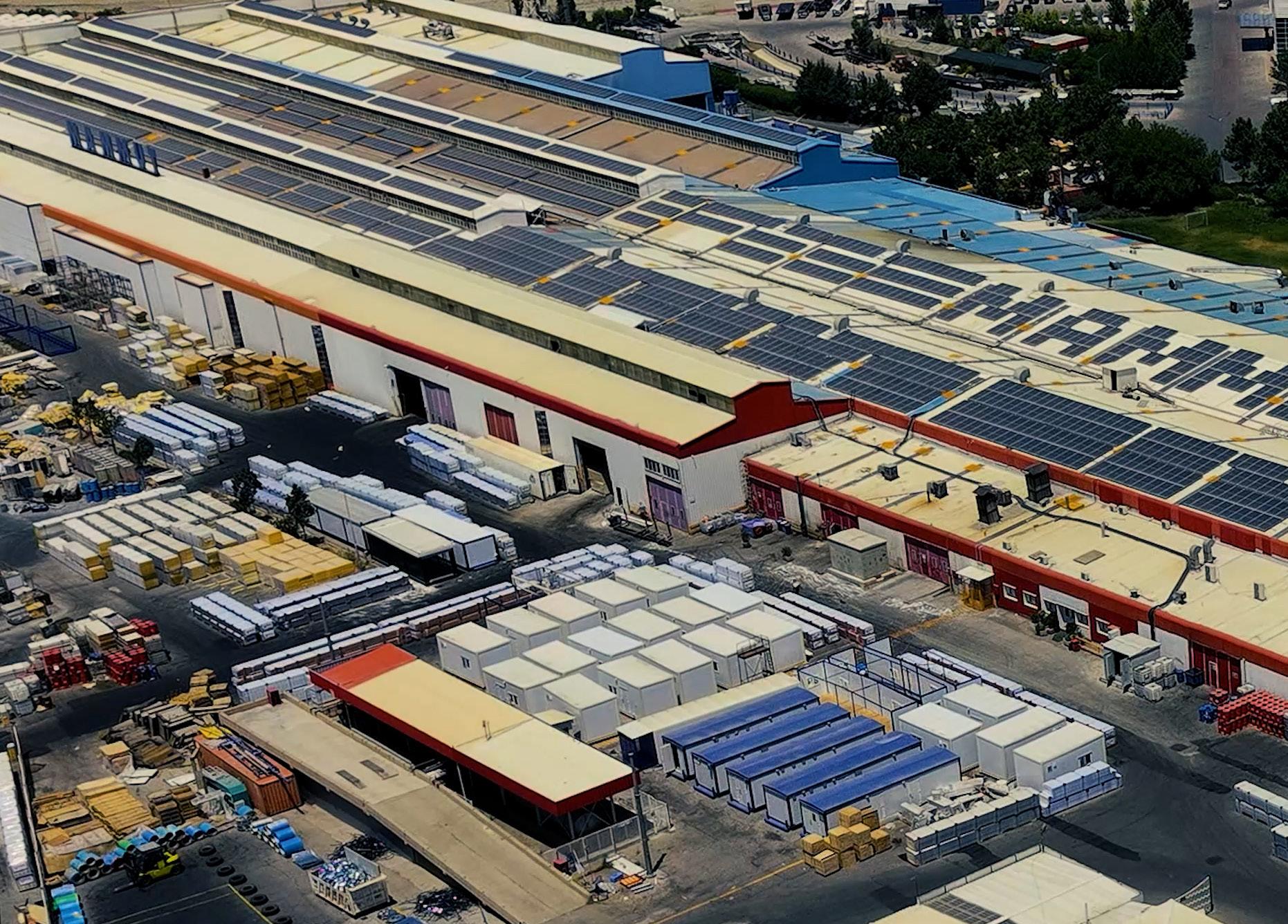
Can you share your career journey and what led you to your current role as Group Chief Procurement Officer at Mammut Group? What experiences have most influenced your approach to procurement and leadership?
My career began with a background in mechanical engineering, but it was my early involvement in my father’s trading business during high school that sparked a deep interest in procurement and supply chain management. I even managed my first importation as a teenager, facing real world challenges that laid the foundation for my future career.
Professionally, my transition into procurement evolved organically. In my third year of work experience, I took on responsibilities in localisation, importation, and overseas sales at a medium sized company. These multifaceted roles broadened my understanding of procurement’s strategic impact, extending beyond traditional functional boundaries.
A pivotal milestone in my career came when I was promoted to lead importation operations for 16 automotive OEM companies. This role significantly deepened my expertise in managing complex, multi company supply chains and sharpened my strategic outlook.
I was drawn to my current role as Group Chief Procurement Officer by the opportunity to operate at a larger scale and drive transformation within a holding company structure. The challenge, coupled with the company’s values, aligned perfectly with my professional ambitions.

Over the years, my approach to procurement leadership has evolved through three key phases: beginning with cost optimisation, progressing to supplier development, and most recently, spearheading digital transformation initiatives. This evolution reflects my belief that procurement is a strategic enabler of business value, not merely a cost centre.
I describe my leadership style as data driven and hands on. I prioritise total value efficiency, comprehensive risk management, and the cultivation of strong supplier relationships. Empowering my teams by developing both their technical capabilities and soft skills is central to how I lead.
Procurement has transformed considerably since I started, from transactional importation to strategic, localised sourcing empowered by digital tools. Looking ahead, I firmly believe the future of procurement leadership will be defined by data driven decision making, strategic digitalisation, and organisational resilience. I’m committed to embedding these principles into our team and processes to ensure sustained success.
Procurement is critical in ensuring the quality and reliability of manufacturing. How does your procurement team support Mammut Group’s commitment to high-quality engineered products?
As a diverse group spanning automotive, trailer and truck manufacturing, construction, and solar energy, our procurement function plays a crucial role in maintaining the high standards of our engineered products. Our Supplier Relationship Management (SRM) team leads rigorous supplier evaluation processes, assessing technical capabilities, production capacity, and alignment with our strict quality requirements.
From the outset, we ensure early collaboration between procurement, engineering, and quality assurance teams. This cross functional alignment guarantees that suppliers meet both technical and operational standards before production begins.
We apply a flexible sourcing strategy that balances cost, quality, and supply risk. Our approach is tailored to the specific sourcing context, enabling us to mitigate potential disruptions through measures such as dual sourcing and robust contract management. Supplier performance is continuously monitored through our ERP systems, allowing for real time tracking and data driven improvements.
Our SRM practices also prioritise long term supplier development. By continuously assessing and supporting our partners, we ensure alignment with Mammut Group’s commitment to high quality products and operational excellence.




Sustainability is becoming increasingly essential across industries. How is Mammut Group integrating sustainable practices in its procurement and supply chain operations?
Our company is fully committed to sustainability within procurement and the broader supply chain, with a strong focus on waste reduction, emissions control, and responsible sourcing. Key initiatives include the development of a 10 hectare waste separation site, the implementation of advanced waste treatment processes, and the adoption of technologies aimed at restructuring high emission production lines. In parallel, we are investing in renewable energy, with plans to supply over 15 MW of solar power to our operations through panel installations across our industrial facilities.
Sustainability is a critical factor in our supplier evaluation process. While we prioritise suppliers who align with our environmental goals, we also recognise the financial challenges many of them face, especially during periods of economic uncertainty. To address this, we adopt a pragmatic and collaborative approach, working closely with suppliers to encourage sustainable improvements without compromising cost effectiveness.
We maintain close collaboration with our HSE and R&D teams to ensure full compliance with ESG standards, embedding sustainability across every phase of product development, sourcing, and supply chain management. While our ability to track sustainability metrics within our ERP systems is still evolving, we are actively working to integrate these capabilities for improved transparency and accountability.
Looking ahead, we have made it a requirement that all new production plants be designed as green factories. This ensures that sustainability remains a foundational element of our growth strategy and operational practices.

What strategies do you use to build strong, transparent relationships with suppliers, and how do you ensure suppliers consistently meet the high standards required for quality and safety?
At our Group company, we have developed a sophisticated, metrics driven approach to building robust and transparent relationships with suppliers, while upholding the highest standards of quality and safety across our diverse portfolio of industries.
Our supplier relationship management (SRM) strategy begins with a comprehensive evaluation process. Subsidiary procurement teams identify potential partners, after which my team at the Group level conducts rigorous assessments using key performance indicators (KPIs). These KPIs cover a wide range of criteria, including production capabilities, financial stability, reliability, industry references, logistical efficiency, technical expertise, and flexibility in trade terms. This thorough vetting ensures we select suppliers who align with our values and commitment to operational excellence.
For our strategic suppliers, those essential to our long term success, we foster trust and transparency through structured engagement. This includes regular feedback sessions and scheduled conference calls, which help maintain open communication, align expectations, and drive continuous improvement.
To uphold our stringent quality and safety standards, our dedicated quality assurance and control teams require industry recognised certifications and conduct supplier audits based on established benchmarks. These audits, combined with continuous performance monitoring through SRM metrics, ensure that our suppliers consistently meet expectations, even within the complex landscape of a multi industry operation.
By prioritising strategic partnerships and leveraging data driven insights, we not only maintain exceptional quality and safety standards but also cultivate long term, collaborative relationships that drive innovation and contribute to our sustained operational success.
How is Mammut Group leveraging digital technology to enhance supply chain operations, and what recent advancements have had the most significant impact on efficiency and transparency?
Mammut Group, which manages subsidiaries across the trailer, sandwich panel, construction, and automotive industries, has embraced digital transformation as a core strategy to optimise its global supply chain. Among the most impactful advancements is the integration of artificial intelligence (AI), which has become a key driver of efficiency and transparency across our operations.
Operating in diverse sectors, we leverage a suite of digital technologies including SAP’s ERP system (with modules such as Material Management, Controlling, and Financial Accounting), IoT for vehicle monitoring, automation in manufacturing, and advanced data analytics. However, our recently launched AI driven performance project has become a cornerstone of our transformation strategy.
AI is being used to analyse performance data across multiple functions, enabling our teams to develop data driven strategies that improve decision making. Within the procurement function, AI powered analytics, supported by a dedicated data analytics specialist within our newly consolidated digital and IT subsidiary, generate dynamic management dashboards. These dashboards give stakeholders actionable insights and improve visibility into supplier performance and selection processes via our Supplier Relationship Management (SRM) system. This enhanced transparency allows us to optimise supplier relationships and build a more resilient, responsive supply chain.
Beyond procurement, we have deployed IoT solutions through a dedicated subsidiary, enabling real time data collection from trucks and trailers. This data provides critical operational insights to both drivers and logistics partners, improving fleet management and end to end visibility. On the manufacturing side, automation such as our automated paint line for trailers and trucks has delivered substantial efficiency gains, reducing painting process costs per vehicle by 50 percent.
SAP underpins these efforts by streamlining inventory, financial, and operational workflows across our global operations. However, it is AI’s unique ability to synthesise and analyse data from across these systems that is proving truly transformative, enabling predictive insights and strategic planning at scale.

How does your team approach inventory management and demand forecasting to ensure availability while optimising costs, especially given the fluctuating demands in your industry?
At our Group company, managing subsidiaries in the trailer, sandwich panel, construction, and automotive industries, we employ a strategic and data driven approach to inventory management and demand forecasting. Our goal is to ensure consistent product availability while optimising costs in response to fluctuating market conditions. Planning teams across our subsidiaries utilise SAP’s Material Management (MM) and Advanced Planning and Optimisation (APO) modules to generate accurate forecasts and manage inventory. The outputs from these systems feed directly into the Group procurement function, ensuring alignment with production schedules and operational requirements.
Our demand forecasting process relies heavily on market trend analysis, enhanced by predictive data for strategic commodities through SAP APO. This capability enables us to anticipate market shifts and adopt flexible inventory strategies. In favourable market conditions, we proactively increase inventory levels to secure supply and take advantage of procurement opportunities. Conversely, during market downturns, we strategically reduce inventory levels to optimise cash flow and maintain cost efficiency.
These decisions are supported by regular cross functional supply chain meetings, where procurement and planning teams review key performance indicators (KPIs), such as On Time Delivery (OTD). This collaborative process allows us to identify bottlenecks and ensure production line demands are consistently met.
The procurement function leverages SAP outputs to coordinate effectively with suppliers. However, we continue to face challenges such as local supplier delays that affect import timelines, and the need to renegotiate large volume orders with strategic suppliers in response to shifting market demand. We address these issues through close monitoring of OTD metrics and active supplier collaboration, adjusting order volumes where necessary to strike a balance between availability and cost optimisation.
By combining market intelligence with predictive analytics for key commodities, we continue to refine our inventory and forecasting practices, ensuring agility and efficiency across our supply chain, even in highly volatile environments.

With the complexities of global supply chains, how does Mammut Group manage risks to ensure continuity and resilience in its supply chain operations?
At Mammut Group, we take a proactive and multifaceted approach to managing risks across our global supply chain. Our aim is to ensure business continuity and resilience, even amid complexities such as market volatility, supplier delays, and geopolitical disruptions. By prioritising key risks and leveraging strategic processes, we maintain operational stability across our diverse industries.
Market fluctuations and geopolitical instability are among the primary risks that influence our procurement decisions. To stay ahead, we closely monitor global market trends and geopolitical developments. This includes ongoing collaboration with our marketing and sales teams to track shifts in demand, allowing us to adjust procurement strategies in real time and remain responsive to evolving dynamics.
To mitigate these risks, we implement continuous scenario planning, analysing a range of potential disruptions using observed data and market inputs. Our corporate governance function applies structured risk assessment frameworks to evaluate critical factors, including geopolitical instability and supplier reliability. This systematic approach supports risk prioritisation and informed decision making.
Supplier diversification is a core strategy for managing delays, particularly those associated with local sources. By reducing dependency on single suppliers, we enhance resilience across the supply chain. However, in the case of strategic commodities where alternative sources may be limited, we focus on maintaining strong relationships and leveraging negotiation to ensure supply continuity. This has proven effective in recent instances where we have had to adjust large orders with key suppliers in response to market downturns.
By integrating continuous market monitoring, scenario planning, structured risk assessment, and selective supplier diversification, Mammut Group ensures our procurement function is resilient, adaptable, and equipped to manage disruption. This strategic approach enables us to maintain efficiency and continuity across our global supply chain, even in the face of volatile and unpredictable conditions.
What are some of the unique challenges you face in procurement for the engineered products industry, and how does Mammut Group address these to maintain a competitive edge?
In procurement for engineered products such as truck trailers, cars, sandwich panels, and steel structures, Mammut Group faces a range of unique challenges that require a strategic and flexible approach. One of the most pressing issues is long lead times, particularly due to constraints within the local supply chain. While international suppliers also experience market wide disruptions, we have found their flexibility has diminished over time, necessitating a more proactive approach to risk management.
Our supplier strategy balances reliability with diversification. For strategic, high impact components, we rely on credible and trusted suppliers with proven capabilities. For mid level or less critical items, we maintain a broader supplier base to mitigate risk and encourage competitive pricing. To manage procurement effectively, we leverage SAP ERP systems that support demand forecasting, order tracking, and supplier relationship management. Quality assurance remains a top priority. We employ a combination of rigorous in house audits, inspections, and third party testing to ensure all sourced materials meet our strict quality standards.
Risk management within procurement is structured across multiple layers. For strategic items, we maintain safety stock and activate credit lines to ensure supply continuity. For mid tier products, we split orders across several suppliers, reducing reliance on any single source and increasing supply chain resilience.
Sustainability is playing an increasingly important role in our procurement decisions. For example, we have facilitated the installation of solar panels at our factories to support the use of renewable energy. We also prioritise working with suppliers who demonstrate strong ESG commitments, aligning with Mammut Group’s broader green factory initiatives.
One recent success was the consolidation of our freight charge suppliers, which significantly improved the efficiency of our import supply chain. In addition, by consolidating insurance policy vendors across the Group, we enhanced our insurance risk coverage, choosing to prioritise strategic risk management over short term cost savings.
What truly sets Mammut Group apart is our deep engineering expertise, built over more than 30 years, combined with strong collaboration with world class partners in the automotive and trailer manufacturing industries. This foundation enables us to maintain a competitive edge through uncompromising quality in both our products and procurement practices.

Sustainability is playing an increasingly important role in our procurement decisions

What trends do you see shaping the future of procurement and supply chain management, and how is Mammut Group preparing to adapt to these changes?
At Mammut Group, we see several key trends reshaping the future of procurement and supply chain management. Among the most impactful are deeper supplier collaboration, digitalisation, and the growing integration of AI and advanced analytics.
In our automotive sector, supplier collaboration has become a top priority. We actively engage our partners to support production efficiency, drive innovation, and uphold shared quality standards. In the industrial processes sector, we have already launched a comprehensive digital transformation project that lays the groundwork for the integration of AI and machine learning. This will enable the creation of a more intelligent procurement system, where advanced analytics inform decision making across cost, quality, and risk dimensions.
We are also focused on strengthening supply chain resilience. Our strategy begins with close cooperation with suppliers and extends to market trend analysis and diversification, particularly for mid tier components. This approach allows us to adapt more effectively to disruptions while maintaining agility in our sourcing practices.
Sustainability is becoming increasingly embedded within our supply chain operations. One notable development is the integration of ESG performance into our Supplier Relationship Management (SRM) platform, where it will soon be tracked as a formal KPI during supplier evaluations. This aligns our external partners with Mammut Group’s internal green factory objectives and long term environmental goals.
Looking ahead, we view co development with suppliers as a critical path forward. Rather than maintaining purely transactional relationships, we are focused on building long term partnerships centred on joint innovation and continuous improvement. This collaborative approach is at the heart of Mammut Group’s future ready procurement strategy.
As a leader in procurement and supply chain, what advice would you give to those looking to advance their careers in this field, especially within manufacturing?
One key piece of advice I always share is never underestimate the value of soft skills. In today’s procurement and supply chain environment, particularly in manufacturing, technical knowledge is important, but it is resilience, analytical thinking, and interpersonal skills that truly set leaders apart. The ability to communicate effectively, build trust, and influence cross functional teams is absolutely critical.
Our strategy begins with close cooperation with suppliers and extends to market trend analysis and diversification, particularly for mid-tier components
Personally, I have found that inspiring teams to perform at their highest potential and gaining experience in cross functional roles has been essential to my development as a leader. Understanding the broader business landscape and aligning procurement strategies with overarching company goals can make a significant difference in delivering value and driving impact.
For young professionals aiming to move into leadership roles, I strongly recommend building and maintaining professional networks, both within and beyond your organisation. Take the time to understand your business from end to end, and focus on creating practical solutions to real world challenges. It is that combination of relationships, business insight, and problem solving ability that shapes the next generation of procurement and supply chain leaders.
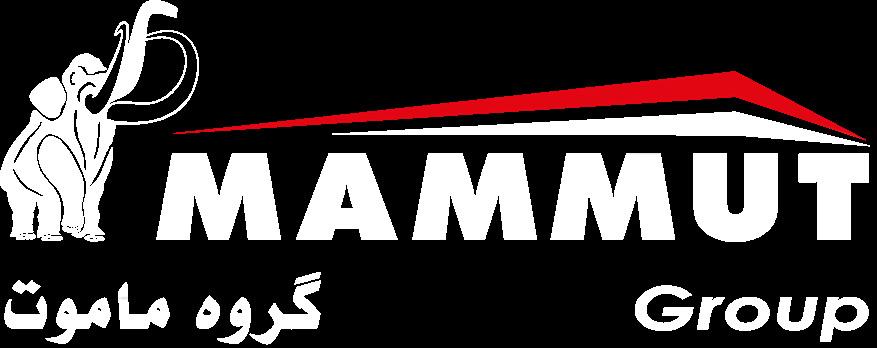
Mammut Industrial Group, founded in 1370 (1991 CE), is a privately held Iranian conglomerate active across automotive, construction, transport, and infrastructure sectors. Known for its innovative product development and recruitment of top talent, it operates globally through subsidiaries specializing in trailers, vehicles, and engineering solutions

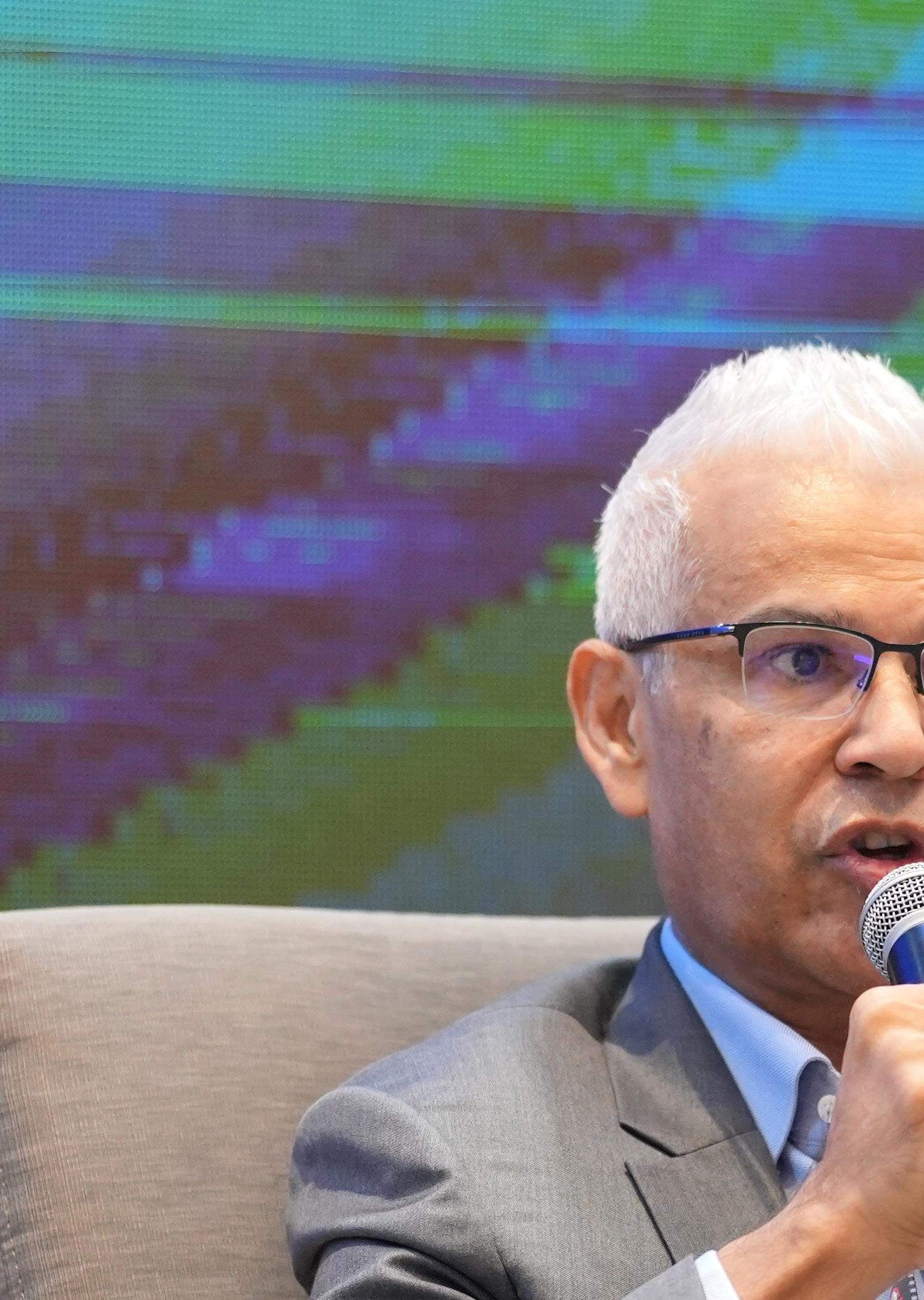
Dirk Guinan on Leading Green Tape’s SME-Focused
Procurement Transformation

In today’s rapidly evolving procurement landscape, small and mid-sized enterprises (SMEs) are often left behind by platforms designed with only large organisations in mind. Dirk Guinan, CEO of AVM Green Tape and the Board of Directors lead by Hiran Cabraal, are on a mission to change that. With over two decades of leadership experience across FinTech, enterprise tech, and regulatory reporting, Dirk brings a sharp strategic vision and deep regional insight to the world of digital procurement.
In this exclusive interview, he shares how Green Tape is redefining procurement for underserved markets, using AI, automation, and supplier inclusivity to drive transformation. From closing the adoption gap to supporting ESG goals and embedding cybersecurity from the ground up, Dirk outlines what it takes to empower SMEs and build a smarter, more equitable procurement future.

Can you share your career journey and what led you to your role as CEO of AVM Green Tape? What experiences have most influenced your approach to leadership in the digital procurement space?
I’ve spent the past 23+ years in leadership roles across Australasia, leading and growing businesses in sectors such as FinTech, e-commerce, aviation, and enterprise technology. Most recently, I served as Regional Head of Finance, Risk & Regulatory Reporting (FRR), APAC at Wolters Kluwer, a global leader in professional information and software solutions. I also led its FRR Professional Services business across 10 countries, gaining deep experience in navigating diverse markets, scaling operations, and driving regional performance.
My journey with AVM Green Tape began as a board member and investor. I had a front-row seat to the platform’s evolution and was genuinely impressed by its quality, scalability, and the impact it could have on digital procurement, particularly for smaller enterprises. That perspective ultimately led me to step into the CEO role.
For me, leadership starts with building talented, highly motivated teams and at Green Tape, we see this as a key priority and an ongoing journey. We are committed to shaping a culture that is purposedriven, customer-centric, and collaborative, where people feel empowered, aligned, and supported.
Equally important is using technology to solve real-world problems. I focus on delivering practical, measurable value by staying close to customer needs and evolving our technology accordingly, creating solutions that are not just functional, but transformative, especially in digital procurement where transparency, efficiency, and trust are vital.
Green Tape aims to revolutionise procurement through digital innovation. What inspired the creation of Green Tape, and what key challenges does it solve for procurement professionals?
Green Tape was created to close a persistent gap in the procurement space, where small and midsized enterprises, despite powering much of the global economy, have long been underserved. Traditional procurement platforms were often too costly, too complex, or geared toward large enterprises, leaving SMEs reliant on manual processes and exposed to inefficiencies and risk.
The idea for Green Tape emerged from working closely with procurement professionals, particularly in emerging markets, and understanding their day-to-day challenges. What we saw was clear: they didn’t just need another tool, they needed a partner. One that could provide a simple, affordable, and scalable platform that met them where they were and helped move them forward.
That’s what Green Tape delivers: a cloud-based, all-in-one e-procurement solution built around the realities of SME procurement. From automated workflows and full audit trails to GroupBuy and tailspend management, the platform improves transparency, reduces fraud, and drives better outcomes. For organisations without in-house expertise, we also offer managed services to support execution and scale.
Green Tape empowers procurement professionals to move faster, operate smarter, and grow with confidence, redefining what’s possible for the businesses that keep economies running.
AI and automation are transforming procurement. How does Green Tape leverage AI-driven solutions to streamline procurement processes, enhance supplier collaboration, and improve decision-making?
At Green Tape, we see AI and automation as critical enablers in the future of procurement and they are central to our product roadmap. Our goal is to shift procurement from being largely manual and reactive to becoming intelligent, predictive, and highly efficient.
We are actively developing AI-powered features to streamline repetitive tasks, reduce human error, and support smarter, data-informed decision-making. Planned functionality includes intelligent vendor matching, where AI helps surface the most relevant and high-performing suppliers for each request and smart tools to simplify tender processes, from auto-generating responses in the Q&A phase to assisting with bid evaluations using pre-defined criteria.
We are also building toward multilingual support, auto-translation, and adaptive interfaces to improve accessibility and usability for diverse teams across regions.
In future phases, our roadmap includes predictive analytics for demand forecasting, AI-driven fraud detection, and automated policy compliance and duplicate order checks. On the analytics front, Green Tape will offer deeper real-time insights into spend, performance, and risk to empower strategic sourcing.
Ultimately, our vision is to enable procurement teams to focus on high-value collaboration and strategy, while AI handles the heavy lifting behind the scenes.

Green Tape is designed to help organisations embed sustainability and ethical sourcing into the core of their procurement operations. By aligning closely with ESG goals, our platform promotes greater transparency, accountability, and inclusivity across the supply chain.
Through our supplier management module, organisations can evaluate and select vendors based on ESG benchmarks, including environmental performance, ethical labour practices, and diversity. These criteria can be built directly into tender processes and bid evaluation matrices, ensuring consistent and values-driven decision-making.
Green Tape also supports traceability and governance with full audit trails and automated compliance checks, helping businesses meet reporting standards and maintain oversight of sourcing decisions. Our OpenSale feature encourages circular economy practices by enabling the resale and reuse of surplus inventory and equipment, reducing waste and unlocking value from existing assets. Additionally, our GroupBuy functionality fosters collaboration within SME ecosystems, allowing businesses to buy from and sell to each other, creating more inclusive and sustainable procurement networks. Altogether, Green Tape empowers organisations to make responsible sourcing decisions that align with both business goals and ESG commitments.
How does Green Tape differentiate itself from other e-procurement platforms?
Green Tape is purpose built for smaller enterprises, a segment often overlooked by legacy platforms. We offer an affordable, scalable and fully integrated ecosystem that meets the unique needs of SMEs and underserved markets.
Unlike many solutions, Green Tape unifies sourcing, contract management, e-auctions and supply chain financing in a single platform. Standout features include GroupBuy, which aggregates demand across buyers to unlock volume based discounts, and zero cost bidding, which promotes inclusivity.
Smart algorithms and real time analytics help buyers make faster decisions and improve supplier visibility. Looking ahead, procurement will be driven by automation, intelligent sourcing and collaborative ecosystems and Green Tape is positioned to lead that transformation for SMEs.

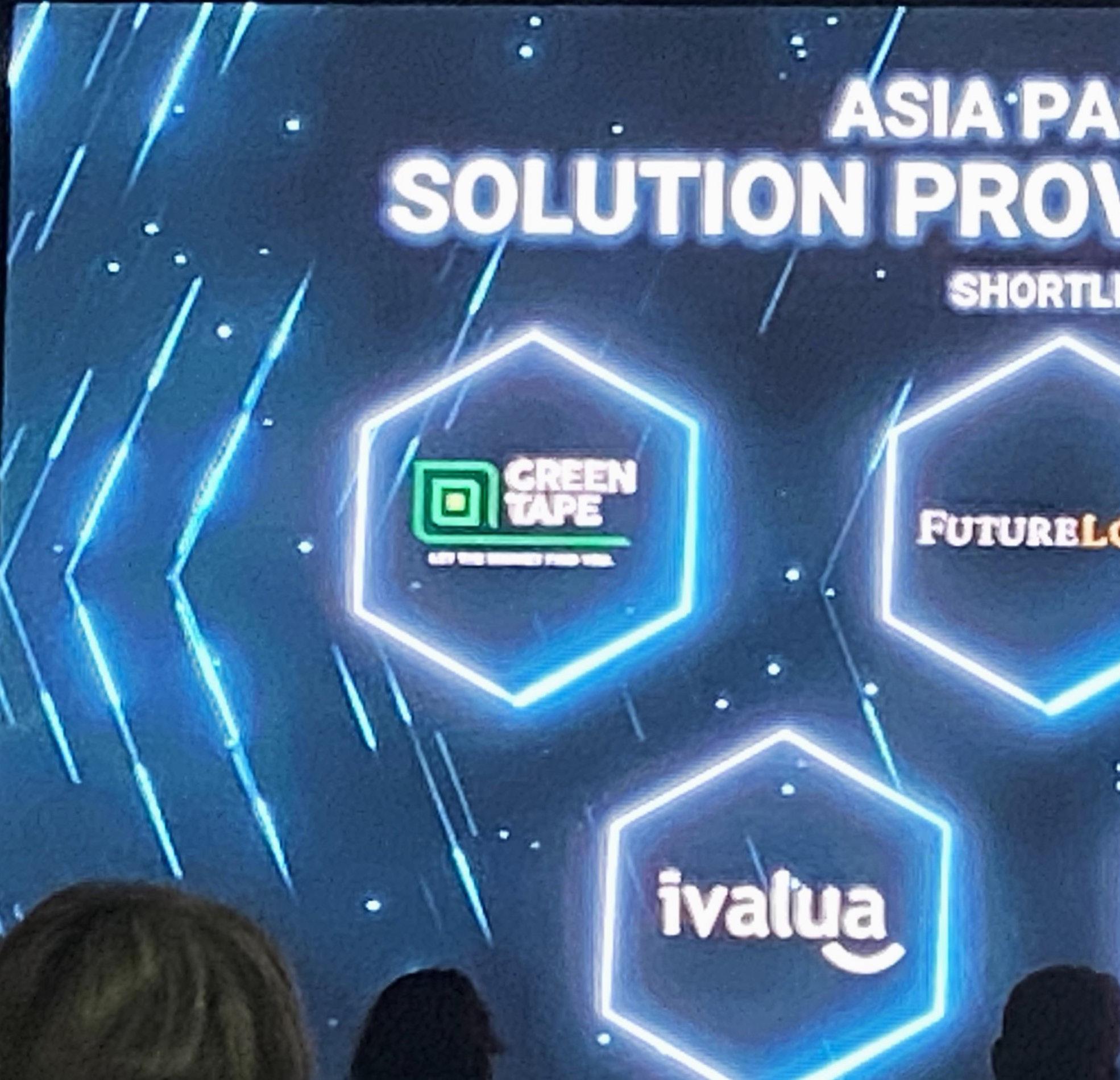
How does Green Tape help connect buyers with small and diverse suppliers?
Green Tape champions supplier diversity by removing barriers and making procurement accessible for small, minority owned and underrepresented businesses. Our no cost bidding model allows any verified supplier to participate and compete fairly.
Simple onboarding and wide network visibility help small suppliers grow and win contracts. Smart matching and features like GroupBuy and OpenSale improve competitiveness and unlock new revenue streams.
With built-in transparency and supplier ratings, businesses can build digital reputations and connect with new buyers. Green Tape makes it practical and scalable to meet supplier diversity goals.

How does Green Tape empower leaders with real time insights and strategic intelligence?
Green Tape captures procurement data across sourcing, contracting and payments, and turns it into insights through real time dashboards and analytics.
Users get visibility into spend, cycle times, performance and risk. AI powered enhancements will forecast demand, highlight risks and recommend sourcing strategies enabling leaders to move from reactive to proactive.
Category analysis and tail spend insights help manage costs more strategically. With strong data, leaders can improve governance, agility and ROI.
Green Tape is hosted on AWS and uses advanced security measures end to end encryption, role based access and multi factor authentication. Each client operates in a dedicated environment for full data isolation.
Audit trails track all activity, and supplier risk is managed through documentation and performance data. The platform is advancing toward ISO and GDPR compliance, and future AI features will detect anomalies and flag risks.
Security and compliance are built into every layer to ensure safe, trusted digital procurement.
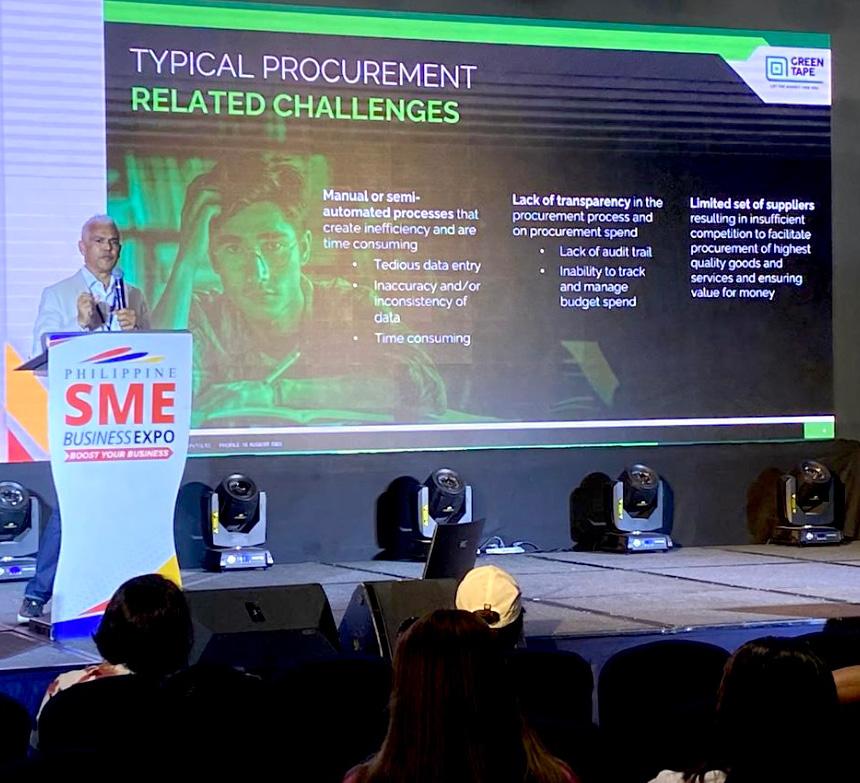
What are the biggest barriers, and how does Green Tape help companies overcome them?
Common barriers include resistance to change, concerns about cost, complexity or disruption, and fear of mistakes or job loss.
Green Tape addresses this through intuitive design, value-for-money pricing and strong support. Our cloud based platform is easy to deploy and go live within 8 to 12 weeks. We offer managed onboarding, training and optional procurement services.
By partnering locally and positioning transparency as a benefit, we build trust and ease the transition to digital procurement.
Each client operates in a dedicated environment for full data isolation
What’s next for the platform?
Our roadmap focuses on becoming the most scalable and intelligent e-procurement platform for SMEs. We’re rolling out features like smart tender matching, multilingual support, predictive analytics, contract clause risk detection and invoice reconciliation.
New modules include catalogue management and ERP integration to streamline workflows. Strategically, we’re expanding across APAC and the Middle East through partner led growth and brand activation.
Our mission is to democratise high performance procurement for businesses of all sizes.
AVM Green Tape is a Singapore-based startup offering a cloud-based supply chain platform. Its scalable solutions – Enterprise, Docs, and Credit streamline procurement, contracts, and financing to reduce complexity, support governance, and ensure ESG compliance. Green Tape empowers businesses, especially SMEs, to stay audit-ready and operate efficiently year-round.

Guinan CEO
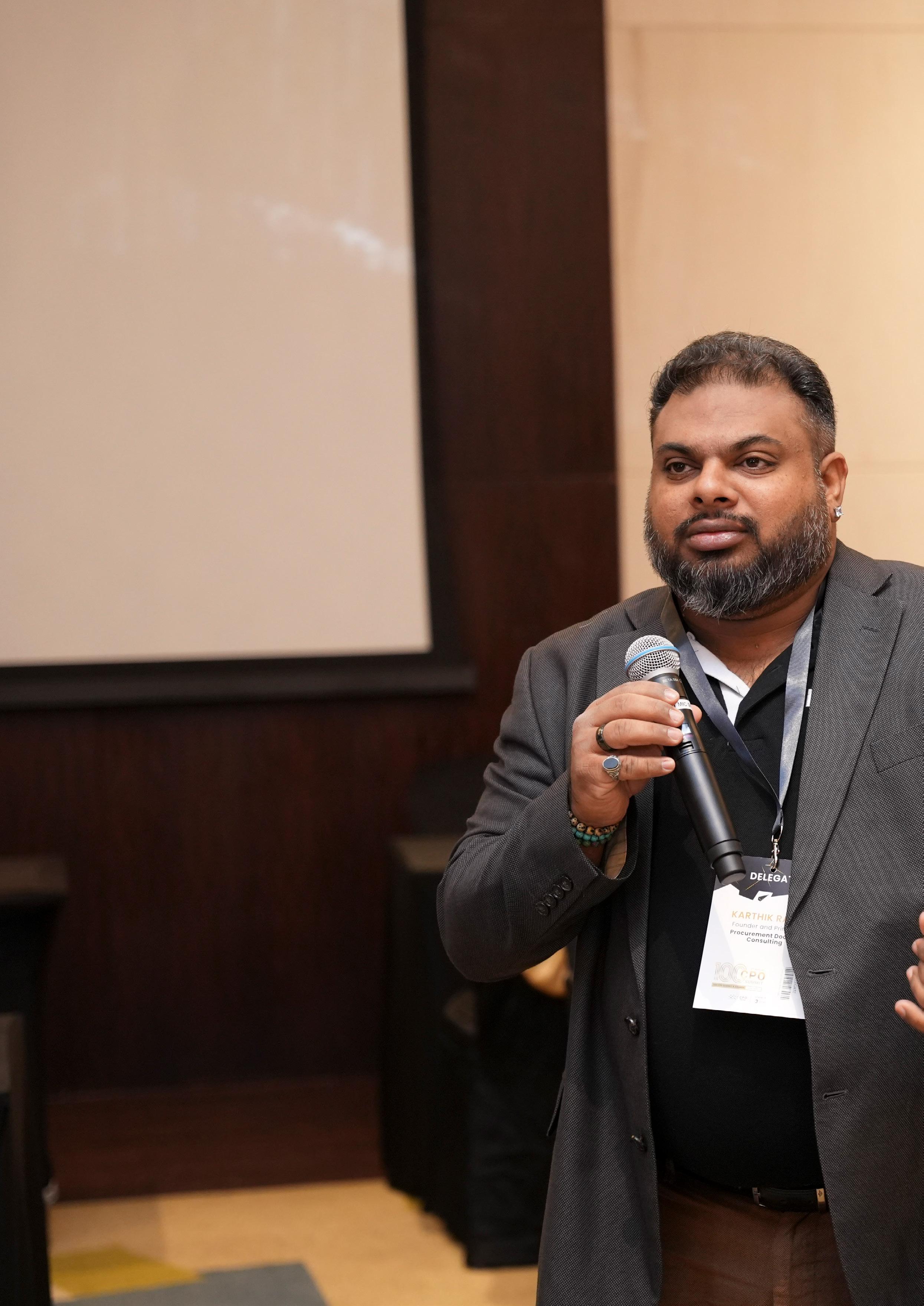
Karthik Rama
on Transformation, Technology, and Trust
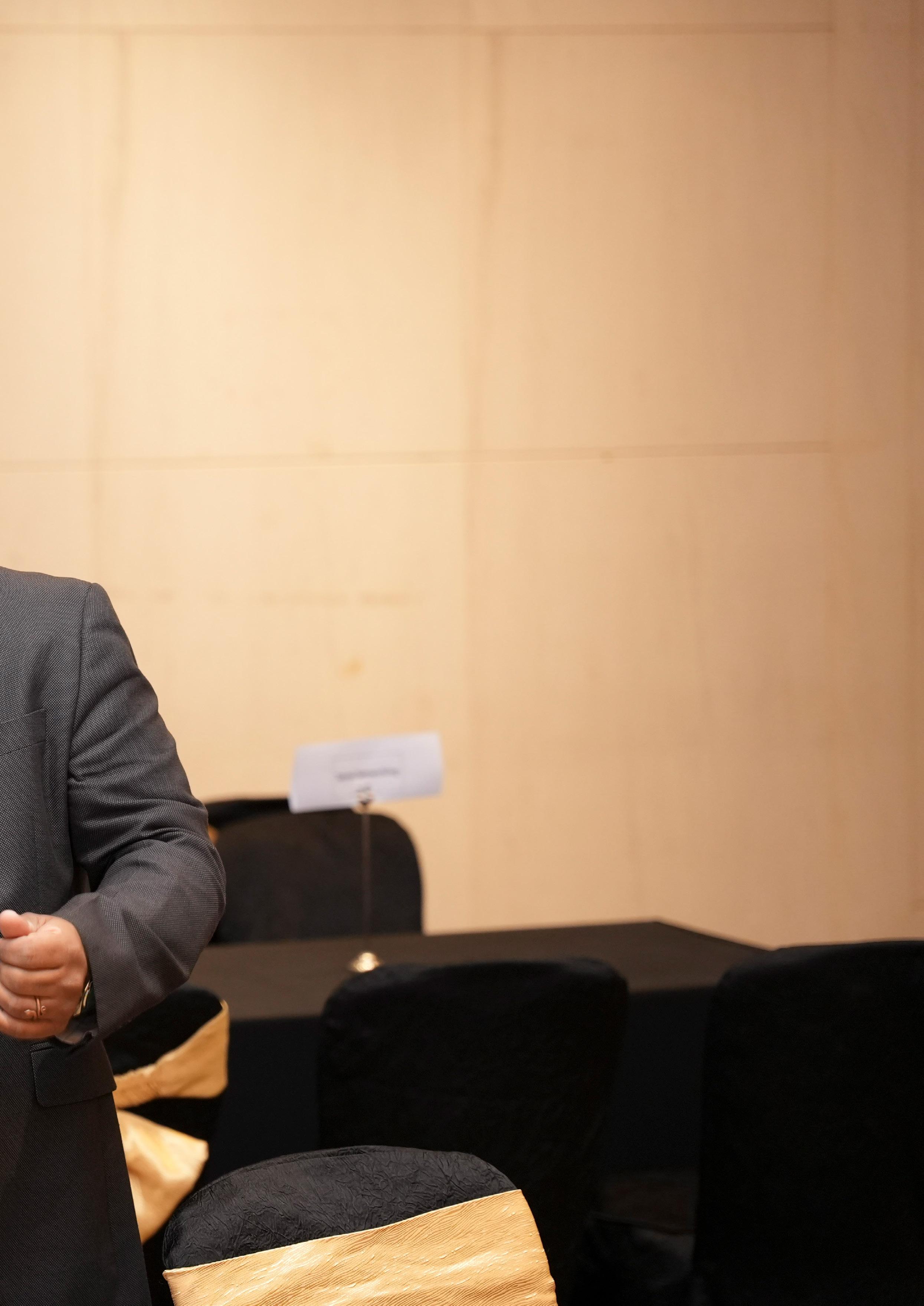
With nearly two decades of global procurement experience across industries ranging from high tech and pharmaceuticals to maritime and real estate, Karthik Rama has earned the nickname “The Procurement Doctor” and for good reason. As the CEO of Procurement Doctors, Karthik leads a team of specialists delivering strategic, people-first procurement transformations across more than 15 countries. In this insightful conversation, he shares his journey, the inspiration behind the ‘doctor’ moniker, and his vision for helping organisations build agile, resilient, and future-ready procurement functions. From contract management to digital evolution and bridging finance-procurement gaps, Karthik offers a masterclass in diagnosing the root causes of procurement pain and prescribing practical solutions that stick.
Can you share your career journey and what led you to establish Procurement Doctors? What experiences have most influenced your approach to procurement transformation?
My procurement journey spans nearly two decades and covers a wide range of industries, including high tech and semiconductors, consumer goods, chemicals and pharmaceuticals, automotive, logistics and transportation, discrete manufacturing, real estate, oil and gas, and maritime and ship repairs. What drew me to procurement early on was its dynamic nature, no two days are ever the same.
I began by handling foundational tasks like converting requisitions into purchase orders and invoices, managing contracts, negotiating multi-million-dollar deals, and establishing offshore centers of excellence along with policies and procedures. Over time, I transitioned from working inside Fortune 300 companies, some with over 200 years of legacy, to consulting, motivated by a desire to deliver more strategic and impactful value.
That drive led to the founding of Procurement Doctors in 2021. Now four years strong, we are a team of nearly 35 professionals and have successfully delivered procurement transformations across more than 15 countries. Our work is rooted in practical insights, enabling us to tailor solutions that are both effective and grounded in real operational challenges.

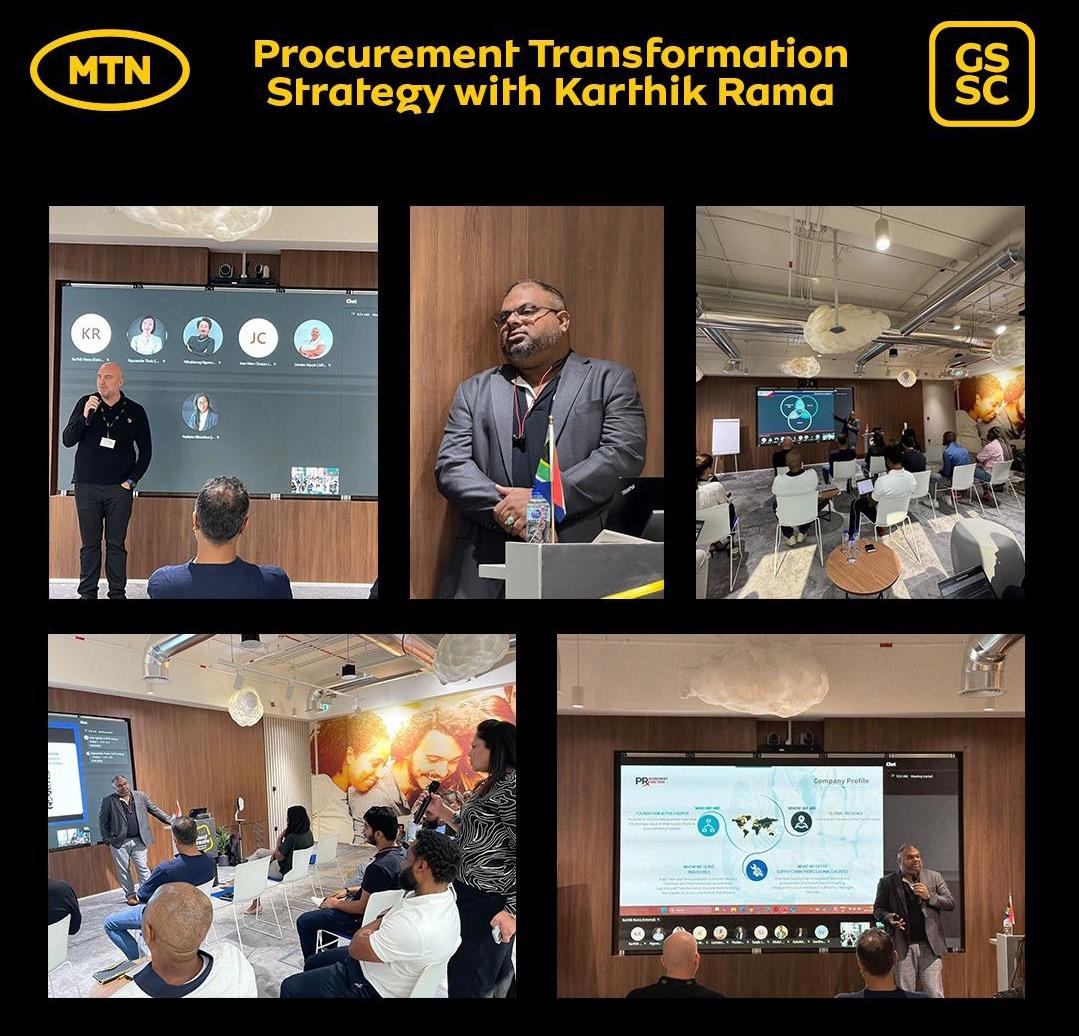
You are known as the ‘Procurement Doctor.’ What inspired this moniker, and how does it reflect your approach to diagnosing and treating procurement challenges?
People often ask me about the story behind “Procurement Doctor,” and honestly, it’s one of my favourite stories to tell. I was working with a client and had prepared a report that mapped out their procurement challenges using analogies like vital signs, pulse checks, and diagnosing underlying conditions. During the presentation, the client said, “Wow, you’re like our Procurement Doctor!”
It was a lightbulb moment. The analogy fit perfectly, procurement problems often mirror medical conditions. Symptoms can mask deeper issues, and effective solutions require a proper diagnosis and tailored treatment plan.
The metaphor helps keep things clear and engaging, allowing clients to understand their procurement health in simple, relatable terms. More importantly, it reflects my core philosophy: don’t just treat the symptoms, identify and resolve the root cause.
Is it true you have a strong team of Procurement Doctors alongside you?
I often joke that Procurement Doctors isn’t a one-man clinic and it’s absolutely true. We’re a team of specialists, each bringing unique skills and experiences to the table. Much like a great medical team, every one of our Procurement Doctors contributes a different area of expertise, whether it’s category management, digital procurement, contract management, data management or change leadership.
What makes our team truly stand out is that we’re all procurement professionals first. Many of our experts come from traditional procurement backgrounds and have expanded into complementary domains like data analytics, technology, or change management. This means we speak the language of procurement—and more importantly, we understand the real-world challenges our clients face.
With nearly 35 talented team members based across the USA, the Middle East, and India, we combine global reach with local insight. This diversity allows us to tailor solutions that are not only technically sound but also culturally and regionally relevant.
Our collaborative approach ensures that we see the full picture, nothing important gets missed. Clients value the fact that they’re not just receiving one person’s perspective; they’re tapping into the collective expertise and insight of a highly experienced, globally connected team. That’s the strength of Procurement Doctors, and it’s what allows us to deliver real, lasting value to organisations around the world.
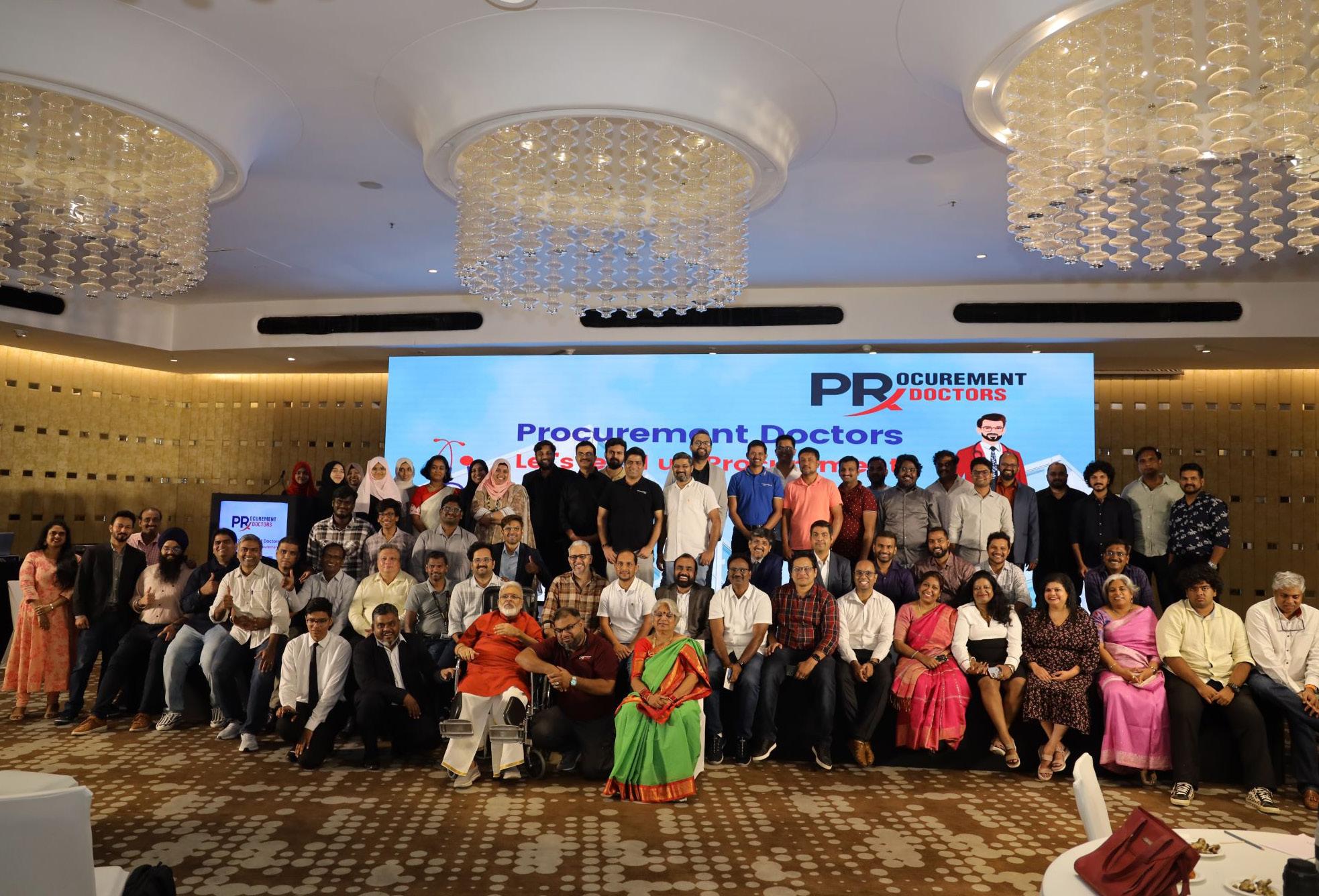
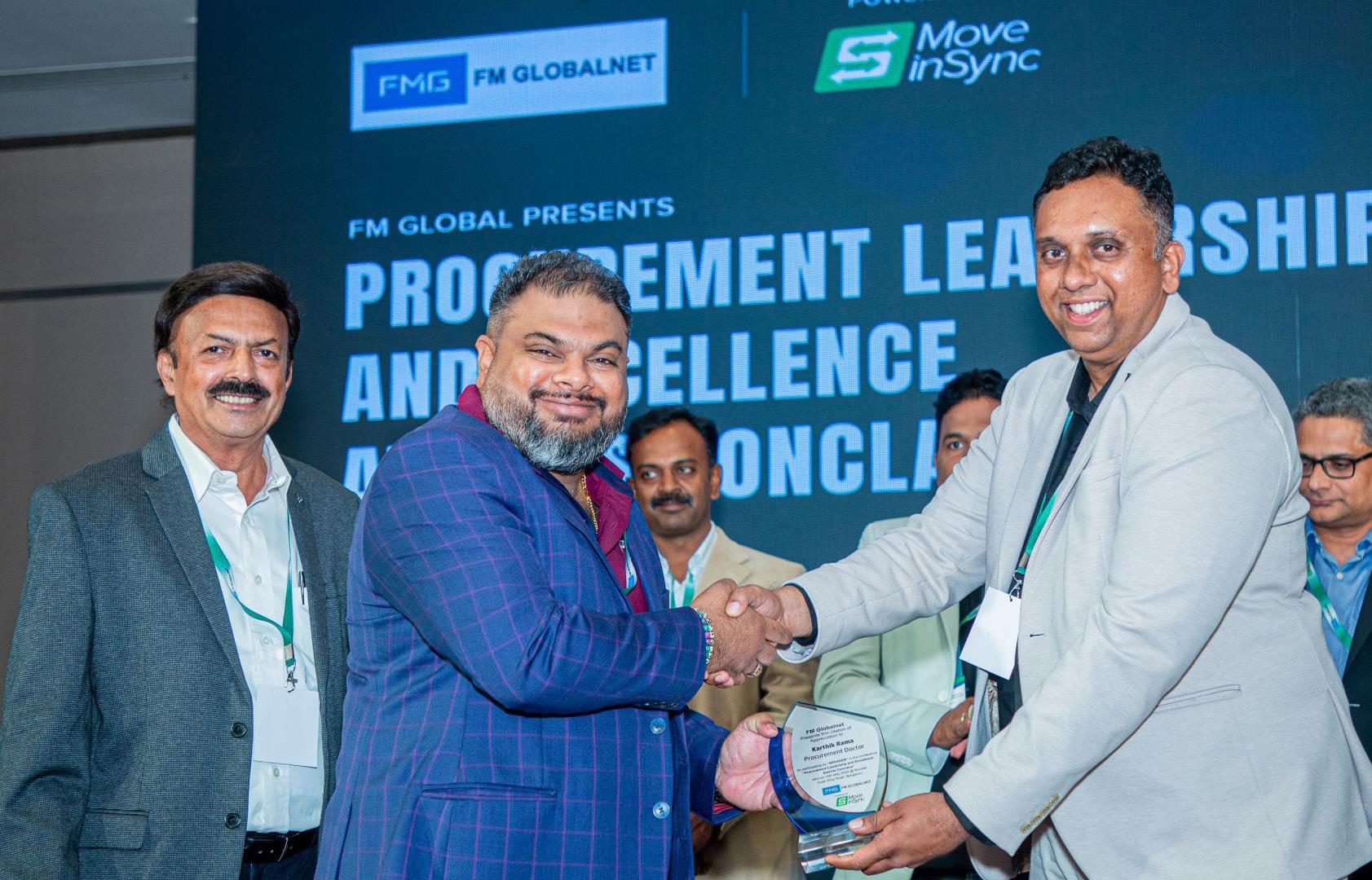
With over 2 decades of experience, what common challenges do organisations face during procurement transformations, and how do you assist them in overcoming these obstacles?
Having seen countless procurement transformations over the years, I can say with confidence that the challenges tend to follow familiar patterns: resistance to change, unrealistic timelines, misaligned expectations, and a lack of stakeholder buy-in. It’s a bit like trying to run a marathon without the proper training, you’ll struggle and likely quit halfway through.
At Procurement Doctors, our first step is always to assess whether the organisation is truly transformation-ready. We set clear expectations from the outset, work to secure stakeholder alignment, and apply targeted change management techniques to support adoption. By diagnosing readiness gaps early, we’re able to build personalised transformation roadmaps that address specific challenges and internal dynamics.
One key belief that underpins our work is that transformation isn’t just about technology or process, it’s about people. That’s why we always put people at the centre of the change. This people-first approach not only makes transformations smoother but also ensures that the results are sustainable. What sets Procurement Doctors apart is the depth of our expertise across four critical pillars: procurement processes, data, technology, and people. All of these elements must work in harmony for a transformation to be truly successful and we ensure that they do.
Having managed over 40,000 contracts, what key lessons have you learned about effective contract administration, and how do you apply these insights in your consulting practice?
Having managed over 40,000 contracts, I’ve learned one vital truth: clarity beats complexity every single time. Contracts shouldn’t require a legal team at every review. I like to compare contracts to the circulatory system of a business, if the arteries are clogged or unclear, the entire system suffers. In procurement, that translates to bottlenecks, risks, and inefficiencies caused by vague or poorly managed contracts.
At Procurement Doctors, we guide our clients to simplify contract language, clearly define roles and responsibilities, and implement automated tools for compliance tracking. It’s remarkable how much efficiency and governance improve when contracts are no longer viewed as burdens, but as clear, strategic tools aligned with business goals.
We’ve also developed a tried-and-tested methodology for conducting bulk contract reviews, particularly useful when organisations are sitting on a legacy contract database that hasn’t been properly maintained. Our approach helps extract real value from contracts that might otherwise go underutilised, ensuring alignment with commercial objectives and reducing risk. In short, effective contract management isn’t about complexity, it’s about making contracts work for the business, not the other way around.

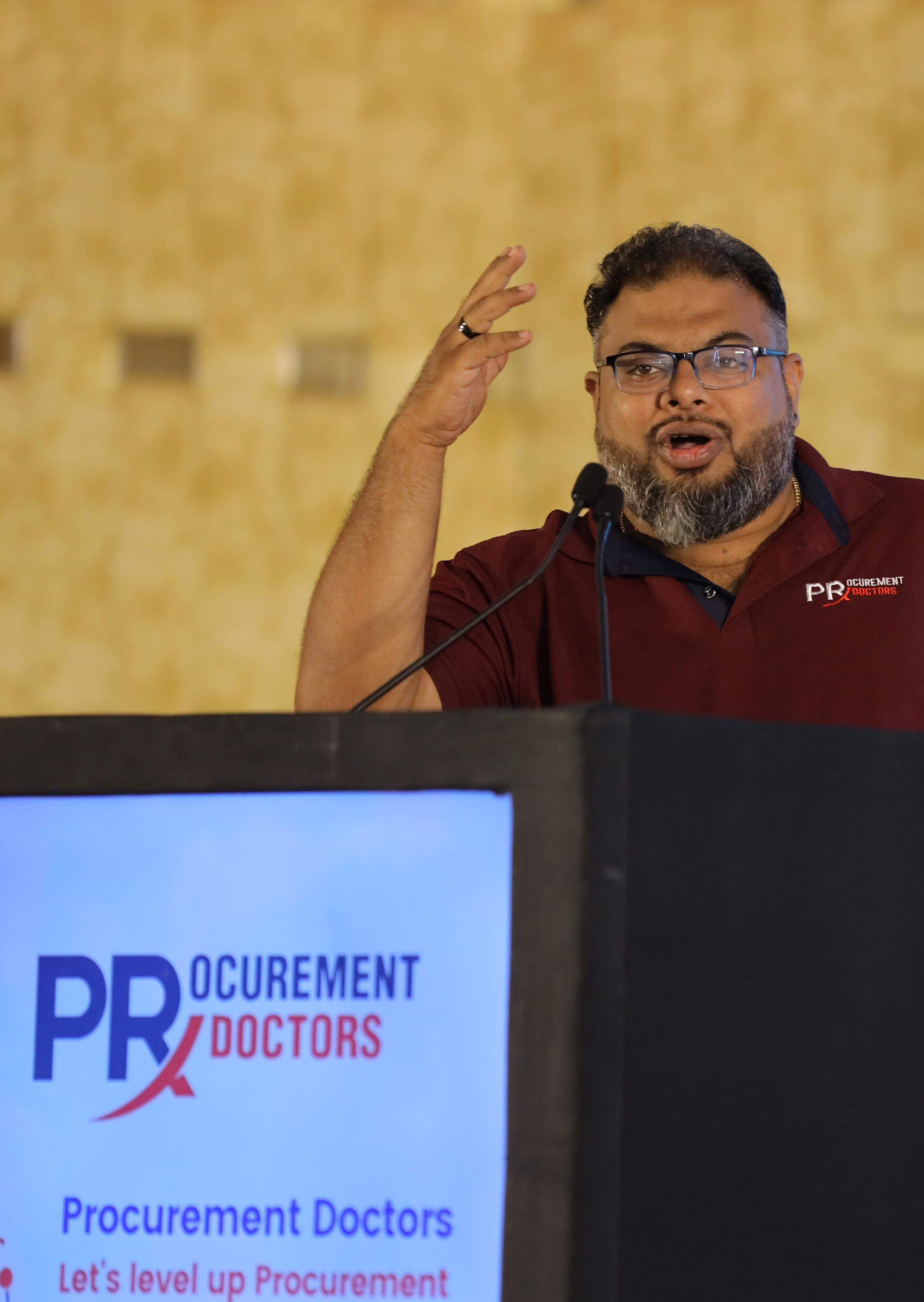


How is digital transformation reshaping procurement processes, and what strategies do you recommend for organisations to adapt successfully?
Digital transformation is undeniably reshaping procurement but technology alone isn’t a magic fix. Just like sophisticated medical equipment requires trained professionals to use it effectively, digital tools in procurement only deliver value when paired with the right skills, processes, and mindset.
At Procurement Doctors, we advocate for balanced transformation, leveraging technology while equally investing in people and process maturity. We often encourage clients to begin with small, targeted digital interventions that deliver quick, measurable wins. This builds momentum and confidence across the organisation.
Setting realistic expectations, preparing teams thoroughly, and ensuring strong data readiness are all essential to making digital transformation both practical and sustainable. Technology must serve the business, not the other way around.
Ultimately, the future belongs to organisations that know how to blend tech-driven insights with human judgment. It’s that combination that creates lasting, strategic advantage in procurement.
What strategies do you employ to align procurement functions with finance departments, ensuring cohesive operations and mutual goals?
Procurement and finance are like two vital organs in a body, they must function in harmony to maintain the overall health of the organisation. Too often, though, they operate in silos, leading to inefficiencies, misunderstandings, and missed opportunities.
At Procurement Doctors, we bridge that gap by facilitating transparent communication, aligning objectives through joint KPIs, and ensuring clarity around shared goals. We establish structured processes such as regular joint meetings, collaborative budget reviews, and cross-functional planning sessions to foster alignment from the ground up.
When procurement and finance begin to view each other as partners rather than separate units, it fosters trust, accelerates decision-making, and boosts overall performance. It’s not rocket science, but the impact is profound. Cohesion between these functions can truly elevate the effectiveness and agility of the entire organisation.
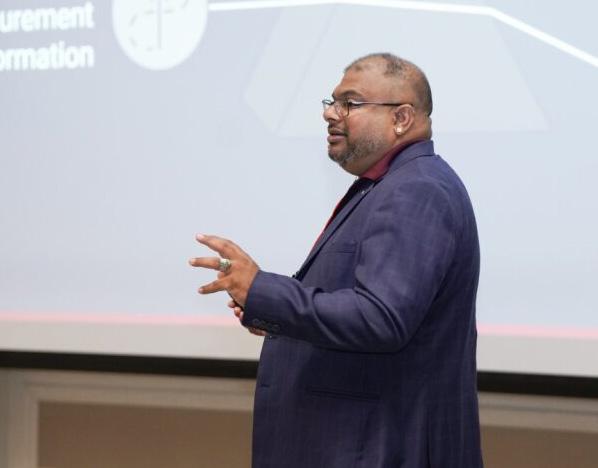

What emerging trends do you see in global procurement, and how should organisations prepare to adapt to these changes?
Globally, procurement is evolving at a rapid pace. Key trends like sustainability, AI-driven analytics, and proactive risk management are no longer optional, they’re essential. It’s a lot like preventative medicine: the goal is to anticipate and manage issues before they become serious.
At Procurement Doctors, we advise clients to embrace these shifts proactively. Embedding ESG goals into procurement strategy, leveraging AI for predictive insights, and strengthening supply chain resilience through continuous risk assessment are now core practices for future-ready organisations.
Success in the coming years will depend on staying agile, informed, and responsive to change. Those who anticipate and adapt early won’t just survive, they’ll thrive in an increasingly complex and fastmoving global environment.
What advice would you give to individuals aspiring to build a career in procurement, and how can they develop the necessary skills to succeed?
If you’re entering procurement today, my top advice is simple: be curious and stay flexible. This field is evolving fast, so a commitment to continuous learning is essential. Yes, analytical thinking and negotiation are key, but so are emotional intelligence, relationship-building, and adaptability.
Procurement isn’t just about buying, it’s about solving problems and connecting people. Embrace a wide range of experiences, ask questions, and seek out mentors who challenge and inspire you. Don’t shy away from digital tools either, procurement’s future is firmly rooted in data and technology.
The most successful procurement professionals I know are those who blend strong technical capabilities with a genuine ability to build trust and influence outcomes. That balance is your secret sauce for a rewarding, long-term career in procurement.
Future Vision for Procurement Doctors: What are your future aspirations for Procurement Doctors, and how do you plan to continue delivering value to your clients in the evolving procurement landscape?
Our vision for Procurement Doctors is to remain a trusted, strategic partner for organisations navigating the growing complexity of procurement. Much like leading healthcare providers evolve to offer cutting-edge treatments, we’re committed to continuously enhancing our services. This includes deepening our digital transformation expertise, expanding our capabilities in sustainable procurement, and staying ahead of emerging global trends.
But growth isn’t just about more services, it’s about staying true to who we are. We’ll continue to prioritise clarity, practicality, and strong client relationships. Our mission remains the same: diagnose procurement challenges precisely, prescribe the right solutions, and deliver measurable results. By staying rooted in our diagnostic philosophy and continuously adapting, we’re confident in our ability to help clients build healthy, resilient, and future-ready procurement functions.

Procurement Doctors is a global consultancy firm specialising in procurement transformation, digital transformation, and procurement technology implementations. With dedicated teams based in the UAE and India, they cater to a diverse client base across North America and the Middle East. Just like skilled doctors diagnosing ailments and prescribing precise treatments, Procurement Doctors meticulously diagnose procurement challenges, addressing each issue holistically through our integrated framework of People, Process, Data, and Technology.
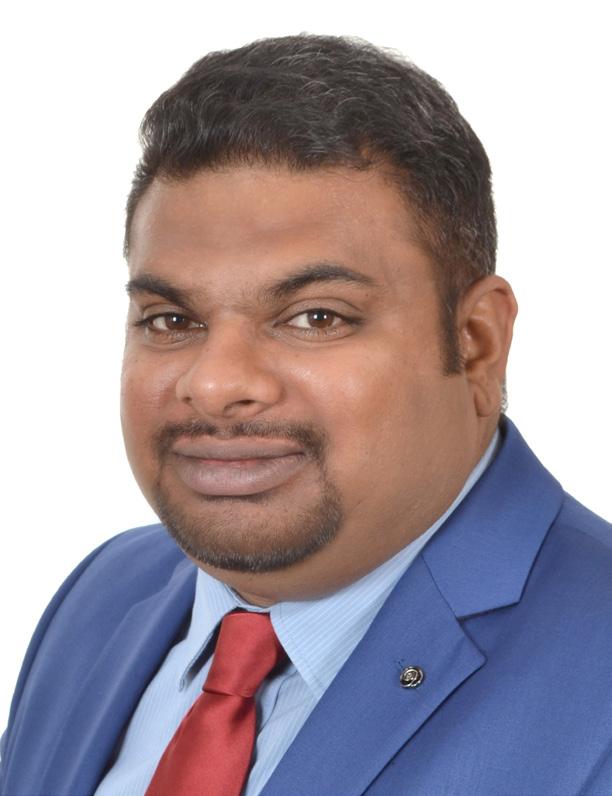
In the fast paced world of digital streaming, procurement is no longer just a back office function; it’s a strategic driver of agility, innovation and sustainable growth. As Procurement Director MENA at Anghami OSN+, Mario Khalil plays a pivotal role in shaping the company’s procurement strategy across a highly dynamic and diverse region.
In this exclusive interview, Mario shares how his team delivers impact across technology, marketing and content functions, while navigating the unique challenges of media and tech procurement. From embracing digital tools and ESG integration to fostering supplier partnerships and managing risk, he offers a forward looking perspective on how procurement can enable competitive advantage in the streaming industry. His insights are a powerful reflection of what it means to lead with both strategic precision and a passion for progress.

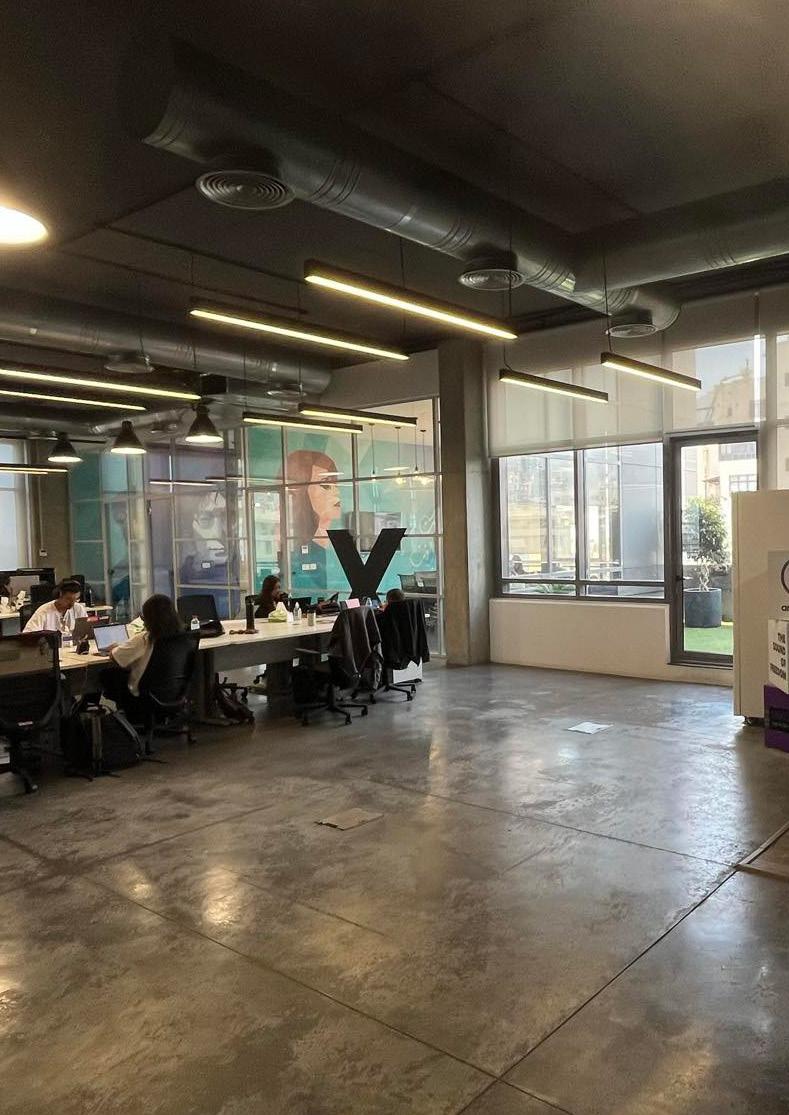

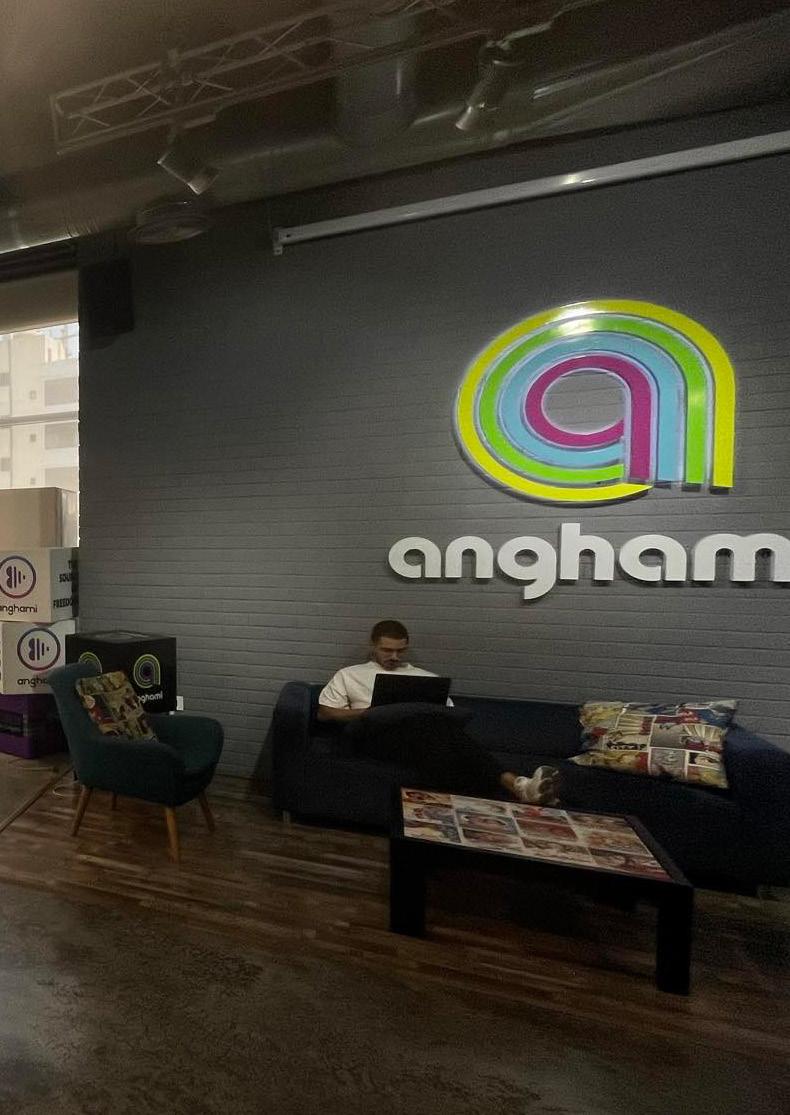


Can you share your career journey and what led you to your current role as Procurement Director MENA at Anghami OSN+? What have been the pivotal moments that shaped your approach to procurement and leadership in the media and tech industry?
My procurement journey has been built on curiosity, adaptability and a passion for problem solving. Over the years, I’ve worked across a variety of industries, which gave me a broad perspective on how procurement can deliver both cost savings and strategic value. Landing the role of Procurement Director MENA at Anghami OSN+ felt like a natural progression – it brought together my passion for innovation with the fast paced challenges of the streaming and digital media space.
One pivotal moment in my career was leading a digital procurement transformation initiative. It not only elevated the function’s role within the business but also changed the internal perception of procurement from a support role to a strategic partner. That experience significantly shaped my approach to leadership and confirmed my belief in the power of procurement to drive real business impact.

Procurement plays a significant role in supporting digital platforms. How does your procurement team at Anghami OSN+ contribute to ensuring the seamless operation and growth of the streaming service in the MENA region?
Procurement is a strategic enabler at Anghami OSN+, operating quietly yet critically behind the scenes to support the seamless operation and growth of our streaming service across the MENA region. Our role extends far beyond cost control we’re actively engaged in supporting the business by negotiating value driven agreements across both technology and creative functions.
Our collaboration with the Marketing team is equally important. We ensure their campaigns are executed with agility by procuring digital and production services quickly and effectively, contributing to timely and impactful delivery.
By aligning procurement with overall business objectives, we help drive scalability, operational resilience and user satisfaction. In doing so, we contribute directly to the platform’s ability to innovate and grow sustainably in a competitive and fast evolving digital landscape.
Sustainability is becoming a key focus for businesses globally. How is Anghami OSN+ integrating sustainable practices within its procurement processes, especially in sourcing technology and services for its platform?
Sustainability isn’t a checkbox it’s a mindset. At Anghami OSN+, we’re fully aware of the environmental impact of our technology and vendor choices. We’re committed to integrating sustainability into our procurement practices by selecting partners who share and reflect our environmental values.
It’s an ongoing journey, but it’s one we’re fully dedicated to. Our aim is to support the business while making smarter, more responsible decisions that benefit not only our operations but also the planet and future generations.



In a fast-moving industry like streaming, strong supplier relationships are critical. How do you ensure transparent and mutually beneficial relationships with your suppliers to support the continuous growth and innovation of Anghami OSN+?
We don’t just manage vendors we build partnerships. In an industry where timelines are tight and innovation moves fast, transparency and mutual trust are absolutely essential. We prioritise open communication, align KPIs from the outset and regularly review performance together to ensure we’re on the same page.
Whether we’re working with a global technology provider or a regional partner, we treat our suppliers as true extensions of our team. This collaborative approach leads to better responsiveness, greater flexibility during challenges and ultimately, shared success that supports the continuous growth and innovation of Anghami OSN+.


As technology evolves, so do procurement practices. How is Anghami OSN+ using digital tools and innovations to streamline its procurement operations, improve efficiency, and stay ahead of the competition in the digital streaming space?
We’ve embraced digital tools not just for the sake of innovation, but to genuinely enhance how procurement delivers value. At Anghami OSN+, we leverage digital solutions to streamline our processes, enable data driven decision making and improve visibility across all procurement activities.
These tools help reduce friction, free up time for more strategic work and allow us to operate proactively rather than reactively. The result is a more agile, insight led and business aligned procurement function one that supports the speed and complexity of the digital streaming space while helping us stay competitive.

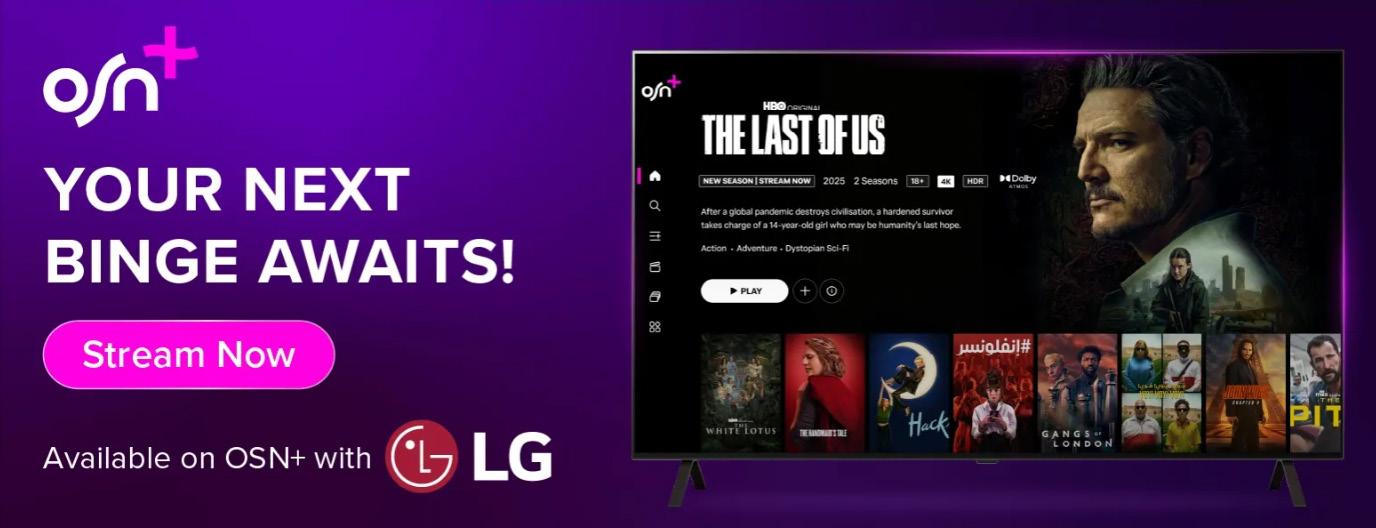
Given the diverse cultural and business landscape across the MENA region, how does your procurement strategy account for regional variations in demand and regulatory requirements while ensuring consistency across the Anghami OSN+ platform?
Procurement across the MENA region is anything but one size fits all. Every market has its own regulations, cultural expectations and level of maturity. Our strategy is built on flexibility – we ensure compliance with local requirements while tailoring supplier engagement to fit each market’s unique dynamics.
At the same time, we maintain centralised oversight to ensure consistency across the platform and to leverage group level economies of scale. It’s about striking the right balance: being locally responsive while maintaining regional cohesion. That balance allows us to operate efficiently and effectively across a diverse and complex landscape.

At Anghami OSN+, we leverage digital solutions to streamline our processes, enable data driven decision making and improve visibility across all procurement activities.
In the competitive streaming industry, managing costs is crucial. What strategies do you use to ensure cost efficiency in procurement while maintaining high-quality products and services for Anghami OSN+ users in the MENA region?
We approach cost efficiency as an ongoing mission, not a one time target. Through strategic demand planning, consolidated sourcing and disciplined negotiations, we focus on securing the best possible value for the business.
However, cost saving doesn’t mean cutting corners. We consistently evaluate ROI, focus on the total cost of ownership and cultivate long term vendor relationships that deliver continuous savings and added value. This disciplined, value driven mindset helps us remain competitive in a fast moving industry where costs can easily escalate without proper control.
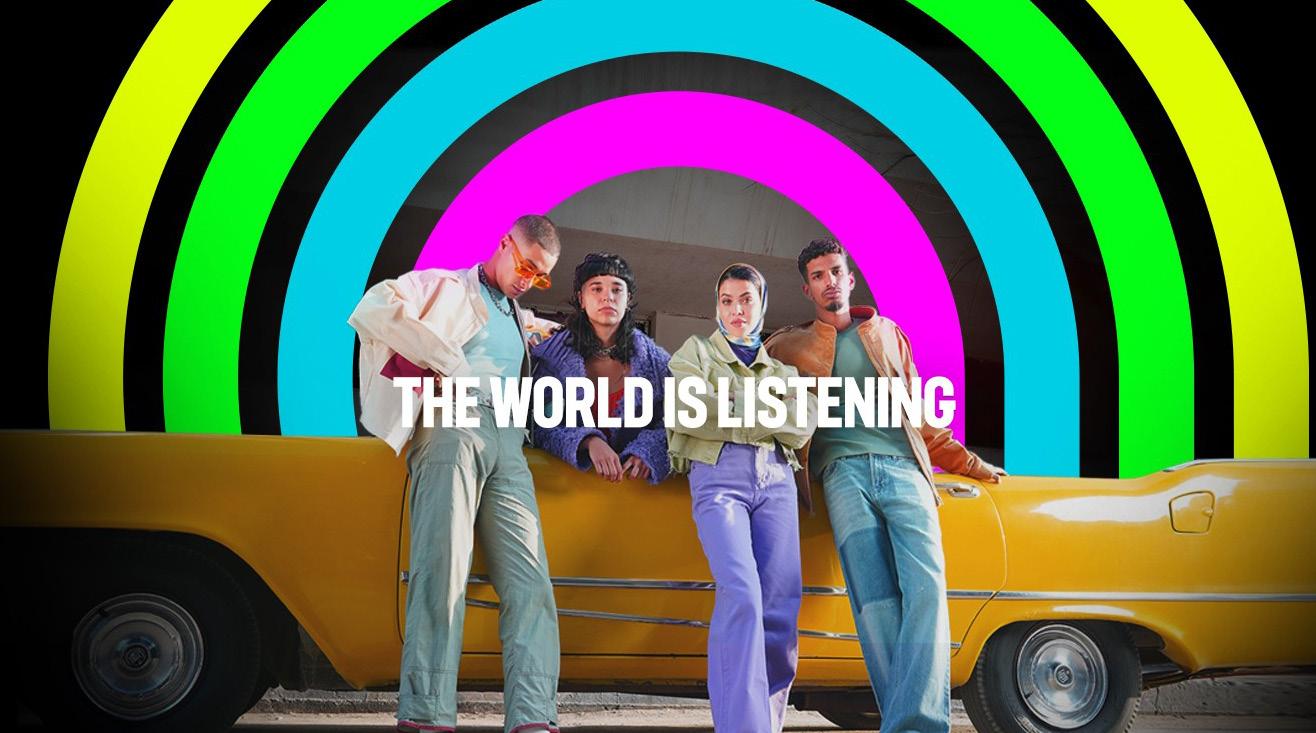


With global supply chain disruptions and technological changes, how does Anghami OSN+ manage risks in its procurement processes to ensure uninterrupted service delivery and platform stability?
In our space, disruptions can come from anywhere whether it’s technical issues, supply constraints or regulatory changes. That’s why risk management is embedded into every step of our procurement approach.
We conduct thorough assessments of our partners, plan for contingencies and build flexibility into our agreements to adapt when needed. By staying closely aligned with internal teams and continuously monitoring market dynamics, we’re able to respond quickly and effectively.
Our top priority is to ensure uninterrupted platform performance, regardless of the external challenges we may face.

What are some of the unique challenges you face in procurement for a digital streaming platform, and how does Anghami OSN+ address these to stay ahead in an ever-evolving market?
One of the biggest challenges is the sheer pace of change. Technologies evolve rapidly and the business environment is highly dynamic demanding constant adaptation and innovation.
We address this by staying curious, collaborative and closely connected to both our internal teams and the external market. Agility is key. The ability to pivot quickly while remaining compliant and cost conscious is what allows us to stay ahead in a competitive and fast moving industry.
What trends do you see shaping the future of procurement in the digital media and streaming industries, and how is Anghami OSN+ preparing to adapt to these changes in the years ahead?
We’re entering an era where procurement needs to be smarter, faster and more strategic than ever before. Emerging technologies will continue to reshape the procurement landscape, and sustainability will remain a major focus area across the industry.
At Anghami OSN+, we’re already laying the groundwork for this future. We’re testing new technologies, strengthening our data governance and building innovation focused partnerships. For us, the future isn’t just about automation it’s about being truly future ready: adaptable, forward looking and aligned with evolving business and consumer expectations in real time.

Anghami is the first legal music streaming platform in the Middle East and North Africa, offering over 57 million Arabic and international tracks and 200,000 podcasts to more than 73 million users worldwide. Launched in Beirut in 2012 and now headquartered in Abu Dhabi, Anghami championed licensed streaming and supports artists with fair royalties.



Erik Drown on Strategic Sourcing, Resilience, and the Future of Supply Chains
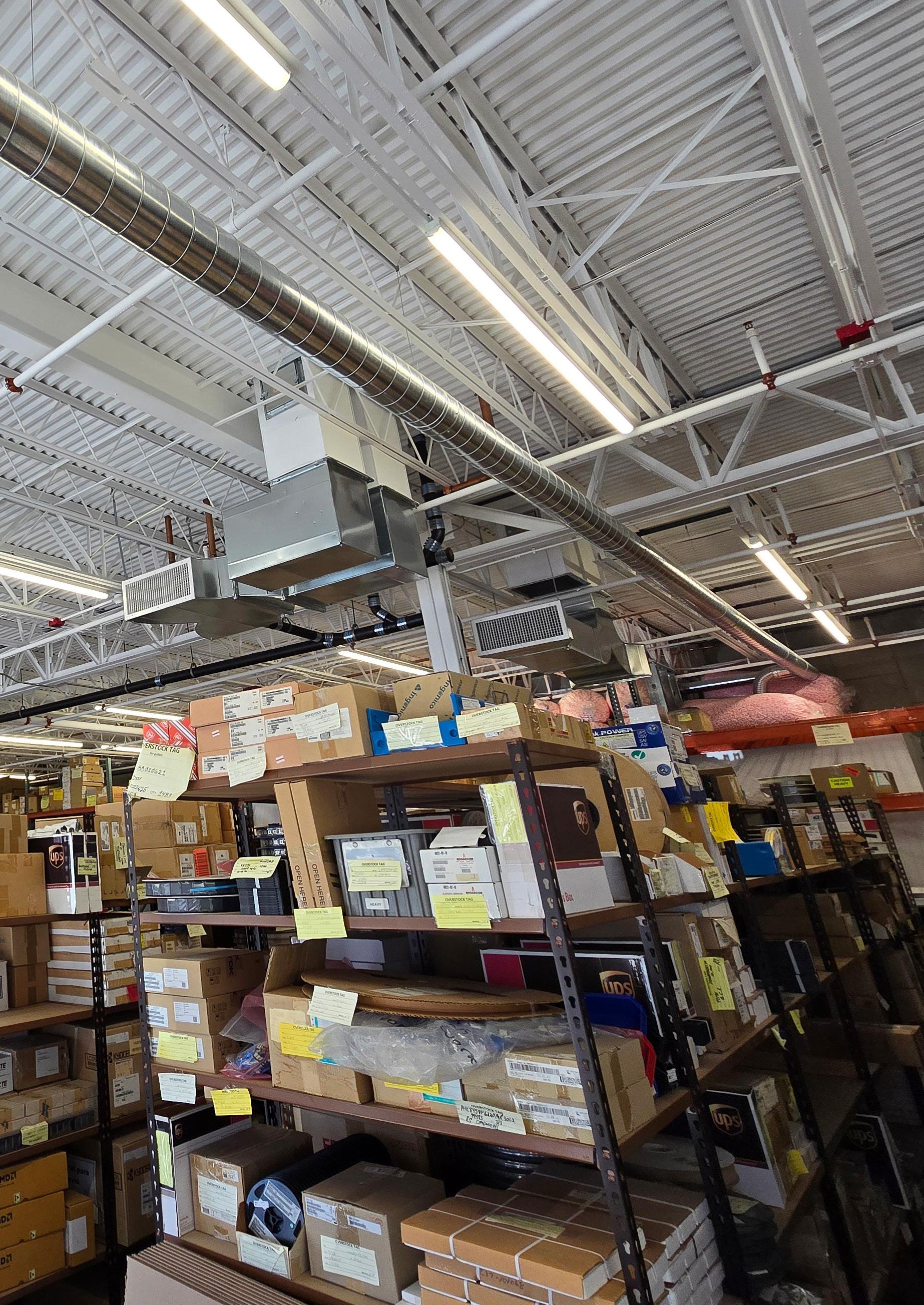
With a career journey that began on the baseball field and pivoted into global sourcing, Erik Drown brings a rare blend of focus, adaptability, and strategic thinking to his role as Lead Global Sourcing Director at Select Technology Inc. Over the years, he has played a critical role in shaping the company’s sourcing strategy, building resilient supply networks, strengthening supplier relationships, and navigating industry challenges with agility and foresight.
In this feature, Erik shares his perspectives on obsolescence management, risk mitigation, supplier collaboration, and the role of technology in modern sourcing. He also outlines his forward-looking vision for Select Technology’s sourcing function, including the opportunities emerging from innovation and AI. For Erik, success lies not in doing everything alone but in building the right partnerships, embracing change, and staying relentlessly focused on delivering customer value.
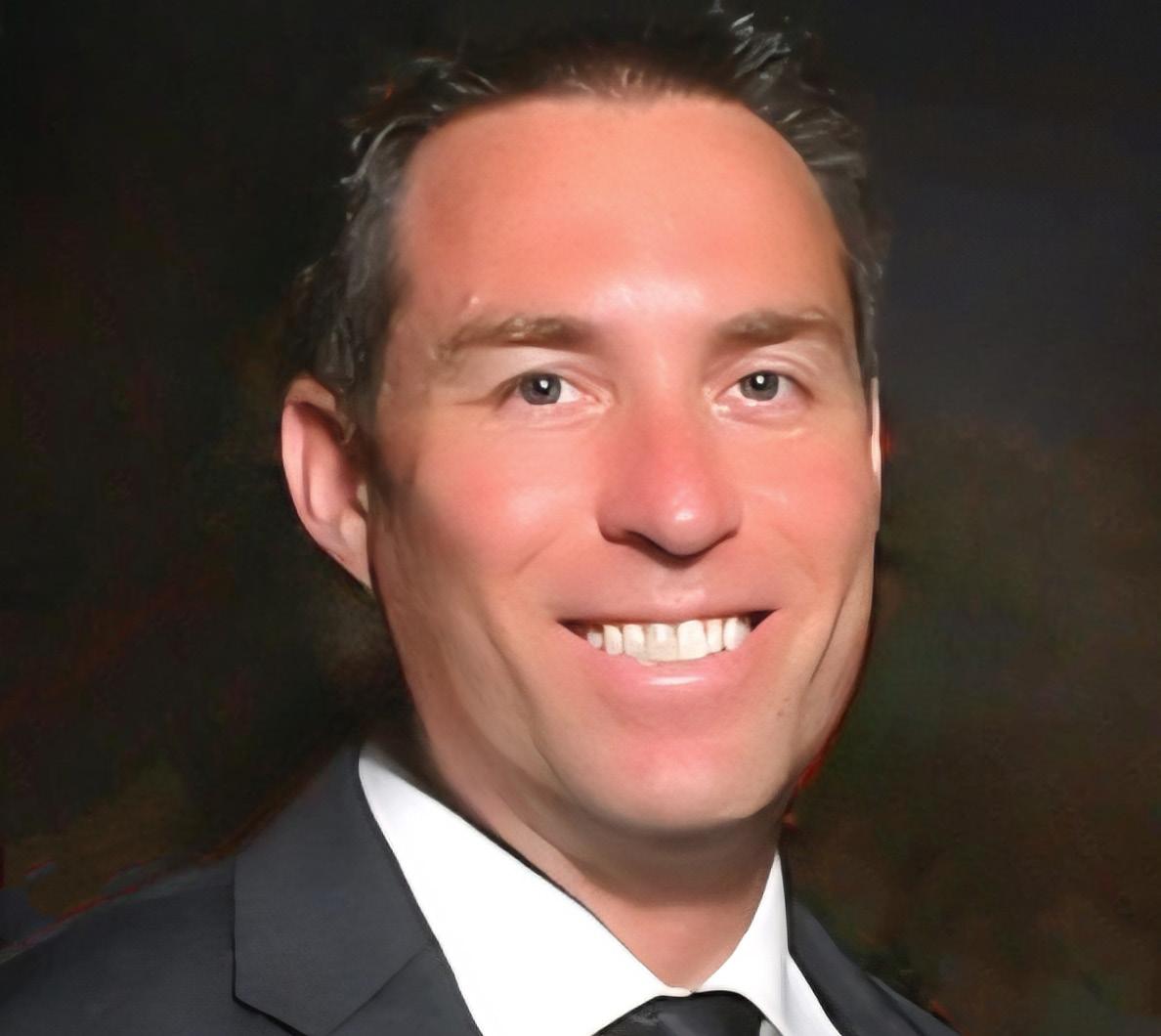
Can you share your career path and what led you to your current role as Lead Global Sourcing Director at Select Technology Inc.?
That’s a fantastic question, and it comes with a pretty interesting answer.
For a long time, I wasn’t particularly interested in what you might call a “real-world” career. I was laser-focused on my childhood dream of becoming a professional baseball player. I even got the chance to pursue that dream when I was drafted, which felt like the culmination of everything I had worked toward. Unfortunately, due to unforeseen circumstances, I couldn’t take that dream as far as I had hoped.
Once baseball was no longer in the picture, I knew it was time to channel my energy into something else. I turned to my degree in management and found myself at Select Technology, diving headfirst into the fascinating world of electronics. What began as a shift in direction quickly turned into something far more fulfilling, a career I never expected, but one I’ve come to truly embrace.
How does your role contribute to Select Technology’s mission of providing full-service solutions for electronic component needs?
My role is a critical part of the supply chain, as I manage the day-to-day communication and coordination with both our OEM and CEM partners. I’m responsible for developing tailored onboarding and execution plans for each customer, because no two supply chains operate the same way. Each client has unique procurement requirements, whether it’s component testing standards, date code or country-of-origin restrictions, specialised packaging, mineral compliance, or navigating tariffs. My job is to manage all these variables efficiently and proactively, ensuring the process is seamless for the customer. Especially during time-sensitive situations, I aim to simplify the complexity so their teams can stay focused on production without added stress.
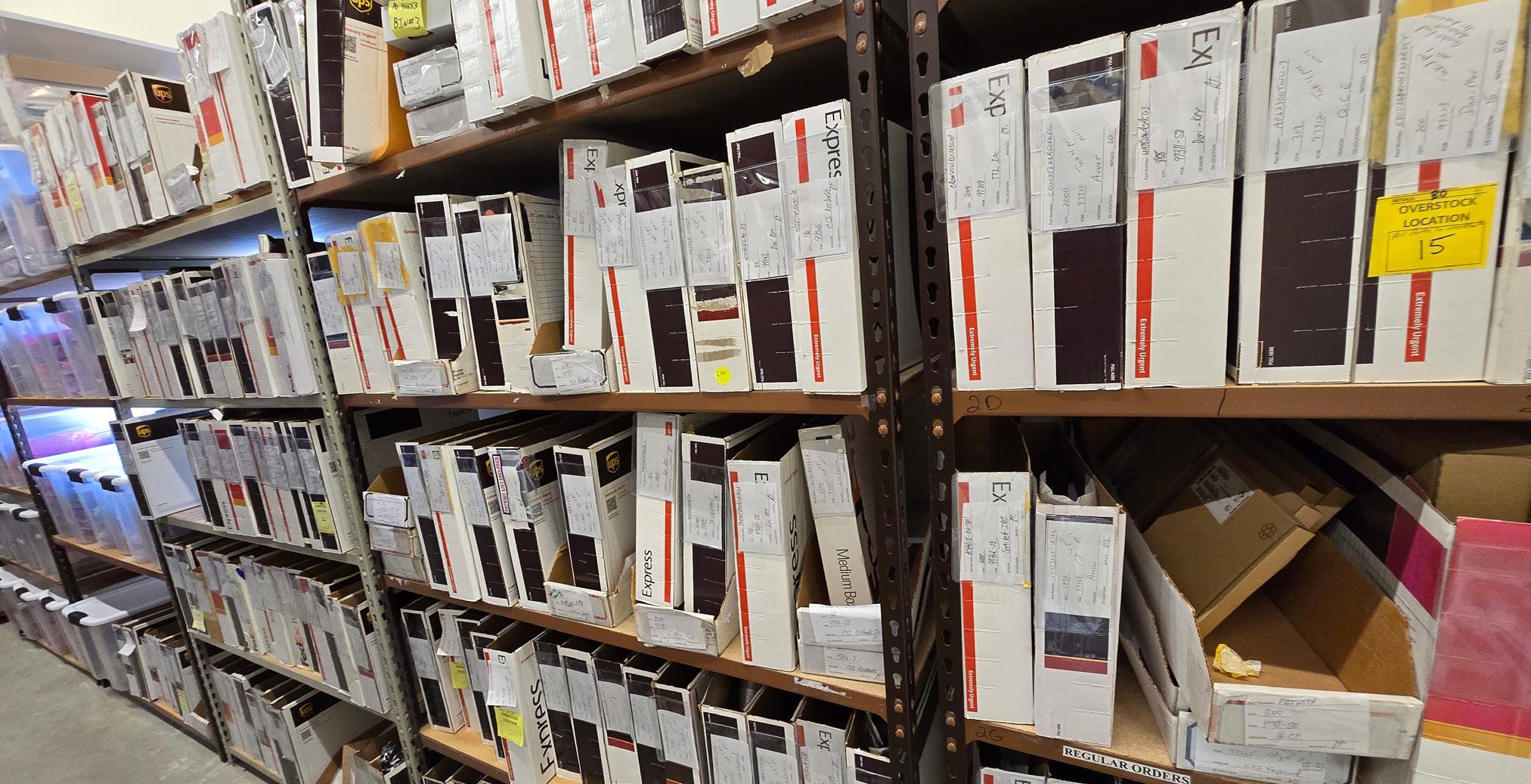
Select Technology emphasises proactive approaches to obsolescence and end-of-life (EOL) component management. Can you elaborate on the O.E.M. program and how it benefits your clients?
Part of my role when working with OEMs and their contractors is to build strong relationships across both ends of their supply chain. We’re not just supporting procurement, we’re also involved in reverse logistics. This gives us access to our OEM partners’ global inventory, including parts that may be endof-life (EOL) or obsolete from the manufacturer’s perspective. That opens the door for us to source components that are no longer in production but are still critical for ongoing builds.
This capability allows our customers to avoid costly and time consuming boards. In industries like medical, aerospace, and defense, where older products remain in use and essential, our support can even extend to repair or redesign efforts. It’s a very strategic approach to sourcing hard-to-find parts while also mitigating the risk of counterfeit components entering the supply chain.
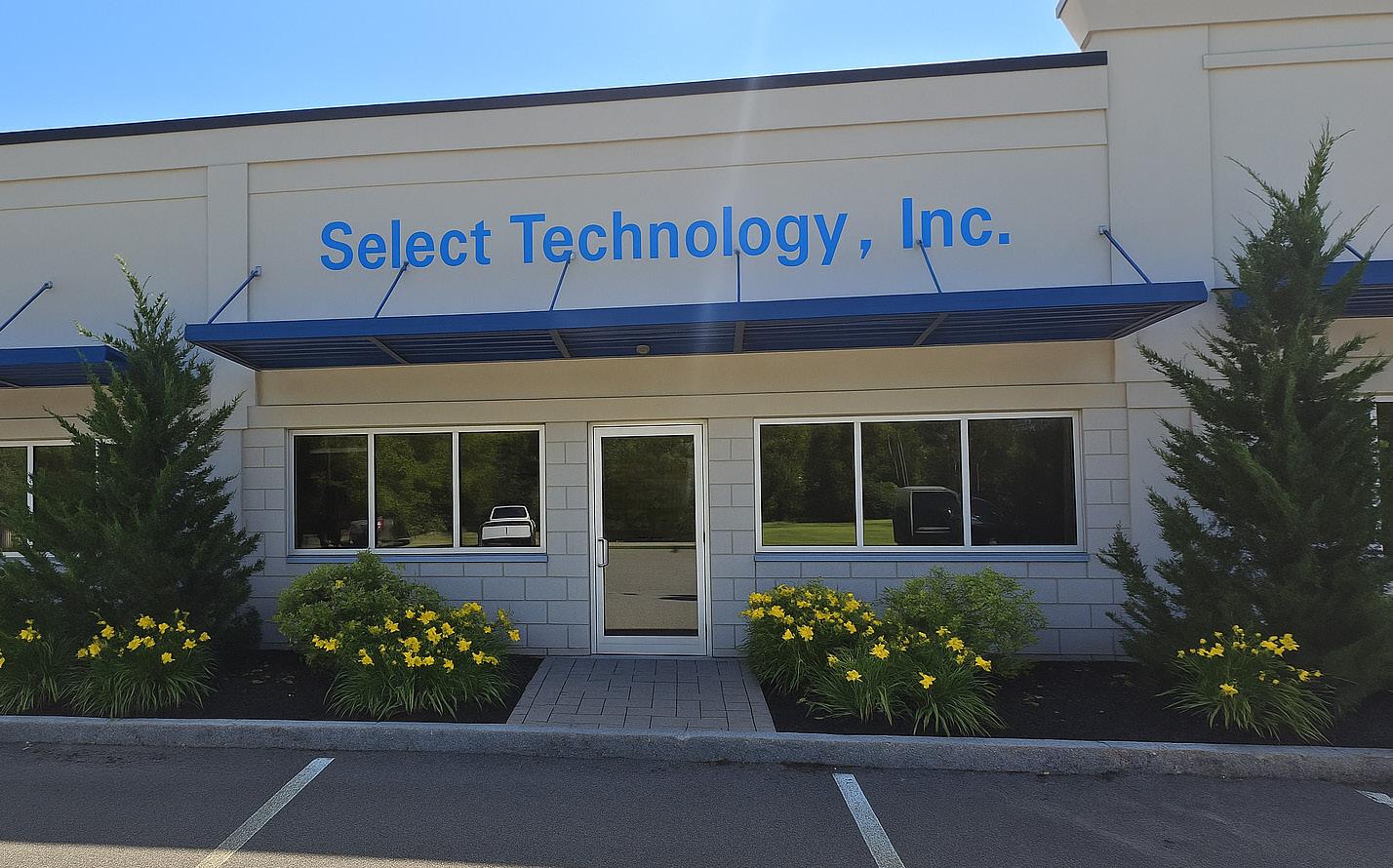
What strategies do you employ to build and maintain strong relationships with suppliers, ensuring they meet Select Technology’s quality standards?
This is another great question, and one that truly sets us apart from many of our competitors. At Select Technology, we live by the motto: “Quality is always first.” We’ve found that continually reinvesting in our quality standards has been a key factor in our success over the past 25+ years in the industry.
Maintaining strong relationships, whether with customers or suppliers, takes consistent effort and flexibility. We’ve always leaned more toward the ‘give’ side of the equation, because we recognise that our customers’ quality expectations are constantly evolving. To maintain strong, long-term partnerships, we adapt right alongside them.
On the supplier side, we hold the same high standards. Any supplier that wants to work with us must meet strict quality criteria to even be considered for our Approved Vendor List (AVL).
Ultimately, staying competitive and relevant in this space means understanding the changing demands on both the sourcing and supply sides, and ensuring we’re always evolving with them to keep our supply chain thriving.
How do you identify and mitigate risks within the sourcing process, especially considering the volatility of the electronic components market?
This really comes down to how we carefully vet and select our vendors. We follow a rigorous qualification process and only work with suppliers who meet strict quality designations. We don’t take unnecessary risks when it comes to the parts we procure, because from a business standpoint, the potential downside simply isn’t worth it.
Another key advantage we have is our global network of trusted component testing partners. If a part ever raises concerns during our internal QC process, we can quickly route it through one of our accredited testing facilities. These partners are highly trained to test components to the exact standards required by our customers, which significantly reduces risk.
Combining our in-house quality control with these trusted third-party relationships gives us a major edge, especially when dealing with market volatility, like what we experienced during the COVID-19 pandemic. It’s that layered approach to quality and risk management that really sets us apart.
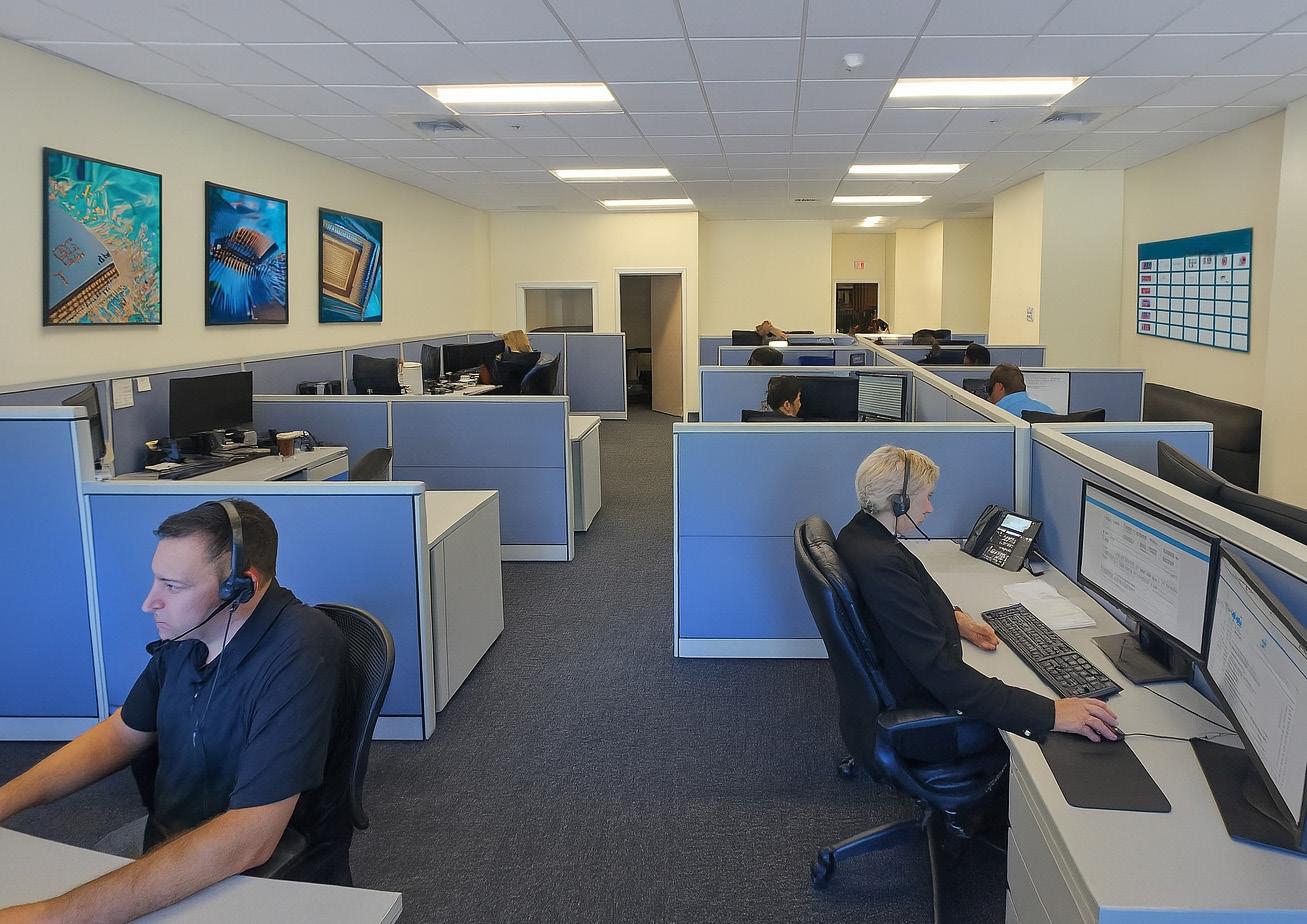

In what ways has technology been integrated into your sourcing processes to enhance efficiency and transparency at Select Technology?
At Select Technology, we’ve integrated technology into every layer of our sourcing process to boost both efficiency and transparency. We use real-time inventory tracking and global sourcing tools to quickly assess availability, lead times, and pricing across regions, which helps streamline decisionmaking.
Our vendor vetting process is also supported by digital platforms that track supplier certifications, performance metrics, and compliance documentation. This ensures that only high-quality, reliable vendors are added to our Approved Vendor List (AVL).
In terms of quality control, we’ve partnered with accredited testing labs that use advanced inspection technologies. These partnerships, combined with our internal QC processes, allow us to thoroughly verify components and significantly reduce the risk of counterfeit or non-conforming parts.
Technology has become essential in helping us stay agile, especially in a market where conditions can change quickly. It enables us to make informed decisions faster and maintain the high standards our customers expect.
How does your team stay agile and responsive to market fluctuations and global supply chain disruptions?
As a team, one of our key responsibilities is staying closely attuned to which types of parts are moving in the market, as well as monitoring factory lead times and overall production conditions. The electronics market is inherently cyclical, shifting from periods of strong demand to slower, downmarket phases. While it’s not an exact science, our team’s close connection to the ground level allows us to identify early indicators of supply chain changes on a global scale.
We also maintain strong relationships with manufacturers, which gives us access to accurate, realtime data on stock levels versus lead times. This insight helps us understand which components are trending and which may be slowing down.
When unexpected disruptions occur, such as natural disasters, we immediately assess which product categories are impacted and proactively inform our customers about potential risks. That kind of responsiveness helps them make informed decisions and avoid production delays.


What measures are in place to ensure your sourcing team remains skilled and knowledgeable about the latest industry trends and best practices?
Our team is committed to staying as informed and adaptable as possible, because we know that a deep understanding of our customers’ needs is key to delivering real value. We foster a collaborative environment where open communication is constant, whether we’re sharing customer feedback, discussing market trends, or comparing lead times. That kind of teamwork keeps everyone aligned and sharp.
We also make it a priority to stay educated on the broader market by regularly reading industry publications and reports. This helps us anticipate shifts in demand and proactively support our customers.
From a leadership standpoint, we focus on continuous improvement through internal audits and performance reviews. These processes help us identify areas where we can enhance efficiency, refine execution, and ultimately strengthen our service. In such a fast-moving industry, adaptability is essential. By working as a cohesive team and staying close to both the market and our customers, we’re able to pivot quickly and lead with confidence.
Select Technology aims to be a long-term partner throughout the supply chain cycle. Can you discuss how collaborations with core partners have enhanced your service offerings?
I’m a strong believer that if you want to be the best, you need a village, both internally and externally. That’s why we’ve built close partnerships with people and organisations that share our core values and can be trusted to deliver. No one can be an expert at everything, and I don’t think success comes from trying to do it all alone.
We’re intentional about outsourcing tasks where others have deeper expertise. I always say, “If you want something done right the first time, give it to the person best equipped to do it.” In business, that often means putting ego aside and recognising that collaboration leads to better outcomes.
This may not always be the most streamlined approach on paper, but it consistently delivers the best results, because in the end, what matters most is meeting our customers’ needs and helping them move forward with confidence.
Looking ahead, what are your key objectives for advancing the sourcing function at Select Technology, particularly concerning innovation and sustainability?
Like any organisation, our goal is growth, but achieving that on the sourcing side requires constant adaptability. The pace of change, especially with the rise of AI-driven platforms, has accelerated significantly. While some see this as a threat, I believe it’s an opportunity. Embracing technology instead of resisting it allows us to improve processes across the entire supply chain, from procurement to quality control.
At Select Technology, we don’t shy away from change. We’re focused on finding how innovation fits our space and using it to create smarter, more efficient solutions for both our customers and suppliers. The industry will continue to evolve, and it’s up to us to evolve with it, or risk falling behind. We’re committed to staying ahead by pushing our limits, exploring new tools, and always looking for ways to bring more value to our partnerships.

Select Technology is the preferred global stocking distributor, leading the way by providing a full service solution for your component needs. Our goal is to be your long term partner through the entire supply chain cycle, from initial demand through final asset recovery. Whatever your needs are, whenever your needs are, we are there. Our highly trained staff make themselves available to our partners 24/7.

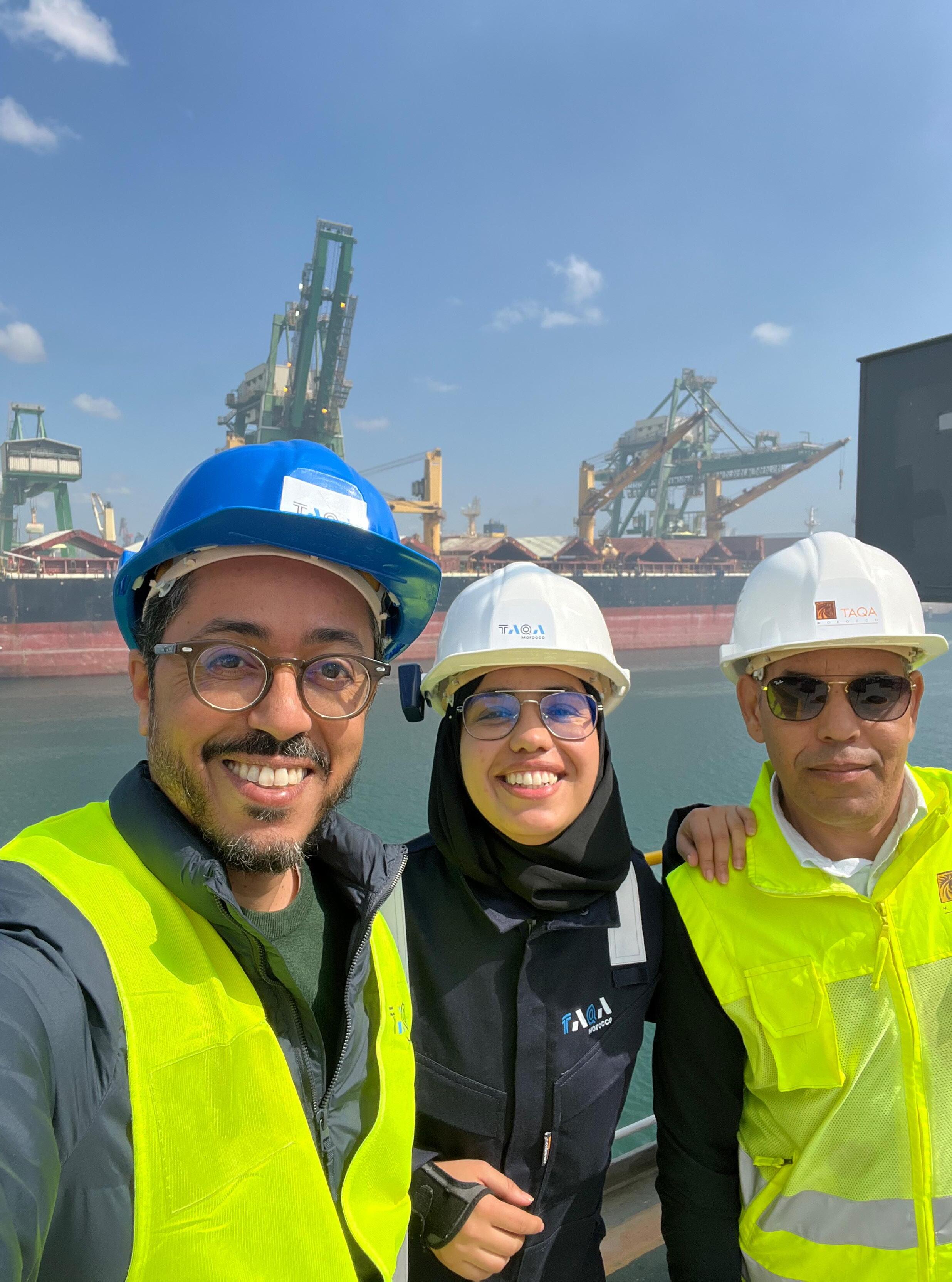
Mohamed Berrechid on Strategic Sourcing
Leadership at TAQA Morocco
In this Executive Insight, Mohamed Berrechid, Procurement & Contracts Director at TAQA Morocco, shares his strategic perspective on procurement’s evolving role in the energy sector. From leading digital transformation and driving sustainability, to managing global supply chain risks and supporting Morocco’s national energy goals, Mohamed offers practical, forward thinking advice shaped by years of industry experience. His approach is rooted in efficiency, transparency, and resilience, with a clear focus on aligning procurement with broader business and environmental objectives.
Can you share your career path and what led you to your current role as Procurement & Contracts Director at TAQA Morocco? How have your previous experiences shaped your approach to procurement and contracts management?
As the Procurement & Contracts Director at TAQA Morocco, I’m privileged to lead strategic sourcing and contract management for a company that plays a pivotal role in Morocco’s energy sector, contributing to nearly 35 percent of the national electricity demand. My career has been shaped by a passion for optimising supply chains and fostering sustainable partnerships, which has culminated in this exciting and impactful role.
My journey began at Prudent Consultants, where I worked as a consultant in the energy sector. There, I developed a strong foundation in supplier relationship management and contract negotiation. Early in my career at TAQA Morocco, I worked in business development and was an integral part of the team that negotiated major EPC contracts, including closing the Africa Power Deal of the Year in 2015. That experience taught me the importance of aligning procurement strategies with broader organisational goals, a principle I continue to uphold today.
Joining TAQA Morocco felt like a natural progression, given its commitment to sustainable energy and operational excellence. I was drawn to the company’s leadership in private power generation and its strategic focus on low carbon initiatives, which aligns with my own passion for driving impactful procurement strategies. My previous roles equipped me to navigate the complexities of the energy sector, from managing high stakes contracts to fostering supplier relationships that support long term sustainability goals.
My approach to procurement and contracts management is rooted in three pillars: efficiency, transparency, and strategic alignment. I leverage digital tools to streamline processes, as demonstrated by TAQA Morocco’s shift from manual to digital RFx communications, which reduced administrative time by over 200 percent. I also prioritise building strong supplier partnerships to ensure reliability and compliance, drawing from my experience negotiating contracts in high pressure environments. Finally, I ensure our procurement strategies align with TAQA Morocco’s broader objectives, such as supporting the country’s energy transition through sustainable sourcing practices. Looking ahead, I am excited to continue driving TAQA Morocco’s strategic procurement excellence, contributing to its mission of delivering reliable, competitive, and decarbonised energy. My diverse experiences have prepared me to navigate the evolving energy landscape, ensuring our supply chain supports both operational success and environmental stewardship

Procurement is vital in ensuring the reliability of energy production. How does your team support TAQA Morocco’s commitment to delivering 35 percent of the nation’s electricity from 18 percent of the installed capacity?
Our team manages complex supply chains, ensuring the reliable procurement of strategic commodities, primarily fuel and coal, at the best possible cost and in the most efficient and dependable manner. This commitment to operational excellence and attention to detail enables uninterrupted supply to the Jorf Lasfar power complex, allowing our operations teams to keep the lights on 24 hours a day, seven days a week.
We work closely with our colleagues in port operations and at the power plant to adapt our supply approach to operational realities, particularly when it comes to managing environmental requirements. We ensure that the commodities we procure support compliance with emissions regulations while delivering optimal energy output.
Sustainability is increasingly important in the energy sector. How is TAQA Morocco integrating sustainable practices into its procurement and supply chain operation?
Sustainability is indeed a major priority for us, and we place great emphasis on embedding it across our operations. TAQA Morocco aims to reduce its carbon intensity by 25 percent by 2030, an ambitious target that reflects the company’s forward thinking and innovative approach.
We work closely with our colleagues in port operations and at the power plant to adapt our supply approach to operational realities
At our existing facilities in Jorf Lasfar, the company has invested tens of millions of dollars in environmental equipment and fully complies with the World Bank’s strictest standards on emissions. TAQA Morocco is also undertaking a large scale renewable energy development program, including the installation of both wind and solar power, with five solar sites under the Noor PV II initiative.
From a procurement perspective, we integrate sustainability directly into our sourcing process. Our RFP documents include technical specifications related to sustainability, and during supplier vetting we ensure that environmental standards, particularly around emissions management and pollution control, are applied and respected. We also place strong emphasis on ethics and compliance as part of our supplier evaluation.

What strategies do you employ to build strong, transparent relationships with suppliers, and how do you ensure they consistently meet the high standards required for quality and safety in energy production?
We work very closely with our suppliers to build strong relationships based on a win win mentality. We promote open dialogue at all times and aim to resolve issues collaboratively and swiftly. To ensure the highest standards, we make sure that our contracts clearly outline expectations, procedures, and control mechanisms. This allows us not only to set the required standards but also to define how compliance with those standards will be monitored and enforced.
For example, in terms of quality, we apply a number of very specific standards, with each parameter clearly defined so that any deviations can be tracked and measured. Non compliance is addressed either through penalties or the rejection of non compliant products. We conduct rigorous quality checks at multiple points, including loading ports, mines, and discharge port locations, to ensure consistency. Additionally, we rely exclusively on certified and internationally recognised laboratories for quality control testing.
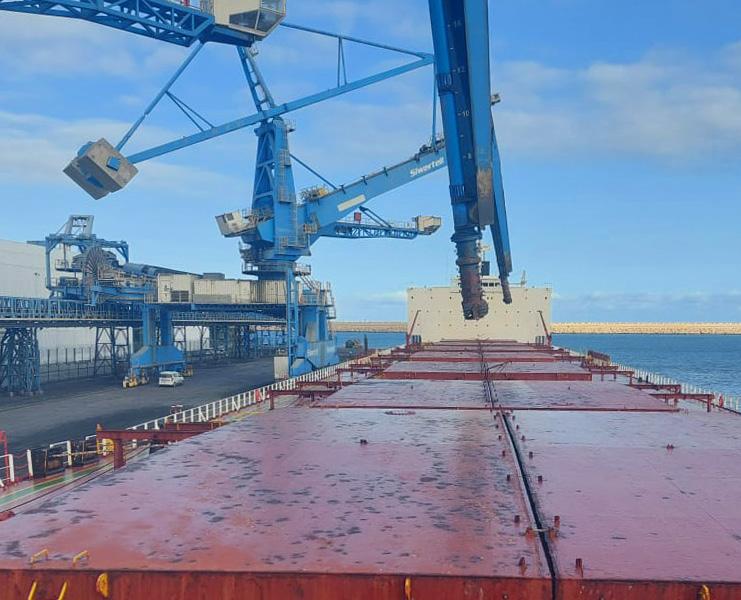
Our operations concentrate predominantly on the trading of steam coal, petroleum coke, coking coal and met coke, with major investment made in the latter two.
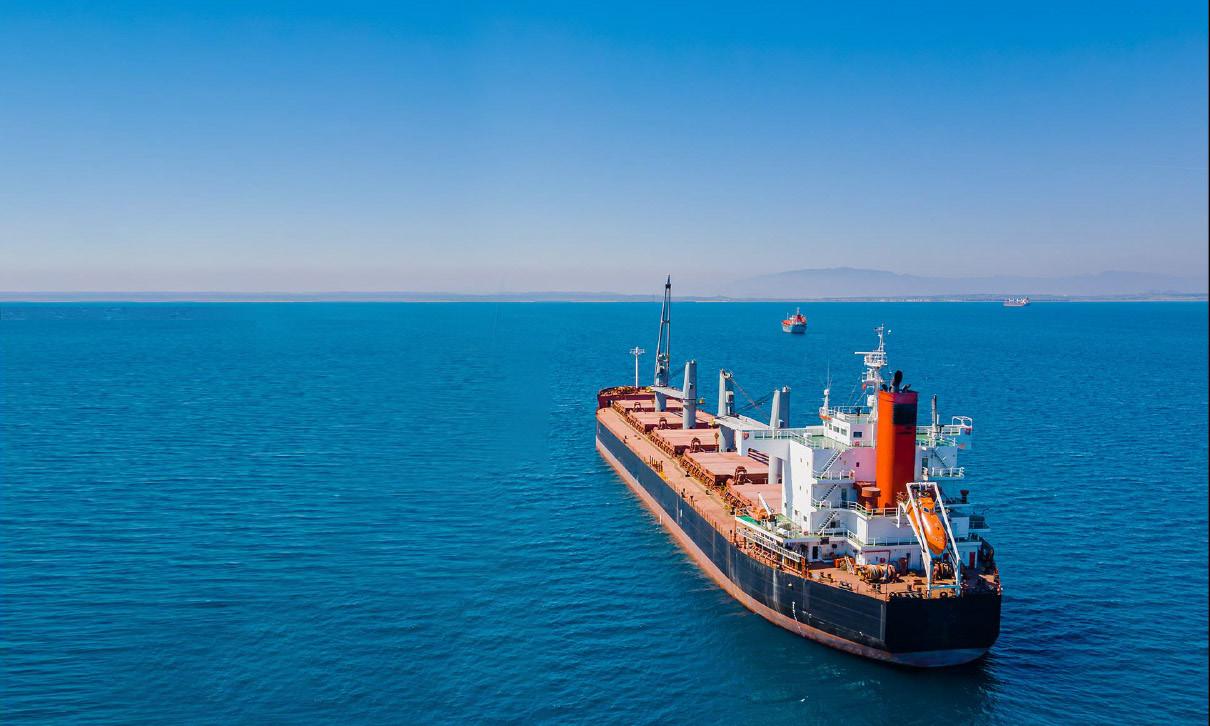
With over 30 years of experience, Bulk Trading SA has established itself as a trusted name in the global energy commodities market. Founded in 1994 and headquartered in Switzerland, the company specialises in the trading and transportation of solid fuels, offering dependable supply chain solutions to customers across the world.
Bulk Trading’s core expertise lies in the trading of steam coal, coking coal, metallurgical coke, and petroleum coke—products essential to the global energy and industrial sectors. Over the years, the company has expanded its portfolio to include emerging commodities such as biomass, clinker, cementitious materials, and granulated blast furnace slag (GBFS), supporting the evolving needs of its customers.
With offices and partners spanning Europe, Asia, and the Americas, Bulk Trading combines its global reach with a localised approach to service. Its in-house shipping division provides tailored logistics and maritime solutions—not only for its own trading operations but also to third-party clients requiring reliable vessel access for products such as cement and wheat.
Built on a foundation of long-term relationships and consistent performance, Bulk Trading continues to support customers in navigating complex commodity markets with confidence. The company’s commitment to reliability, flexibility, and market insight makes it a go-to partner in the energy space.
To learn more, visit www.bulktrading.ch or reach directly at info@bulktrading.ch.

How is TAQA Morocco leveraging digital technology to enhance supply chain operations, and what recent advancements have had the most significant impact on efficiency and transparency?
TAQA Morocco has embarked on a company wide digitalisation initiative that spans every department and process. In the energy supply chain, we have fully digitalised our inbound logistics, moving from paper intensive processes to digital tools that allow us to track shipments in real time and maintain clear visibility of our inventory status. This digital transformation has enabled us to improve logistics costs and make more informed decisions regarding incoming shipments, ultimately saving money on demurrage, or vessel wait times. TAQA Morocco has been one of the first movers in digitalising inbound supply chain operations in Africa, and we are very proud of that achievement.
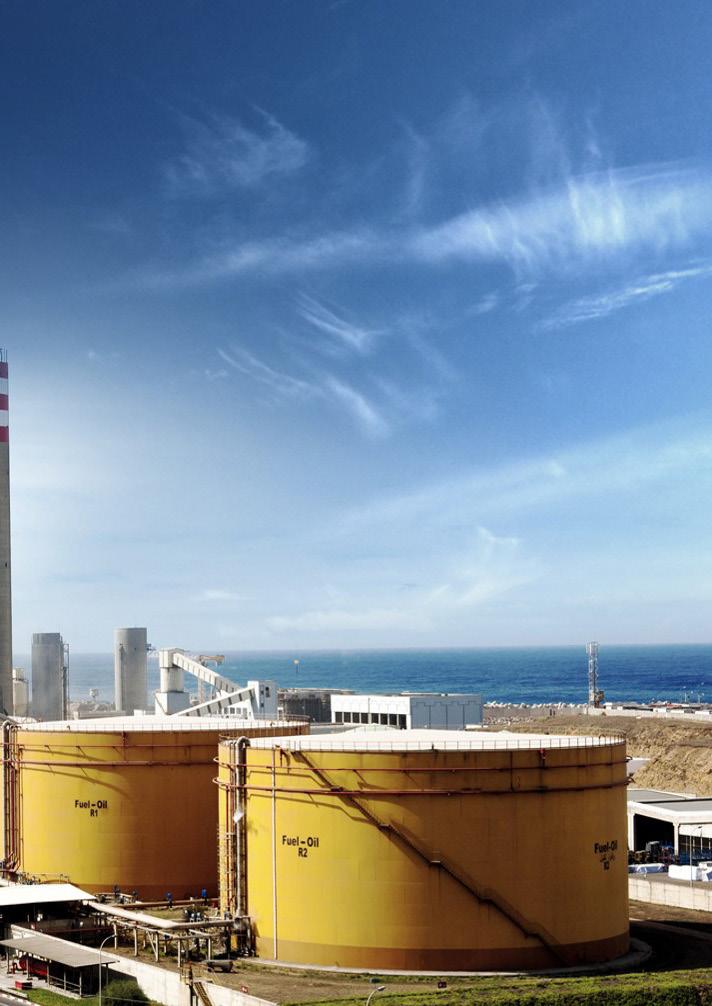
With the complexities of global supply chains, how does TAQA Morocco manage risks to ensure continuity and resilience in its procurement and contracts operations?
Our supply chain, like that of many industrial peers, has faced numerous challenges and pressures stemming from events such as the COVID 19 pandemic, geopolitical tensions in the Middle East, and natural disasters like floods and earthquakes. While these events are often beyond our control in terms of cause and effect, we’ve developed procedures that help us maintain resilience in the face of adversity. We ensure our geographic sourcing footprint is as broad as possible, for example by entering into multi origin commodity contracts. We also maintain a robust inventory to buffer against sudden supply disruptions and have agreements in place with partners for alternative sourcing, whether through different ports or storage locations. In addition, we regularly track, review, and address risks in a structured and systematic manner, working closely with our Risk Management team at TAQA Morocco to ensure ongoing supply chain resilience.
What unique challenges do you face in procurement for the energy industry, and how does TAQA Morocco address these to maintain a competitive edge?
The energy industry is evolving rapidly, especially with the strong push toward renewable energy. Technological advancements and changes in equipment require us to be adaptable and proactive to maintain our competitive edge. While many of the challenges we face are similar to those in other industries, such as supply chain disruptions, cost pressures, and regulatory demands, overcoming them requires an agile and flexible approach. We must be able to respond to changes in the landscape quickly and effectively. To achieve this, it’s essential to have the right data and tools in place to capture value wherever possible. This is why digitalisation plays such a critical role in our strategy. It enables better decision making, improves efficiency, and supports continuous improvement in procurement performance.
What trends do you see shaping the future of procurement and supply chain management in the energy sector, and how is TAQA Morocco preparing to adapt to these changes?
Digitalisation is a major trend, and TAQA Morocco is fully committed to this transformation. In our energy supply chain, we have already digitalised all core processes, including tendering, procure to pay, and overall supply chain management.
We also believe that artificial intelligence will have a significant impact on procurement. We are actively exploring how AI can support more informed, data driven decision making. AI tools will help us analyse our supply chain, identify inefficiencies, and propose alternatives and solutions to resolve bottlenecks. In addition, AI will enable greater automation by handling repetitive, manual tasks, allowing our teams to focus on higher value activities and improving overall efficiency across procurement operations.

TAQA Morocco is a significant player in the country’s energy sector. How does your procurement strategy support the broader economic development goals of Morocco?
TAQA Morocco’s energy procurement strategy is fully aligned with the broader economic development goals of the country. Our aim is to produce electricity at the lowest possible cost, while maintaining the highest levels of quality, reliability, and sustainability.
By providing reliable and competitively priced energy, we help enable Morocco’s continued economic growth and industrial development. Energy is a foundational driver of progress, and our role in supporting that through strategic procurement is something we take great pride in.
TAQA Morocco’s energy procurement strategy is fully aligned with the broader economic development goals of the country.
As a leader in procurement and contracts, what advice would you give to those looking to advance their careers in this field, especially within the energy industry?
My advice is simple: get involved, learn the trade, be open to new technologies, build strong relationships, and always aim to add value to those around you and to your organisation.
The energy industry is a fantastic place to build a career. There will be many opportunities in this sector, and young professionals are very much needed. While energy specific procurement does have its unique aspects, it is not fundamentally different from procurement in other industries. Those specificities can be learned by anyone willing to put in the time and effort.
TAQA Morocco, part of the TAQA Group, is a leading power and water utility company in Morocco. Through its subsidiaries MASEN and AMEPA, TAQA engages in renewable energy development, water desalination, and regional power distribution. Committed to sustainability and innovation, the company supports Morocco’s transition to clean energy and reliable infrastructure.

Mohamed Berrechid Procurement & Contracts Director